Thursday, August 29, 2013
Center 10:00am – 5:00pm











 Edmund D. Bossone
Edmund D. Bossone
Research
2
Table of Contents
Schedule of Events
6
A Message from the Director & Dean
7

2012 Outstanding Mentor of the Year: Dr. Jean-Claude Bradley
8
STAR Scholar Abstracts (by Faculty Mentor’s department)
Antoinette Westphal
11
3
p.
p.
p.
College
p.
Architecture & Interiors p. 11 Center for Creative Research p. 14 Design & Merchandising p. 15 Fashion Design p. 17 Film & Video p. 19 Graphic Design p. 20 Interactive Digital Media p. 21 Product Design p. 26
College of Business p. 28 Accounting p. 28 Decision Sciences p. 29 Economics p. 31 Finance p. 32 Management p. 37 Marketing p. 44
of Media Arts & Design
Bennett S. Lebow

4
STAR Scholar Abstracts ( cont. ) (by Faculty Mentor’s department) College of Arts & Sciences p. 45 Biodiversity, Earth, & Environmental Science p. 45 Biology p. 49 Chemistry p. 61 Culture & Communication p. 64 History & Politics p. 67 Mathematics p. 69 Physics p. 72 Psychology p. 76 College of Engineering p. 77 Chemical & Biological Engineering p. 77 Civil, Architectural, & Environmental Engineering p. 89 Computer Science p. 91 Electrical & Computer Engineering p. 92 Materials Science & Engineering p. 103 Mechanical Engineering & Mechanics p. 111 College of Nursing & Health Professions p. 124 Nursing p. 124
Table of Contents
Indexes: By Student College, by Student Major, by Poster Session & Student College

5
STAR Scholar Abstracts ( cont. ) (by Faculty Mentor’s department) Drexel University College of Medicine p. 125 Biochemistry & Molecular Biology p. 125 Dermatology p. 131 Microbiology & Immunology p. 132 Pharmacology & Physiology p. 133 Earle Mack School of Law p. 137 Goodwin School of Professional Studies p. 138 Sport Management p. 138 iSchool: College of Information Science & Technology p. 139 Leibnitz Institute for New Materials p. 143 School of Biomedical Engineering p. 148 School of Education p. 163
Table of Contents
p.
166
Schedule of Events
10:00am – 12:00pm

Poster Session A
Bossone Research Center
First Floor Lobby
12:00pm – 1:30pm
Luncheon for STAR Scholars & Mentors
Bossone Research Center
Third Floor Atrium
1:30pm – 3:30pm
Poster Session B
Bossone Research Center
First Floor Lobby
4:00pm – 5:00pm
Recognition Ceremony
Bossone Research Center
Mitchell Auditorium
6
The STAR Scholars Program is administered by the Office of Undergraduate Research, a unit of the Pennoni Honors College.
A Message from the Director & Dean


Welcome to the 2013 STAR Scholars Summer Showcase.
Over the past eleven years of the STAR Scholars Program, we have seen the wonderful effects of undergraduate research – not only on our students and their faculty members, but on our Drexel community, the City of Philadelphia, and our wider world. Since the Program’s inception, nearly 1,000 Drexel students have launched their careers through the STAR Scholars Program, and our STAR Alumni continue to do great things in academia, in the health industry, in non- profits, and in business. This year, 2003 STAR Alumnus Amol Sathe served as lighting supervisor for Paperman , winner of the 2013 Academy Award for Best Animated Short Film, while 2005 STAR Alumnus James Malazita is serving as a STAR Mentor and faculty member in the Department of Culture and Communi cation. We are confident that our 2012- 13 class of STAR Scholars will shine as brightly one day
This year, 154 STAR Scholars have completed faculty -mentored projects, working in 11 colleges and schools. Under the direction of their outstanding mentors, our rising sophomore researchers have helped to explore the neurobiology of army ants, have enabled our HUBO humanoid robots to improve their walking and wrist movements, have woven spider silk into new textiles, and have expanded opportunities in the emerging field of Digital Cultural Heritage. For the first time, six students travelled internationally to complete their STAR projects in Germany, Costa Rica, and Crete.
Each summer, as we meet with our STAR Scholars, we see them grow in competence, confidence, and maturity as they begin to reimagine their lives as a result of this extraordinary experience. It is our hope that, as you see the result of their work, you are inspired, as well.
Dr. Suzanne Rocheleau, Director Dave Jones, Dean Office of Undergraduate Research Pennoni Honors College
7
Outstanding STAR Mentor of the Year
The critical piece of the STAR Scholars Program that makes it such a valuable experience for the students is, without a doubt, their Mentors. The STAR Mentors give so much to their students’ summer experiences and do so with no compensation.
In Summer 2011, the Office of Undergraduate Research created a process to recognize the STAR Mentors and to particularly celebrate the Outstanding Mentor of the Year. STAR Scholars are given the opportunity to nominate their faculty mentors or graduate student me ntors for the “Outstanding Mentor of the Year” award, which provides the winner with a $1,000 award to further his or her research with undergraduate students.
Each nominated Mentor receives a letter signed by Provost Greenberg that outlines the com mon characteristics held by all nominated Mentors, and each letter includes excerpts from the students’ nomination letters to provide an individualized account of just how these Mentors have contributed to those specific students’ experiences. Based on these nominations, outstanding Mentors:
• Are passionate experts in their field who freely share their expertise with students
• Care deeply about their students and treat them with respect
• Generously foster students’ intellectual and professional development

• Actively engage students in learning and celebrate their success
• Go above and beyond in supporting their students
All of our Mentors go beyond the call in their work with STAR Scholars, and we are genuinely grateful for the time and effort they commit to furthering the education of undergraduate students.
8
2012 Outstanding STAR Mentor of the Year
Dr. Jean -Claude Bradley


Dr. Jean- Claude Bradley is an Associate Professor of Chemistry at the College of Arts and Science at Drexel University. He has a Ph.D. in organic chemistry and has published articles and obtained patents in the areas of synthetic and mechanistic chemistry, gene therapy, nanotechnology and scientific knowledge management. Dr. Bradley leads the UsefulChem project, a synthetic organic chemistry initiative started in 20 05 to make the scientific process as transparent as possible by publishing all research work in real time to a collection of public blogs, wikis and other web pages; he coined the term Open Notebook Science (ONS) to distinguish this approach from other more restricted forms of Open Science. In 2008, Dr. Bradley created the ONS Solubility Challenge to crowd source the measurement of nonaqueous solubility. Sponsored by Submeta, Sigma- Aldrich, Nature and the Royal Society of Chemistry, the ONS Challenge has resulted in the publication of a book combining the results of 12 student award winners from the U.S. and the U.K.
In Summer 2012, Dr. Bradley was awarded the "Outstanding Mentor of the Year" Award for his work with STAR Scholar Matthew McBride. He has mentored numerous STAR Scholars in the past few years and expresses that “it has always been a beneficial experience for both [him] and the students.” Dr. Bradley was recognized on behalf of his commitment to the students' academic growth throughout their STAR experiences. Matthew McBride recognized “Dr. Bradley’s willingness to work beside [him] … and to verbally lead [him] step by step through an experiment. Dr. Bradley gave [him] his time and attention, but a llowed [Matthew] to perform the experiment.” After his STAR experience, Matthew McBride believes he has “gained new skills that [he] will be able to use for the rest of [his] life.” We recognize Dr. Bradley’s commitment to the education of Matthew McBride and other undergraduate students and are proud to have named him an official Outstanding STAR Mentor of the Year in 2012.
9
10
Antoinette Westphal College of Media Arts & Design

In order to bridge the gap between Drexel University and its northern neighbors, Powelton Village and Mantua, our research team analyzed the area. Urban universities frequently have poor relationships with their surrounding communities according to Jane Jacob’s book “The Death and Life of Great American Cities.” As Drexel progresses with its Campus Master Plan, the surrounding neighborhoods struggle to keep up. While Powelton Village is relatively stable; Mantua has a high school graduation rate of 33%, over 1000 vacant lots and houses, and at least 5 homicides since 2011.
Our team inter viewed organization leaders, performed site visits and researched precedent programs such as the Mural Arts Program, Habitat for Humanity and Drexel’s Dornsife Center. We have created an interactive map that future architects, developers and Drexel students can utilize. These map layers contain criminal activity, public transportation, income, history, land use, Philadelphia Green lots, Drexel-owned properties , etc.
Because Philadelphia at large is repopulating, these neighborhoods have potential to g row, but are at risk of being over-developed and over -priced. With our map, developers like Drexel can be knowledgeable when building. Looking forward, Drexel, Mantua , and Powelton Village have potential to further develop its community and its relationshi p with one another.
Lin
AWCOMAD



Architecture
Ms. Rachel Schade
Faculty Mentor
Architecture & Interior Design
Mr. Simon
Tickell
Faculty Mentor
Architecture & Interior Design
Drexel and its Surrounding Communities: Rekindling through Interactive Mapping Poster
Connie
Session
A
Antoinette Westphal College of Media Arts & Design



 Maria Ross AWCOMAD Architecture
Maria Ross AWCOMAD Architecture
Ms. Rachel Schade

Faculty Mentor
Architecture & Interior Design
Mr. Simon Tickell
Faculty Mentor
Architecture & Interior Design
Bridging the Gap Between Urban Campuses and Their Surrounding Neighborhoods Through Interactive Mapping Poster Session A
Urban universities historically struggle with their surrounding neighborhoods: trying to serve the needs of the academy while not disrupting what are frequently under-served communities. Although universities support neighborhoods with resources that wouldn't be otherwise available, existing communities often interpret this as offensive or demeaning. Drexel experiences this with Powelton Village and Mantua as t he campus extends north. Drexel envisions its urban extensions as sharing “expertise and knowledge mutually in a new model of university-community partnership.” As architects, our research team decided that for healthy development in these communities, there must be a deep and mutual understanding of what already exists. For our project, we created a tool for future developers, architects, and students who are looking to build in, improve, or learn about the neighborhood. We created an interactive series of map layers with information useful to develop projects, whether it is deciding where to build a community center, the best place for a grocery store, or a location for Habitat for Humanity to build their next home. Our layers include land use, transportat ion routes, criminal activity, property lines, Mural Arts projects and more. We hope the existing community is considered when Drexel develops northwards in order to strengthen relationships.
Antoinette Westphal College of Media Arts & Design





Studio for Immersive Design and Engagement: Participatory Design
Participatory and human centered design methods consider real human issues that are often overlooked during the more conventional design process. By using these methods, designers are able to incorporate solutions to health and human based problems into their project. I chose to focus on this topic for my STAR research because I believe that successful design goes beyond the physical form of a project, and I wanted to learn how to apply similar techniques to my design processes in the future. As part of my exploration, I investigated the process of behavior mapping, and completed my own series of behavior maps at Drexel’s Hagerty Library. During each visit, I would note movement patterns within the space, as well as the areas of high and low densities of peo ple. My mentors and I also participated in an online course offered by IDEO, called Human Centered Design for Social Innovation. This course gave me a deeper understanding of human based research processes as a part of problem solving. Finally, I developed new graphic communication skills in order to communicate my research findings. The research conducted this summer has led to a greater understanding and awareness of both social and individual uses of space, as well as spatial psychology
Interior Design
Ms. Diana Nicholas
Faculty Mentor
Architecture & Interior Design
13
Poster Sessio n A
Kaklins AWCOMAD
Antoinette Westphal College of Media Arts & Design

Exploring the Possibilities for Coexistence through Understanding the Intersections of Abrahamic Monotheism
Hannah
Boettger
PHC
G.
Custom -Designed
Major:
Cultural Development and Design
Organization
Ms. Hana
Beth Iverson
Faculty Mentor
AWCOMAD




COAS
Center for Creative Research
population claims to be affiliated with an Abrahamic faith; however, cultural and religious animosity continues to dictate political and social relationships. The ongoing efforts of open-ended creative research to better understand the intersections of Abrahamic monotheism (Judaism, Christianity, and Islam) provides the opportunity to enlarge a conversation in order to bring new possibilities in the r ealm of peaceful coexistence. Through site -specific installations, international conferences, and a globally crowd-sourced data set, this art and history project will explore how a universally shared commonality among individuals who follow these religions can be achieved. By creating public spaces for collaborative and innovative participation based on the binding factors of hospitality, neighborly love and peace, we explore the potential to provide a haven and arena for contemplation removed from the tensions caused by cultural plurality. In the hope of adding to the scope of diplomatic efforts, some of which have been obscured by misinterpretation, the ambition of this project is to reevaluate messages, which may have been distorted in translation, in an effort to establish an ethical common ground.
Poster Session B
14
Antoinette Westphal College of Media Arts & Design




Ba ck to the Future: South Street –Transforming Retail Models Sustain a Historic Shopping District
The basis of this project is to closely examine a Philadelphia neighborhood, South Street/Fabric Row and to analyze the history, demographics, surrounding neighborhoods and merchandise mix to understand the natural business cycle of this shopping district and determine the next phase of retail development.
This unique shopping district, known for its edgy style and atmosphere, historically has never attracted people who live in the immediate area. The surrounding residential areas, Society Hill and Queens Village are two of the most wealthy neighborhoods in Philadelphia with the average house valued at $261,804 in Society Hill and the town houses in Queens Village valued at $607,441 per unit.
South Street, rather, is an attraction for outsiders, with an art, performance and music culture. Boutiques create a more intimate setting but suffer when recessions hit. Vacancies on South Street look different from vacancies other places with large, empty stores and venues overpowering the smaller thriving boutiques.
My methodology includes: compiled demog raphic data about the surrounding area, physical inventory and quantitative analysis of the merchant mix, interviews, conversations and ethnographic research to deepen my understanding of this important retail sector and imagine its future.
Kiera Bohan AWCOMAD Design & Merchandising
Ms. Anne Cecil Faculty Mentor Design & Merchandising
15
Poster Session B
Antoinette Westphal College of Media Arts & Design
The Influence of Popular Dance on Fashion in the 1920s
Sonja Griesemer
AWCOMAD




Fashion Design
Ms. Clare Sauro
Faculty Mentor
Curator
Drexel Historical
Costume Collection
Fashionable women of the 1920s were revolutionary in their appearances; up until the 1920s women wore corsets, floor length skirts, and long hair, but by the mid -1920s these were largely abandoned. During this period, jazz music and new wildly active dances, more physical than preceding styles, became extremely popular. Fashion responded with dresses made for dancing- short skirts and loose silhouettes that allowed for energetic movements and flaunted the wearer’s newfound freedoms. The popular fringed and heavily beaded dresses, which enhanced all movements, were influenced by the flourishing African American culture, discovery of King Tutankhamen’s tomb, and other exotic sources. Garments from the 1920s are products of that period, providing primary sources that reveal these cultural ideals. Along with dresses in the Drexel Historical Costume Collection and other museums, periodicals from throughout the 1920s show evidence of the highest hemlines and the most active dances such as the Charleston and Black Bottom corresponding during 1926-1928. Although not every woman was an outrageous flapper, styles worn by women overwhelmingly reflected these brazen styles and behaviors. The study of garments and published period sources confirm that the relatively revealing, heavily fringed and beaded evening dresses of the 1920s were designed for dancing.
Poster Session A
16
Antoinette Westphal College of Media Arts & Design

The Revolutionary Potential of Spider Silk


Smart textiles can sense and respond to external and internal stimuli in pre-specified ways. Smart materials possess exceptional properties that offer promising applications in many fields. New materials are the focus of innovative research in the textile industry, requiring multidisciplinary exploration of novel concepts, techniques, and ideas. Spider silk is an ancient material marveled for its extraordinary mechanical properties. Recent breakthrough in synthetic production of spider silk unleashes its revolutionary potential in textile and biomedical fields. Relative to its size, it is five times stronger than steel and thirty times more elastic than nylon. Amongst many impressive qualities, it is lightweight and flexible in nature, making it an ideal material for textile fabrication. Synthetic spider silk yarn is now being produced at Utah State University, mimicking the strong dragline silk from golden orb-weaving spiders. There is a world race to create an unmatched textile from this superior and rare m aterial that is difficult to produce. Due to its high thermal conductivity, we are exploring spider silk as a replacement material for conventional conductors integrated into smart textiles, such as those utilizing thermochromic inks. Knitting techniques w ere explored to investigate ways in which it might be implemented.

17
Johanna DiNardo AWCOMAD Fashion Design Ms. Genevieve Dion Faculty Mentor Fashion Design
Poster Session A
Antoinette Westphal College of Media Arts & Design




Spider Silk: A Potential Solution to UV Protection
Fashion Design
Ms. Genevieve
Dion
Faculty Mentor
Fashion Design
Smart textiles are fabrics that are designed to perform specific functions either by way of textile constructio n, fiber composition, embedding materials, or a combination of all three. There are many innovative fibers in the smart textile industry. In particular, spider silk is of great interest due to its extraordinary chemical and mechanical properties. Not only is it stronger than steel, more elastic than nylon and biocompatible, it is also UV reflective. This project focuses on the potential for the use of spider silk in protective clothing due to its light weight, UV reflective properties, and durability. When choosing UV protective clothing, consumers typically opt for lightweight cotton, which has a very low UPF (ultraviolet protection factor) compared to denser fibers like silk or wool. Our goal is to determine a silk knit structure that minimizes the UV perm eability of the fabric. Using Shima Seiki SDS -ONE software, we simulated different structures and evaluated their UV permeability based on their visual porosity. With this information, we can explore the potential of an effective, comfortable UV-protective silk knit garment.
18
AWCOMAD
Thanh Nguyen
Poster Session A
Antoinette Westphal College of Media Arts & Design
The Importance of Art Department in Horror Films
No horror film would be complete without the gruesome special effects so iconic to the genre. This assumption is the basis of my summer long exploration of the importance of art department work in the horror genre. By working preproduction on three horror films, A Tell-Tale Heart (an adapted stop-motion animation short film), Carlotta’s Lover (a vampire feature -length film), and Alterations (a short student film), I not only explored gruesome special effects, using such techniques as life-casting and prosthetic-making, but also had the opportunity to work on facets of art department preproduction more applicable to a wider variety of films: facets such as budgeting, set design, makeup, and wardrobe. Each film presented a unique set of challenges and problems to overcome, from scheduling and time constraints to actual challenges making and applying prostheses and special effects makeup necessary for the completion of the project. My work on these films succeeded in teaching me not only the importance of adequa te time, resources, and skills for art department work in horror, but in every genre. Furthermore, my work taught me the skills necessary to interpret the vision of the director and the potential of the screenplay into tangible, artistic, and cinematic necessities.
Kendall Currier AWCOMAD Film & Video



 Mr. David Deneen Faculty Mentor Film & Video
Mr. David Deneen Faculty Mentor Film & Video
19
Poster Session B
Antoinette Westphal College of Media Arts & Design
Marisa
Watanabe AWCOMAD



Graphic Design
Mr. Mark
Willie
Faculty Mentor
Graphic Design
Ms. Jody
Graff
Faculty Mentor
Graphic Design
Polish Poster is a form of art that combines the visual representativeness of painting and the simple, immediate message that a poster provides. It flourished under the strict communist government control in Poland during the 20th century, primarily during the Stalinist era when censorship was at its peak. These posters were often designed by artists to announce events, promote foreign films, and spread political messages. They were placed in the streets of Poland for the public to both see and interpret.
To announce American films, the government commissioned Polish artists to design posters and, as a result, the new posters varied from their American release posters both in layout design and subject. However, in addition to promoting the films, each poster often held a hidden political message to send to the public.
During the 2012-2013 STAR program, comparisons between the American and Polish film posters were made to illustrate the significant design achievements of the Polish artists that were developed during the censorship. Interpretations of the Polish posters were also made in an effort to understand both the Polish culture and the state that the Polish population was in during the middle of the 20th century.
Poster Session B
20
The Polish Poster Collection
Antoinette Westphal College of Media Arts & Design




Working towards Interactivity in Graphic Novels
Graphic novels have been around for many years in a wide variety of formats, originating from the funnies in the newspapers to comic books to the graphic novels of today. There are also many webcomics on the Internet, as well. But so far, they’ve remained mostly static, and the goal of this research is to push forward the graphic novel medium by working on an interactive narrative project. I took digital copies of pages from the Requiem Chevalier Vampire graphic novels by Pat Mills and Olivier Ledroit and extracted individual characters and elements from each page to create a library of assets that can be repurposed to create new and interactive scenes. I used Photoshop to separate the characters from the backgrounds and patch up the areas in the background that were missing. Enhancing the original comic to be interactive helps create a new way to advance the graphic novel medium and draw in new audiences as well as original comic fans.
Gina TuCai AWCOMAD Game Art & Production
Dr. Paul Diefenbach Faculty Mentor Interactive Digital Media
21
Session
Poster
B
Antoinette Westphal College of Media Arts & Design
Digital Cultural Heritage: Preserving Pennsylvania's Past
Zachary
Stockmal AWCOMAD



Animation & Visual Effects
Dr. Glen Muschio
Faculty Mentor
Interactive
Digital Media
Mr. Dave Mauriello
Faculty Mentor
Interactive
Digital Media
World cultural heritage is fragile, precious, and must be protected from fading away into obscurity. As our world moves into the digital age, we have new resources to preserve and raise awareness about our human heritage. Conservatories and preservation foundations are working to design and create digital libraries of photographs, documents, and other artifacts that preserve and make it easier than ever before to share many aspects of our collective history.
This summer my STAR Scholar partner and I worked with Digital Media mentors, archaeologists, and two social philanthropists to produce digital models of American heritage that had almost vanished from the cultural landscape. Most of our efforts were focused on producing a 3D model of the Navajo Lounge aboard the famous superliner, the SS United States. We also began preliminary research towards producing a 3D model of the barn that once stood on an 18th century farm in Susquehanna County. Today, known as the PerkinsDennis Farm, it was originally founded by a free African -American family. We also met with the Museum Curator of Independence National Historical Park to discuss our participation in constructing a 3D model of the Charles Willson Peale Museum, which once was housed in Independence Hall.
Poster Session A
22
Antoinette Westphal College of Media Arts & Design
Digital Cultural Heritage
Many people understand heritage as referring to personal intangibles and physical objects passed down from their ancestors. Cultural heritage, however, focuses not on personal legacies, but on the collective physical relics and intangibles inherited by members of a society or a region of a larger society from those before them. Our research deals with the digital preservation and dissemination of Philadelphia area cultural heritage. The purpose of our work has been to document artifacts of Philadelphian history in virtual space for conservation and educational purposes. Through archive searches, field trips, consultation with content experts, and digital modeling, my partner
Zachary Stockmal and I are working with Dr. Glen Muschio and Professor David Mauriello to both begin and continue the digitization of historical landmarks in and around Philadelphia. We have worked with the SS United States Conservancy to acquire measurements and photographs to reproduce a three -dimensional model of a lounge in the great ship. In addition, we are continuin g work on the Peale Museum, housed in Independence Hall in the early 19th century. Lastly, we have been in contact with the Perkins -Dennis farm’s descendants, public archaeologists and architectural historians to begin preliminary work on creating a virtua l environment for educational purposes.
Justin Y. Wu
AWCOMAD



Animation & Visual Effects
Dr. Glen Muschio
Faculty Mentor
Interactive
Digital Media
Mr. Dave Mauriello
Faculty Mentor
Interactive
Digital Media
23
Poster Session
A
Antoinette Westphal College of Media Arts & Design
Designing a Mobile Web Application for ADHD Patients
Sarah Kushner AWCOMAD

Interactive Digital Media
Mr. Jervis Thompson Faculty Mentor
Interactive Digital Media


Attention Deficit/Hyperactivity Disorder (ADHD) is very common, affecting 8 million adults in the United States. The Adult ADHD Self Report Scale (ASRS), developed by the World Health Organization, is a form including 6 out of 18 possible questions for patients to fill out during a doctor’s appointment. These questions assess 3 main symptoms: Inattention, Hyperactivity, and Impulsivity. Doctors use the results of this form to appropriately prescribe medication. Unfortunately, many ADHD patients either forget to make this appointment, or don’t follow through after scheduling. An online adaptation of the ASRS was created to help in solving that, but there are other issues. The existing layout of the ASRS is not ideal on smaller displays. In our increasingly mo bile world where convenience is key, it is logical to adapt the form for a mobile device. My job was to collect existing information on ADHD and user interface design, and then apply my findings to design an interface for a customized mobile version of the ASRS. I optimized the interface for people with ADHD, more specifically college aged patients using many design considerations like color scheme, typography, and button size and style to reduce distractions.

24
Poster Session B
Antoinette Westphal College of Media Arts & Design
Remembrance: An Interactive Narrative
Computer games are among the fastest growing areas in the media industry with applications in education and training, and for creative expressions. However, as a medium for conveying complex meanings and rich emotions, computer games are still underdeveloped compared to traditional media such as film and literature. Our team sought to research and develop an experimental game, Remembrance, to explore new ways of convey game characters' inner state such as emotions and memori es. More specifically, the player character is a girl who recently moves to a big city from her home in a small mining town. The player can develops her skills in intellect, courage, and/or empathy by revisiting her memories. Different from many mainstream games, Remembrance focuses on connecting the player characters' actions to better portray their inner world of memories and emotions.
My task was to implement some key feature of the game, including some of the player’s movement, modifying character stats based on the player’s choices, and adjusting the game environment accordingly. This was accomplished using a standard 3-D game engine, Unity, with scripts written in C# and Javascript. I also participated in group discussions of the game design and playtesting.
Gabrielle
Dr. Jichen Zhu
Faculty Mentor Interactive
Digital Media & Computer Science




25
Getz COE Computer Science
Poster Session B
Antoinette Westphal College of Media Arts & Design

Redesigning the Modern Medicine Cabinet
Frost
Product Design



 Mr. Michael Glaser Faculty Mentor Product Design
Mr. Michael Glaser Faculty Mentor Product Design
As design research, this project seeks to understand five individuals’ needs on a personal level to find opportunity for innovation. The focus of this research is to examine how millennials (18 - 24 year olds) interact with their medicine cabinet, defined as a collection of medicine, supplements, first aid and toiletries deemed necessary to maintain a healthy lifestyle.The goal is not necessarily to solve a problem, but find a problem which would uncover new design opportunities. After an depth exploration of the historical context of the medicine cabinet, the research method utilized follows a 5x5x5 model. Five participants with outlier characteristics (“Alternative Medicator,” “Daily Medicator,” “Athlete,” etc.) were interviewed to find five needs and five challenges using traditional questionnaires as well as activity kits. From the needs and challenges identified comes the opportunity for new design.
The insights gained can be used in future projects within Drexel University’s Product Design Program and will be presented to prominent design firms in New York City. The conclusions will offer design opportunities to students and professionals alike who will be able to use these findings as a starting point for innovative products, systems and i deas.
Jemma
AWCOMAD
Poster Session A
Antoinette Westphal College of Media Arts & Design





Understanding the Modern Medicine Cabinet
Our research seeks to better understand how millennials (people aged 18 -24) interact with their medicine cabinets, which have been redefined as a collection of medicine, first aid, toiletries, and supplements. Using a design research process of interviewing, and then visualizing and synthesizing data from interviews allows designers to better understand the lifestyle and mindset of the people they are designing for.
The project began by understanding the historical and social context of the medicine cabinet as a household staple. Then a group of five people who interact with their medicine in an outlying way (a hyper medicator, an alternative medicator, etc.) were int erviewed using a matrix activity and a set of questions. Through the synthesis of the data from the five interviews, we proceed to identify what millennials’ needs and challenges are, and foresee possible design opportunities that can be used by others in the Product Design program, and will be presented to prominent design firms in New York City. These insights create an opportunity for designers to create a solution that better suits the needs and lifestyle of its user.
Hanya Moharran AWCOMAD Graphic Design
Mr. Michael Glaser Faculty Mentor Product Design
27
Poster Session A
Bennett S. LeBow College of Business



Market Response to CEO Chan ge
Sean Miller COAS Mathematics Dr. Helen (Hiu Lam) Choy Faculty Mentor Accounting
The chief executive officer of a corporation is its highest-ranking executive, and he or she is tasked with devising upper-level strategies and making major decisions. With such a large role, it is important that the CEO is carefully selected. Inves tors tend to follow the CEO changes of their companies closely. They are more confident to invest in a company that has what they believe to be a strong CEO and less confident to invest in a company with a weak CEO. The market's response to a new CEO can be found by determining the change in stock price following the announcement of the change. The method to be used is a methodology called event study. The Factiva database was used to find news articles relating to CEO changes of the companies we researched , and the Securities and Exchange Commission's EDGAR database was used to find the 8-K forms that announced these changes. After all of the CEO changes for the companies in question were found, the change in the stock price the day of the announcement and the day following the announcement was calculated. An additional day is included to ensure that the market will have sufficient time to react. The change is then compared to the average market shift during that period to determine how pos itively the change was viewed.

28
Poster
Session A
Bennett S. LeBow College of Business




A Technology Assessment of Sustainable Indoor Gardening Systems Poster
People living in urban areas often find it difficult to find suitable areas for casual gardening. Hydroponic and Aeroponic are two methods for growing plants without the use of soil. Instead, the nutrients are delivered using an aqueous mineral solution or sprayed onto the roots. This allows farming to be done virtually anywhere. We investigated the deep-water culture hydroponic system as a popular alternative. But currently, AeroGarden and Tower Garden are two of the top consumer-ready products on the market. We conducted a technology assessment on the products to determine which product will be the most suitable for urban residential use. We evaluated criterion such as size, seed variety, maintenance and operating costs. We utilized the patent and website information from each product to do most of our analysis. For the operating and cost analysis, local Philadelphia electricity rates and the nutrients pricing from the product websites were used. We also visited a local hydroponics supply store and conducted an interview with the owner. Based on our research and findings, we found AeroGarden to be more suitable for urban residential use. Ultimately, the most suitable system varies depending on the needs and situation of each individual.
Mr. Neil Desnoyers Faculty Mentor Decision Sciences

29
iSCHOOL
Session B Business & Engineering & Abhishek Valanju
Information Systems
Bennett S. LeBow College of Business




Developing the data infrastructure for Drexel Smart House
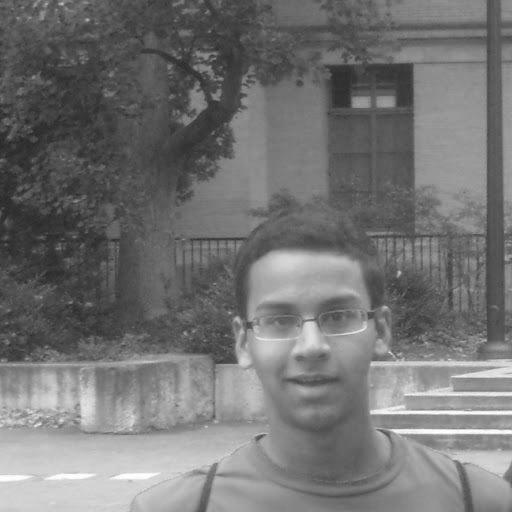 & Engineering
Mr. Neil Desnoyers Faculty Mentor Decision Sciences
& Engineering
Mr. Neil Desnoyers Faculty Mentor Decision Sciences
Infrastructure is always a key component in an organization’s development and is continually evolving. Often groups and companies use databases to support their physical infrastructure and further simplify and digitize their records. We observed that the Drexel Smart House (DSH) could benefit from such a database to supplement their ex isting physical infrastructure. The DSH database would unify all their records into one place and additionally keep track of members, project ideas, equipment and due dates. The planning and execution for the infrastructure was broken up into two parts: on e focused on technical development of a database, and the other GUI (graphical user interface) focused. The GUI serves the purpose of being a front-end of a DBMS (database management system) where people can edit, view and update information on subjects like funding, project ideas and due dates. The technological creation of the database was hands-on and involved conferences with advisors matching Smart House priorities with ours and research about big data, relational databases, scripting languages and backend scripting. This project provides full autonomy to the Drexel Smart House in terms of data and streamlines DSH processes so that the group runs as efficiently and effectively possible.
Poster
30
Session B Abhishek Valanju iSCHOOL Information Systems & Weiquan Li LEBOW Business
Bennett S. LeBow College of Business




Driving Factors of Fireworks Sales on the East Coast
Every year around Independence Day, hundreds of tents pop up selling commercial fireworks to families and anyone else looking to participate in the festive tradition. The purpose of this study was to analyze what affects the sales of these fireworks, allowing some sales locations to achieve better profits than others. In this study, the sales of 427 locations owned by Gemini Capital Group in six states on the east coast over five years between 2008 and 2012 were analyzed. Some factors examined were population density, unemployment, income per capita, and age distribution of residents. We also looked at weather patterns in the locations over the five years to assess their influence. Our findings will allow Gemini Capital Group to make better choices regarding current and future locations of their fireworks tents to increase profits.
LEBOW Economics Dr. Irina Murtazashvili Faculty Mentor Economics

31
Iryna Hrubiy
Poster Session B
Bennett S. LeBow College of Business



The Impact of Violating Loan Covenants: Mergers and Acquisitions
Sneha Ramachandrula LEBOW Accounting & Finance
 Dr. David Becher Faculty Mentor Finance
Dr. David Becher Faculty Mentor Finance
The objective of this study is to examine the role creditors’ play in the financial lives of US corporations: as companies violate their financial covenants, increasingly restrictive covenants are initiated. We examine SEC filings for 3,000 companies over ten years, with particular emphasis on the financial crisis from 2008 -2010. We discover that about eight to ten percent of companies report violations in their financial covenants and following these violations, the number of mergers allowed decline significantly. Moreover, creditors place increasingly restrictive covenants following a violation. On average, these restrictive covenants increased by 1.5 covenants (12%), with one firm’s covenants doubling from 21 to 44 succeeding its violation. We find that when companies violate their financial covenants, the creditors are obligated to keep closer tabs on companies’ financial movements and restrict the allowance of fundamental changes, including mergers and acquisitions. After a financial violation occurs, depending on the severity, the creditors can choose to do anything from granting a simple waiver to demanding full repayment of debt within a week. This is important, as many firms did not survive the financial crisis due to liquidity needs. Thus, understanding the impact of financial violations is imperative to understanding our economy.
32
Session B
Poster
Bennett S. LeBow College of Business




A Profile of Student Managed Investment Funds
Student managed investment funds (SMIFs) are an increasingly popular resource used by many of the top finance schools in the country to give participants practical experience in managing an investment portfolio. Our research examines the performance of the Dragon Fund, Drexel University’s $1 million SMIF, and measures its success against relevant benchmarks. In addition, we have identified SMIFs at other U.S. schools and extracted information about their fund through online resources, journal articles and reaching out to faculty members. The attributes of these SMIFs vary greatly among each school. Our research aims to identify the qualities of a successful fund and also to compare the performance of these funds with that of the Dragon Fund. We also hope to increase the present level of cooperation and communication between funds in a n attempt to create a SMIF peer group.
Ryan T. Kirk LEBOW Economics Dr. Daniel Dorn Faculty Mentor Finance
33
Poster Session A
Bennett S. LeBow College of Business
Jeff Herr LEBOW Accounting & Finance Dr. Eliezer Fich Faculty Mentor Finance

Politics and Mergers and Acquisitions in the Mid - 20th Century
This project works to disprove the commonly held political belief that Democrats have been historically consumer whereas Republicans have been procorporation. The main task of this research was reviewing data sets of mergers and acquisitions from to 1979 and evaluating the metrics of aggregate annual profit, aggregate annual asset acquisition, and volume of deals. These metrics were then viewed alongside the political affiliation of the president each year. Analysis of these data depicts a trend for a large quantity of mergers and acquisitions under Democratic administrations. These M&As also were generally more profitable and involved the exchange of a greater number of assets than those that occurred under Republican administrations. These results offer a new angle of discussion in regards to the historical economic tendencies of political parties in the United States.



34
Poster Session B
Bennett S. LeBow College of Business




Industry Consolidation Throughout the Mid - 20th Century
The purpose of this project was to examine the economic and geopolitical factors that surrounded major industry consolidations in the United States throughout the mid -20th century. For each year from 1948 to 1979, the industry that experienced the most significant consolidation was analyzed in great detail with hopes of determining why these consolidations occurred when they did. Some of the most notable consolidations that occurred throughout this period were the oil consolidation in the 1960’s due to the founding of OPEC and again in the 1970’s as a result of the OAPEC crisis. Additionally, factors affecting the metal and metal machinery consolidation due to foreign competition are also examined in this project. By taking these important consolidations and understanding them in a historical context, beginning to understand the political implications and the occurrence of additional industry consolidations becomes more feasible.
Vincent Laudicina LEBOW Business Administration Dr.Eliezer Fich Faculty Mentor Finance
35
Poster Session B
Bennett S. LeBow College of Business
Joshua Settlemire LEBOW Business Administration
 Dr. Wesley Gray Faculty Mentor Finance
Dr. Wesley Gray Faculty Mentor Finance
The




Key Challenge Facing Registered Investment Advisors: Marketing in a Highly Regulated Industry
My research examines the day-to -day operations of Registered Investment Advisors (RIAs). The key goal of my work is to understand the RIA landscape and to determine the challenges they face in the current environment. I construct a survey of questions focused on three main areas of RIA operations: client demographics, RIA operations, and investment strategy. As a supplement to my survey, I conducted follow -on detailed interviews with RIAs in the Philadelphia area to discuss how they accomplish their work and how their firm is differentiated from other RIAs. My research suggests that the RIA space is extremely diverse. For example, some RIAs are discretionary-based and manage all portfolio decisions based on their intuition and experience, while others are systematic and utilize computer models to determine what securities to trade.
Despite their differences, RIAs did share a common problem: RIAs feel it is difficult to market to clients due to regulations enforced by the Securities and Exchange Committee (SEC). The challenges of marketing in a highly regulated environment provide opportunities for policy-makers, academics, and entrepreneurs. I pose some initial solutions to this problem based on my discussions with RIAs.
36
Session
Poster
A
Bennett S. LeBow College of Business




A Qualitative Case Study on the Drexel University Smart House
Smart technology seems to be the “new in” in today’s high-tech world. Universities across the world are adapting smart technology in Smart Houses. After a thorough literature review, a Smart House can be broadly defined as an open system with a feedback loop that has purposes fitting into two categories, Systems Automation and Sustainability. A qualitative case study approach was used to understand how Drexel University Smart House operates: A literature review was completed, interviews with Drexel University personnel were conducted, observations were noted and further analyzed and an in -depth examination of internal Drexel University documents determined the findings. The findings included data on the Drexel University Smart House founding, systems automations, sustainability, personnel internal and external conflicts , and future projections. Extensive analysis of the findings led to conclusive details and recommendations about the Drexel University Smart House. In conclusion, the research recommends the Drexel University Smart House committee to develop stronger marketing strategies and public relations to bring awareness of the Smart House concept in the Philadelphia region and to universities. Our research and Drexel University Smart House case study can further promote awareness and information about Smart Houses in the Philadelphia region and to universities across the world.

37
International Business
Desai LEBOW
Dr. Murugan Anandarajan Faculty Mentor Management
Poster Session A
Bennett S. LeBow College of Business



 Kristina Placek LEBOW Business Administration
Kristina Placek LEBOW Business Administration

A Qualitative Case Study on the Drexel University Smart House
Whether designed for minimum environmental impact or maximum comfort, smart houses are revolutionizing what we expect from our homes. A review of the smart house literature showed the majority of the information in the field is narrow and specific, lacking a broad definition of what makes a house “smart.” In this study we define a smart house as an open system with a feedback loop consisting of technology, people, processes and data with purposes in systems automation and sustainability. A qualitative case study approach with the Drexel University
Dr.Murugan Anandarajan Faculty Mentor Management
Smart House was taken to better understand the process of developing a smart house. This approach included interviews, observation, examination of internal documents and a literature review. These methods yielded findings and recommendations that can be applied to other Universities to define best practices for smart house development.
38
Poster Session A
Bennett S. LeBow College of Business



Neglected Drug Development: A Review of R&D Investment Initiatives
In this project we investigate how to encourage more investment in drug development for neglected diseases. Neglected diseases are the diseases that are most often associated with the poorest populations in the world and are prevalent in tropical climate areas. According to the latest estimates, neglected diseases affect three billion of the most impoverished people in the world. Although there is a large demand, biopharmaceutical firms do not often invest in neglected drugs because of the low purchasing power of the patients, making such investments unprofitable. In recent decades, governments of both developed and developing nations, biopharmaceutical firms, multilateral institutions and non -profit organizations have undertaken various initiatives to encourage investment in developing neglected drugs. However, such public-private partnerships have yet to produce drugs that are affordable and meet the global demand. Through an expansive literature review, we examine (a) the global scope of the 17 neglected diseases designated by the World Health Organization, (b) the socioeconomic impact of the diseases and (c) the effectiveness of different initiatives to encourage investment. The findings of this study will provide insights for managers, policymakers, and philanthropists interested in combating neglected diseases.
Economics
Dr. Mazhar Islam Faculty Mentor Management
39
Francisco Gon ç alves LEBOW
Poster Session A
Bennett S. LeBow College of Business




Business Ecosystems and Firm Value Creation
Alissa Reichert LEBOW Business Administration
Dr. Mazhar Islam Faculty Mentor Management
In this project, we study how firms create value through creating or participating in business ecosystems. A business ecosystem is a network of firms that build a community together based on coevolving capabilities around an innovation, product, or service. An ecosystem consists of a keystone player who works with their suppliers, partners, distributors, and resources. The ecosystem must be able to persevere through disruptions and must be able to increase diversity through new functions. We conducted a literature review to understand (a) How the business ecosystem is defined in different areas of research, (b) How the business ecosystem evolves over time, and (c) How the business ecosystem prospective can help us understand the ways firms create value. Our initial findings suggest that the concept of business ecosystems has not been uniformly applied across different academic disciplines. Moreover, an ecosystem develops through four distinct phases birth, expansion, leadership, and self-renewal and in each stage participating firms face both cooperative and competitive challenges. Finally, business ecosystems create value by lending more flexibility to the structure of business, increasing access to a greater pool of knowledge and resources, and reducing market uncertainty. Our research would have implications for managers, entrepreneurs, and policymakers.
40
Poster Session A
Bennett S. LeBow College of Business




Use of Theory in Project Management Research
Project Management Institute (PMI) defines project management as “the application of knowledge, skills and techniques to execute projects effectively and efficiently.” In an effort to develop a stronger base of project management (PM) knowledge, PMI’s academic division offers resources for PM education and research, including a sponsored research program to which scholars from around the world apply each year. This project focuses on analyzing the proposals submitted to this program to assess the extent to which theory underpins project management research and to identify the theories that are most frequently used. A mixed methods approach was used to learn more about the application of theory in project management research. In the qualitative phase of the study, we conducted a content analysis of proposals submitted over a two year period and developed a data abstracting form to code the proposals for key trigger terms, underlying theories and methods used. In the quantitative phase, we subjected the data to statistical analysis. This study was conducted with the intent to illuminate the current state of PM research and to give directio n for the academic growth and legitimacy of PM.
LEBOW Business Administration
 Dr. Vadake Narayanan Faculty Mentor Management
Dr. Carla Messikomer Mentor Project Management Institute
Dr. Vadake Narayanan Faculty Mentor Management
Dr. Carla Messikomer Mentor Project Management Institute
41
Poster Session B
Bennett S. LeBow College of Business


 Phillip Nabedrik LEBOW Accounting & Finance
Dr. Dennis (Haemin) Park Faculty Mentor Management
Phillip Nabedrik LEBOW Accounting & Finance
Dr. Dennis (Haemin) Park Faculty Mentor Management
Crowdfunding: Communal Investing Poster
Funding startup companies is risky yet lucrative. Until 2006, startup companies had few options where to obtain capital which consisted of venture capital firms, angle investors, and large corporations.
Crowdfunding, the process by which a large number of people invest in a startup company using a capital raising website, has enabled the general public to invest in startup companies for the first time.
Using a wide array of existing scholarly literature and examining current crowdfunding exchanges, I examined the situations of when and why crowdfunding is attractive for both investors and startup companies. Crowdfunding has grown in popularity and grabbed the attention of various governments. The future of crowdfunding is bright, but legal barriers have delayed its growth. I explored the benefits of crowdfunding in addition to conducting an evaluation of this new method of f inancing. I argue that crowdfunding can predict the success of a startup company while establishing a company’s first customers.
42
Session B
Bennett S. LeBow College of Business




Personality, Ethical Judgments, and Interpersonal Deviance
This study examines the motivational underpinnings of interpersonal deviance in the workplace. Workplace deviance refers to engaging in actions that are designed to intentionally harm to the organization and its members. Interpersonal deviance refers to behaviors that are targeted toward other members of the organization. Such behaviors include mild actions, such as making a derogatory remark to a coworker, or more severe instances in which an employee sabotages a coworker’s project. To understand the motivation behind these behaviors, we focus on three motivationrelated personality traits – personal mastery, competitive excellence, and motivation related to anxiety. We further propose that one’s ethical judgments of these behaviors are an important psychological mechanism linking motivation to deviant behavior. We test these relationships using survey research methods. Participants were recruited for a national survey from MBA and upper-level undergraduate management courses from two universities – one in the Northeast and one in the West Coast of the United States – who worked a minimum of twenty hours per week, and have been with their current organization for at least six months. Data will be analyzed using hierarchical regression analyses, controlling for employee age, gender, education, and experience. Implications for organizational behavior theory and management will be discussed.
Anthony McDonnell LEBOW Business Administration Dr. Christian Resick Faculty Mentor Management
43
Poster Session A
Bennett S. LeBow College of Business




You Are What You Wear: The Moderating Effect of Brand Anthropomorphism on Phonetic Symbolism in Fashion Advertising
Rebecca Sandercock LEBOW Business Administration

Dr. Trina
Andras
Faculty
Mentor Marketing
Dr. Brooke Reavey
Faculty Mentor Marketing
With so much variation in technique, branding is a nuanced science that results in numerous marketing strategies. Out of myriad strategies, brand anthropomorphism, or humanizing a brand, is one such strategy that universally increases the likability of the product or product -line being advertised. The focus of this exploratory study examines brand anthropomorphism on phonetic symbolism the linkage between sounds and their intrinsic meanings and how it affects consumer recall of fashion advertising elements by gen der. The 188 participants’ textual respons es, describing their recall of an ad, are interpreted through content analysis by coding and categorization. Half of the ads are anthropomorphized through the use of first-person, as opposed to third-person, pronouns. Furthermore, to contribute another dim ension of humanization, the product was given one of two brand names, manufactured to inherently sound either masculine or feminine. Female participants recall the presence of brand anthropomorphism more often than males, and the anthropomorphism of the product correlated to a lower recall of the ad features (i.e. technological, physical, etc.) overall for males. The results indicate that brand anthropomorphism motivates women to more deeply consider the gloves potential usefulness in a personal, rather than functional, manner.
44
Session B
Poster
College of Arts & Sciences
Analysis of Coprolites Recovered from a Late Cretaceous Marine Environment
Coprolites (fossilized feces) provide information on the diet of the animals producing them, and insights into taphonomic setting. The specimens were collected from the Main Fossiliferous Layer (MFL) of the Hornerstown Formation in New Jersey, which contains abundant remains of Late Cretaceous taxa, including sharks, boney fishes, turtles, and crocodiles. Coprolit es from this site are identified provisionally as being produced by shark or crocodile. Here we attempt to categorize these coprolites into subgroups. Based on characters including size, morphology, color, and the presence of inclusions, several different subgroups can be identified.
Shark coprolites, identified based on their spiral morphology, are divided into three subgroups: small (13), large (4), flattened (5). Bone inclusions are only visible in the largest shark coprolite. For crocodiles, there are five round, one flat, and eighteen cylindrical coprolites, with three of unknown shape. Small brown specks are visible on the surface and within these coprolites and may represent bone fragments. Nearly all of the coprolites are incomplete. These coprolite s could have been produced by different taxa, resulting in the various sizes observed. These specimens provide direct behavioral evidence of extinct creatures and add to the paleoecological reconstruction of this site.




COAS Mathematics
Dr. Kenneth Lacovara
Faculty Mentor Biodiversity, Earth, & Environmental Science

45
Julianna Quazi
Poster Session A
College of Arts & Sciences
If You Can’t Stand the Heat …: Comparing Thermotolerances of Two Species of Army Ants
Abigail
Mudd
iSTAR
COAS Chemistry
Dr. Sean
O’Donnell
Faculty Mentor
Biodiversity, Earth, & Environmental Science

In some ant societies, labor is divided amongst morphologically distinct worker classes or castes. In Neotropical army ants, castes include soldiers, large workers, and small workers that differ in size and shape. Eciton burchellii raid above ground making the ants susceptible to temperatures, while Labidus coecus are thermally buffered by raiding below ground. We asked whether worker body size predicted their thermal tolerance, and whether the above- and belowground species differed in thermal tolerances. The critical maximum temperature (CTmax) of Eciton burchellii small workers was significantly lower than that of the rest of the castes (p < 0.005). This suggests that temperature s only need to raise enough to affect the small workers, the lowest CTmax, to affect the entire colony. Labidus ceocus have a gradient: with an increase in body size, the thermotolerance increases. The average CTmaxes for Labidus ceocus were significantly lower than that of Eciton burchellii (pvalue of <0.0001). Exposure to high temperatures above ground may have selected for elevated heat tolerance in Eciton burchellii.




46
Poster Session B
College of Arts & Sciences
Slavemakers: Comparative study of Polyergus ants and Formica Fusca Slaves
Ants are social insects that form a number of complex interspecific relationships. One such system is called “slavemaking,” where Polyergus ants raid colonies of the related genus Formica, take the pupae, and then raise them in their nest as slaves. The Formica slaves undertake most of the essential tasks for the colony. In this study we compared the brain architecture of Polyergus workers and their enslaved Formica fusca workers, predicting that brain region investment would depend on their roles in this relationship. We predicted that the Formica would have more investment in the mushroom body brain region, which is related to sensory integration, learning and memory, due to their role in the colony. Whereas, the Polyergus would invest less in this area because their daily tasks are less intensive then the F. fusca.
Through a process of embedding and sectioning we gained volume measurements of various brain structures in over forty ants from the polyergus and the F. fusca. By comparing these measurements we determined that our prediction was correct and the F. fusca or enslaved ants invest significantly more in the mushroom body brain region. This suggests slavemaker brain investment may have decreased along with their reduced task performance.
Nola McAloon COE
Chemical Engineering




Dr. Sean O’Donnell Faculty
Mentor
Biodiversity, Earth, & Environmental Science
47
Poster Session B
College of Arts & Sciences
Slavemakers : The Comparative Neurobiology of Free and Enslaved Worker Ants
Biological Sciences




 Dr. Sean O’Donnell Faculty Mentor Biodiversity, Earth, & Environmental Science
Dr. Sean O’Donnell Faculty Mentor Biodiversity, Earth, & Environmental Science
Ants are social insects with thousands of species worldwide. Some ants establish complex symbiotic relationships with other ant species, such as the unique behavior of slavemaking. This study focuses on the socially parasitic slavemaster behavior of ant species, Formica fusca and Polyergus. Polyergus ants, the “slavemakers”, depend on enslaved F. fusca ants, which they steal as unhatched pupae from their parent colonies and raise as workers in their own colony. We predict that Polyergus brain functions have diminished because they have become so dependent on their slaves. This result suggests that slaves are actually “smarter” than their Polyergus masters. Yet not all F. fusca individuals are slaves, and differences in slave status may be reflected in sensory brain investment. By using sectioning and imaging methods, we quantified brain volumes of free and enslaved F. fusca. By comparing the brain volumes of the optic and antennal sensory regions, we determined to what extent slave or free individuals were vi sually or chemically oriented. Little is known about these ant species and these results may lead to further insight into their social behavior.
48
Session B
Poster
College of Arts & Sciences
Transposon Mutagenesis of a recombinant strain of Synnechoccocus Elongatus PCC 7942 utilizing Cytosine Deaminase for the purpose of illuminating the signal transduction pathways of the psbDII gene
Cyanobacteria are unique in that they are gramnegative prokaryotes and yet perform oxygenic photosynthesis similar to that of higher plants (Cohen and Gurevits, 2006). Thus, they are model organisms for studying higher plants and photosynthesis. In evolutionary terms, oxygenic photosynthesis was endosymbiotically conveyed from ancient cyanobacteria into eukaryotic oxygenic phototrophs (Kern et al, 2011). The photosystem II reaction center proteins, D1 and D2, are encoded by genes, psbDI and psbDII in S. elongatus. The gene psbDI is expressed constitutively under all light intensities, while psbDII is induced at three- to fourfold greater levels under highlight conditions (Anandan and Uram, 2003). Therefore, by examining the signal transduction pathways invo lved in the expression of the psbDII gene, factors influencing greater expression of protein in highlight versus low light systems may be illuminated.
In this study, a recombinant strain of S.elongatus was created using the Escherichia coli codA gene fused to the psbDII promoter. The codA gene is a reporter gene which encodes the enzyme Cytosine Deaminase which converts 5’Fluorocytosine into deadly 5’Fluorouracil. Electrocompetent cells were transformed using electroporation with transposon fused t o kanamycin resistance. Successfully grown colonies of mutants in the pathway of the psbDII gene were then used to make liquid cultures.




Bhavsar
COAS
Biological Sciences
Dr.
Shivanthi

Anandan
Faculty
Biology
Mentor
49
Poonam
Poster Session A
College of Arts & Sciences
Elucidating pathways of the psbDII gene via transposon mutagenesis of a luxAB - recombinant strain of Synechoccocus elongatus PCC 7942
Helena Krobock COAS Biological Sciences Dr.

Cyanobacteria such as Synechococcus elongatus PCC 7942 are well-known for undergoing photosynthesis to produce energy. A predecessor of the chloroplasts found in plant cells, they are a model organism for studying the signal transduction pathways involved in photosynthesis. The psbDII gene in S. elongatus encodes the D2 protein, half of the heterodimer that constitutes photosystem II. To further examine the signal transduction pathways of psbDII, a transposon was inserted into the genome of a recombinant strain of S. elongatus in which the luxAB gene is fused to the promoter region of psbDII. LuxAB encodes for luciferase, a key enzyme involved in bioluminescence. First, electrocompetent cells were created using liquid S. elongatus cultures. These cells were then transformed via electroporati on with transposome, a DNA-protein complex that is able to randomly insert itself into the genome. The electroporated cells were cultured over the course of several days in BG-11 growth media containing antibiotics. By using luxAB as a reporter gene for psbDII expression and creating transposon -tagged mutants, DNA sequencing techniques can be utilized in order to locate where the transposon has inserted itself, thus allowing us to determine the consequences of an interrupted psbDII gene in S. elongatus.




50
Shivanthi Anandan Faculty Mentor Biology
Poster Session A
College of Arts & Sciences
Optimization of the Fitting Algorithm for the Kinetic Parameters of P - gp Efflux
P-glycoprotein (MDR1, P-gp) is an ATP-mediated transporter that resides in the apical membrane of most body cells. It is responsible for effluxing xenobiotics from the cell. Therefore, it plays an important role in drug -drug interactions.



The purpose of this lab was to exam ine the positive and negative controls of datasets that were analyzed by the Particle Swarm global optimization algorithm in MATLAB. Using data from a confluent cell monolayer of MDCK cells, specific kinetic parameters were measured in order to find better fits for the data. We found that the resulting fits did not contain similar control values across the board. Using qualitative methods, the best fits were obtained and used to reevaluate the upper and lower bounds in order to improve future graphs. The un usable graphs were scientifically evaluated to find reasons for the poor fits. These were seen to be faults in the original data and could be taken into consideration in regard to future experiments.
Once the reasons for this disparity are explained, we will be able to explore further avenues of research and improve research methods to ensure that future data includes a higher percentage of usable fits.
Shaan Patel COAS Biological Sciences Dr.
Joseph Bentz
Faculty Mentor Biology
51
Poster Session B
College of Arts & Sciences
The Effect of Eight Inhibitors on the Efficacy of P - gp Efflux



 Marg V. Rajpara COAS Biological Sciences
Dr. Joseph Bentz Faculty Mentor Biology
Marg V. Rajpara COAS Biological Sciences
Dr. Joseph Bentz Faculty Mentor Biology
With its wide variety of substrates and ubiquitous expression in the body, P-glycoprotein (P-gp) is a frequent site of drug -drug interactions (DDI’s). It is expressed in the apical membrane of most tissues in the body and effluxes a variety of xenobiotics.
The purpose of our research was to evaluate the effect of eight inhibitors on the ability of P-gp to efflux xenobiotics. We used a kinetic analysis of P-gp efflux expressed in the MDCK cell line. Previously published datasets were analyzed using the Particle Swarm global optimization algorithm written in MATLAB. The resulting fits were re-analyzed to strengthen the negative and positive controls, where the active site of P-gp is completely unrestricted and completely restricted, respectively. Through these methods, graphs of the relationship of increasing inhibitor concentration and the efficacy of P-gp in effluxing the drug digoxin were obtained. Due to the variability of the original datasets, the resulting graphs showed many differences in negative and positive controls.
The variability in the graphs allows for future restricting of the upper and lower bounds in order to enhance data accuracy, allowing for a better understanding of P-gp functionality and ability to restrict drug uptake in multi-drug resistant cells.
52
Poster Session B
College of Arts & Sciences
Effect of Misregulating Tip60 HAT Activity on Learning and Memory in Drosophilia
Neurodegenerative disorders such as Alzheimer’s disease are generally associated with gene misregulation of the hippocampus in the aging brain. A major modification that occurs is acetylation, in which regions of the genome are “marked” by histone acetyltransferases (HATs), which change their transcription patterns. Accumulation of misregulated genes may lead to cognitive dysfunction. The HAT of interest, Tip60, was found to interact with amyloid precursor protein (APP) found in Alzheimer’s disease. Its acetylation activity was indicated to play an important role in regulating neuronal genes linked with Alzheimer’s pathophysiology through transcriptional complex factor formed with intracellular domain (AICD) of APP. Previously, misregulating the Tip60 HAT activity in Drosophilia was found to affect the Mushroom body structure, the equivalent of the hippoca mpus. We are studying various lines of Drosophilia with altered Tip60 activity, making use of well-documented behavioral assays to study the flies’ learning and memory ability. By conducting courtship-conditioning assay, so far, we have shown that in the control group, the Drosophilia were able to learn and remember. Further tests need to be conducted with the misregulated Tip60 under neurodegenerative conditions in the AD flies to establish the connection between misregulated HAT activity and cognitive dysfunction.
COAS
Biological Sciences

Dr. Felice
Elefant




53
Akshay Jagadeesh
Faculty Mentor Biology
Session A
Poster
College of Arts & Sciences
Tip60's Role in Learning and Memory Under AD Conditions
Nikil Revuri
COAS
Biological Sciences
Dr. Felice
Elefant




Faculty Mentor Biology
Neurodegenerational diseases, such as Alzheimer's Disease (AD) are an increasing concern in health care. Genetic misregulation by epigenetic modifiers, such as histone acyltransferases (HATs), is indicated to play a role in AD pathology. One such HAT is Tip60, which has been linked to AD-related memory loss because of its interaction with APP-AICD complex associated with AD. Previously, it was found that the modulation of Tip60 HAT activity in the fly mushroom body (MB) of the brain leads to defects in immediate recall memory and disrupted MB structure, results consistent with expected epigenetic regulation by the APP-AICD complex. In our experiment, we set out to determine the learning and memory effect of misregulated Tip60 under neurodegeneration condition by courtship conditioning. The mating behaviors of mutant and control male flies with non-virgin and virgin females are assessed, comparing mating time to controls to determine if male flies learned and remembered not to exhibit courtship behaviors. We anticipate to see control lines to learn and remember and mutants to be unable to remember. Thus far, the assays have shown that control flies will learn and remember, though further future assays on the mutant lines are required to determine Tip60 involvement in AD -related m emory loss.
54
Poster Session A
College of Arts & Sciences
Characterizing natural genetic variation that protects against protein aggregation and heat stress in Caenorhabditis elegans
Huntington’s disease is associated with polyglutamines, which often misfold to create aggregates that lead to proteotoxicity. Expression of Q40-YFP fusion protein in Caenorhabditis elegans can model the biochemical fate brought on by threshold polyQ’s. When natural genetic variation was introduced into standard laboratory N2 strain by crossing with a genetically distant wild strain, the progeny presented with a wide range of aggregation phenotypes, including a strong suppression phenotype in one of the resulting recombinant lines, Line16. In order to understand how the genetic background of Line16 protects against proteotoxicity, I first asked what the nature is of the alleles contributing to suppressed aggregation. When Line16 animals were crossed with N2Q40, the F1 generation had low aggregation suggesting some dominant alleles; moreover, the F3 generation had a wide range of aggregates so the genetic background is very complex. Secondly, we are interested in whether the genetic background of Line16Q40 also protects against an exogenous proteotox ic stress, such as heat stress. We reason that if Line16 background is generally protective against proteotoxicity, Line16 animals should survive at higher temperatures. By determining if the genetic background of Line16 protects from these stresses, it may be possible to create a therapy to delay Huntington’s.



 Gowri Gouda COAS
Gowri Gouda COAS
Biological Sciences
Dr. Tali Gidalevitz
Faculty Mentor Biology
55
Poster Session B
College of Arts & Sciences
The kdm2 gene potentially interacts with kismet to produce rescue effects on CHARGE - like flies



 Janson Jacob COAS
Biological Sciences
Janson Jacob COAS
Biological Sciences
Dr. Daniel Marenda
Faculty Mentor Biology
Mutations in the Chromodomain helicase DNAbinding (CHD) protein, CHD7, results in the syndrome referred to by the acronym CHARGE, where each letter stands for one of the common symptoms of the disease. Very little is known regarding the mechanism of action by which the mutations in CHD7 result in defects observed in CHARGE patients. The Drosophila melanogaster homologue of the CHD7 gene is kismet (kis). Drosophila serve as the model organism for better understanding the disease. Kismet (kis), can be down regulated by way of the Gal4/UAS RNA interference construct which produces deficiencies in the flies, such as limited motor coordination and developmental anomalies of the brain. A different gene, kdm2, transcribes a histone modifier, histone demethylase. This enzyme catalyzes the demethylation of lysine and arginine tails found on histones and is usually associated with transcriptional repression. Evidence from studies conducted at Case Western University revealed that inhibiting kdm2 leads to suppression of CHARGE-like phenotypes. We tested whether kdm2 knockdown leads to suppression of defects in coordinated muscle movement and the held out wing (HOW) phenotypes in kismet deficient flies. Preliminary data suggests suppression of the HOW phenotype, though the presence of a significant rescue effects is to be determined.
56
Poster Session B
College of Arts & Sciences




Developing and characterizing Drosophila model for Traumatic Brain Injury

Traumatic Brain Injury (TBI) is any type of head injury that may cause mild to severe concussions accompanied by neuropsychiatric symptoms, and long -term cognitive disability. U.S. military veterans that are exposed to blasts and athletes that sustain concussions experience TBI. An overlap of clinical signs and symptoms is seen in affected military personnel and athletes with concussion-related chronic traumatic encephalopathy (CTE), suggesting common biochemical and pathophysiological determinants that trigger development of CTE-like neuropathology. One of the neuropathological hallmarks of CTE includes increased levels of the phosphorylated form of the tau proteins (tauopathy). In this study, we are attempting to develop a Drosophila melanogaster model of neurotrauma that can recapitulate CTE-linked neuropathology. To develop this model, we are overexpressing the human form of the tau protein in fly brain using the Gal4/UAS system. Vortexing flies on high speed simulates the brain injury. Preliminary data s uggests an increase in phosphorylated tau levels in flies upon vortexing, similar to observations in other CTE mouse models. Further, we examined complex fly behavior pre- and post-injury via behavioral assays. We suggest that this model can serve as a powerful in vivo tool for accessing CTE-linked mechanism as well as for rapid screening of potential therapeutics.
Jennifer M. Viveiros COAS Biological Sciences
Dr. Daniel Marenda Faculty Mentor Biology
57
Poster Session B
College of Arts & Sciences
The Effects of Excess Glucose Concentrations on ChREBP Levels
Emily Dubelbeiss COAS Biological Sciences
 Dr. Nianli Sang Faculty Mentor Biology
Dr. Nianli Sang Faculty Mentor Biology
What do obesity, diabetes, and cancer have in common? Yes, they are epidemics that plague millions. They are also linked to Carbohydrate Responsive Element-Binding Protein (ChREBP). ChREBP is a transcription factor that responds to increased glucose levels by binding to Carbohydrate Response Elements (ChoREs). Tissues that perform lipogenesis, the conversion acetyl-CoA to fat, have the highest levels of ChREBP. Lipogenesis has been linked to obesity and diabetes. As for cancer, transcription factors similar to ChREBP, like Myc•Max, have been shown to activate protooncogenes. In my research, I began to explore ChREBP’s response to glucose. Previous microarray tests showed that ChREBP levels increase with glucose. Western blot was used to corroborate this. Western blot uses antibody-antigen reactions to isolate and detect specific proteins. HEB3B cells were gro wn in various glucose concentrations (1 mM, 5 mM and 20 mM) and proteins were extracted. In my research, I detected four proteins: cMyc, Max, ChREBP, and α-tubulin. α-Tubulin was used to show maximum protein level. Results about the effect of glucose on ChREBP were inconclusive. I need to perform Polymerase Chain Reaction (PCR) to determine whether ChREBP transcription increases with excess glucose. Later I will begin look into the genes ChREBP activates and their effects.




58
Poster Session B
College of Arts & Sciences
Effects of Hypoxia on RUNX1



Have you ever felt nauseous when traveling at a much higher altitude than you are used to? You were probably suffering from hypoxia, a dangerous pathological condition where the body lacks oxygen. In this experiment, I analyzed a transcription factor gene called RUNX1 to try to find out its role in hypoxia-induced inflammation and its relationship with HIF -1-alpha, a known hypoxia-inducible factor. To do this, I carried out various Western Blots, a complex procedure that utilizes the specificity of antibody-antigen interactions to help identify a certain target protein in a complex protein mixture. The RUNX1 proteins were subjected to specific oxygen levels, 5% and 1%; the 5% oxygen simulated normoxic (normal oxygen) conditions in the organs, while the 1% oxygen simulated hypoxic conditions in the organs. After multiple trials, the resulting autoradiographs from the Western Blots supported the hypothesis that hypoxia increases RUNX1 protein levels. The next step of this experiment will be to test the relationship between RUNX1 and HIF-1 -alpha; as more and more information is gathered on RUNX1’s role in hypoxia-induced inflammation, we can better understand the signaling pathways of hypoxia and, consequently, treat people suffering from the condition more effectively.
Andrew Qian COAS Biological Sciences
Dr. Nianli Sang Faculty Mentor Biology
59
Poster Session B
College of Arts & Sciences
Gabriel Horwitz COAS
 Biological Sciences
Dr. Aleister Saunders Faculty Mentor Biology
Biological Sciences
Dr. Aleister Saunders Faculty Mentor Biology
Site - directed mutagenesis of cilia targeting sequences in BACE1 to understand cilia's involvement in Alzheimer's disease Poster Session A
Alzheimer’s disease is the sixth leading cause of death in the United States. It is characterized by two types of protein aggregates in the brain called neurofibrillary tangles and amyloid- β (Aβ ) plaques. The harmful Aβ plaques are formed following the cleavage of the amyloid precursor protein (APP) by BACE1. Our laboratory has made the break- through discovery that BACE1, along with APP, localizes to non-motile cilia. Non- motile cilia, more commonly referred to as primary cilia, are present on nearly every cell of the body. Primary cilia are best described as sensory cellular antennae that manage signaling pathways. Many proteins that localize to cilia contain specific amino acid sequences, termed cilia targeting s equences (CTSs) that are responsible for cilia localization. When these CTSs are mutated, these proteins fail to localize to cilia. We have identified putative CTSs in the BACE1 sequence. Our hypothesis is that if these BACE1 CTSs are mutated, BACE1 will no longer localize to cilia. This novel idea will present a greater understanding of cilia’s involvement in Alzheimer’s disease. To test this hypothesis, site -directed mutagenesis has been performed to mutate these sequences in BACE1. Following this microscopy will be utilized to study the effects this mutation has on BACE1 cilia localization.




College of Arts & Sciences
Fabrication of Metal Organic Framework Nanofibers
Metal Organic Frameworks are highly porous structures utilized for a wide array of applications such as biosensing of glucose levels in cells. These frameworks, composed of a metal ion and an organic linker such as a carboxylic acid, can form a variety of structures such as pillars and cube -like particles. These structures are often created on the nanoscale with sizes ranging from 1nm to 100nm. For this project, the formation of a fibrous metal organic framework, also known as nanofibers, was explored. Nanofibers have a high surface area to volume ratio, showing promise in applications such as cell imaging. It was found that when mixing large volumes of metal ions such as zinc nitrate and cobalt II chloride with a concentrated solution 1,3,5benzenetricarboxylic acid (BTC), these fibers formed within solution. Future work with these fibrous structures includes test ing their fluorescence abilities and thermal properties. If these results appear favorable, the nanofibers will be tested to determine how exactly they enhance the imaging of cells.
Emily Fister COAS Biological Sciences
 Dr. Haifeng (Frank) Ji Faculty Mentor Chemistry
Dr. Haifeng (Frank) Ji Faculty Mentor Chemistry



61
Poster Session A
College of Arts & Sciences
Characterizing Nanowire Hydrogen Bonding Complexes
Rishabh
Rathod
COE




Chemical Engineering
Dr. Haifeng (Frank) Ji
Faculty Mentor Chemistry
Nanowires are a classification of nanostructures with two of its three dimensions measuring within the range of 1 nm to 100 nm. These extremely thin rods have a plethora of potential applications ranging from sensing to light emission to explosive detection. Though the applications have great potential, the field of nanowires remains vastly uncharted. The project objective was to synthesize nanowires or even vertically standing nanopillars using two organic compounds, 4,4’ -Biphenyldicarboxylic acid (bpd c) and 1,2-Bipyridylethane (bpee). Various concentration levels, surfaces, techniques, and volumes of solutions were tested to optimize the synthesis procedure of the nanowires. The structure morphology was examined under a tabletop Scanning Electron Micro scope to determine the dimensions of the wires as well as the orientation and density of the wires across the substrate’s surface. After the optimal nanowires were achieved, future work would include exploring the properties of the structures, including an analysis of its fluorescent spectra. Testing how and if its fluorescence changes with the presence of certain nitroaromatics may lead to sensory applications for the detection of explosives.
62
Poster Session A
College of Arts & Sciences
Developing a Method For qCellT Operation
In this study, we have employed two Quartz Crystal Microbalances (QCM), the qCellT and the QCM-D, to detect EGCG -induced cellular responses in wild MCF -10A cells in real-time. Both instruments are capable of detecting cellular response based on the measurement of the change in frequency during the course of the experiment. The qCellT measures damping while the QCM -D measures the change in dissipation (∆D).The qCellT uses a flow cell which means the solution is constantly flowing over the cells for the duration of the experiment. The QCM -D uses an open module setup; in that way, the solution is added to the cells once and remains motionless. We have successfully developed a method for operating the qCellT. This is the first time a method for this line of cell study is being established for the qCellT, a new instrument on the market. We have also validated the method by showing that the results obtained with the qCellT are comparable to those collected with the QCM-D, an established commercial instrument. Overall, this study shows the feasibility of applying the existing approach with the QCM-D to other QCM with different attributes to create new methods in this line of cell study.
Yuliya Karpovitch COAS Chemistry

Dr. Jun Xi
Faculty Mentor Chemistry



63
Poster Session A
College of Arts & Sciences




National Sovereignty and Energy
International Area Studies
Dr. Maria Hnaraki Faculty Mentor Culture
& Communication & Greek Studies
The Mediterranean Sea and countries have played a crucial role in world political and trade history. Currently, South-Eastern Mediterranean and the European Rim areas are redefining geo-strategies and alliances due to the newly discovered gas reserves connecting the EEZ of Israel, Cyprus and Greece. My research looks at how the application of UNCLOS impacts Greece, Cyprus, Israel and, consequently, Turkey. The paper’s focus is on the international implications of the gas reserves exploitation in those seas, using empirical data from the three active players in that area.
Key topics reviewed:
• Culture, religion and the role of t he media in public opinion's perceptions and decisions in international relations
• Exclusive Economic Zones in SE Mediterranean
Geo - Economics in the South - Eastern Mediterranean Poster Session A
• The controversy over sovereignty in the closed sea of the Aegean Islands and Kastelorizo’s EEZ
• The Constitution of Sea and Blue growth EU policy on energy challenges and security
With field and analytical research in Israel, Greece as well as in Philadelphia (UNCLOS Drexel event, plus insights from Consulate of Israel in Philadelphia), I have been able to gain first-hand knowledge of the situation as well as work directly with high -level government and military officials, via the Drexel Study Abroad in Crete.

64
Rebecca Olsho iSTAR COAS
College of Arts & Sciences
Content Analysis o f US Newspaper
Coverage of HIV/AIDS in Africa




The AIDS pandemic in Africa is not only devastating, but also unique in that AIDS is a highly politicized disease; an HIV infection has not only medical implications, but social ones. Attempts to define and respond to HIV/AIDS globally have affected both social stigma attached to the disease and institutional forces affecting HIV/AIDS. These factors are influenced by sources of public information, namely media. This study examines the influence of media on public opinion on HIV/AIDS through media framing. A Coding Analysis Toolkit software from a Qualitative Data Analysis Program was utilized in a content analysis of media coverage on HIV in Africa from four major US newspapers from the past five years. Articles were systematically coded for a list of media frames, each of which would indicate an attitude involving HIV other than neutrality. Detection of these frames did, in fact, suggest that media coverage of HIV is far from neutral. This result shed light on the influence of media on public attitudes towa rd HIV/AIDS and even responses to HIV/AIDS in the form of international health and aid policies. Overall, the study underscores the extent to which media can harness its power for health promotion, in particular anti -stigma campaigns.
Gilfoil
Mentor Culture & Communication
65
Casey
COAS Biological Sciences Dr. Emmanuel Koku Faculty
Poster Session B
College of Arts & Sciences
Inaction Games: The Attenuation of Agentic Engagement in Mainstream Gaming
Colton Terrace
AWCOMAD




Game Art & Production
Mr. James Malazita
Faculty Mentor
Culture & Communication
For my STAR research project, I studied the dialectic between narrative and mechanic elements within popular games. To do this, I gathered my research in three ways. First, I conducted interviews with designers and game developers. Second, I performed discourse analysis of reputable game media sources such as IGN and Game Informer. Third, a game mechanics and narrative analysis was performed by evaluating a random sample of 52 of the most popular selling games of the past 30 years. This revealed the discovery of a shift in game design over time to reflect the growing influence of cinema in the game industry. In the past, mechanics were both the heart and narrative influence of games, but now it is more common for the narrative to dictate how the mechanics should be formatted. Not only does this show evidence of films’ influence in games but also overviews the evolving language of a new medium. In addition, game mechanics, which traditionally afford the player high levels of agentic engagement, have over time actually taken agency away from the player.
66
Poster Session B
College of Arts & Sciences
Discrimination Against the Roma: A Comparative Analysis of Media Coverage Based on Political Ideologies




The Roma people make up one of the largest ethnic minority groups scattered across Europe, highly concentrated in the Balkan region. In 2007, a massive flux of migration of the Roma to Western Europe was seen after Bulgaria and Romania joined the European Union. This led to anti-Roma sentiment in France, as well as massive deportations. The issue gained spotlight a s members of the European Union began debating as to whether or not France was racially discriminating against the Roma. With the media acting as a powerful tool, capable of shaping public support, it was deemed essential to see whether or not French newspapers were reporting differently on the situation. By analyzing articles written in two major French newspapers, Monde and Figaro centered politically left and right respectively I was able to compare reports on the Roma deportations. It became evident that the politically left newspaper felt sentiment towards the harsh living conditions of the Roma, while the other, merely supported the government’s decisions on the deportations. This information is vital to see whether the media aids in the polarization o f the public along ideological lines, which undermines the quality of democracy, the good functioning of which depends on compromise.
Greta Jusyte COAS International Area Studies & Political Science
 Dr. Zoltan Buzas Faculty Mentor History & Politics
Dr. Zoltan Buzas Faculty Mentor History & Politics
67
Poster Session B
College of Arts & Sciences
China as a Hegemonic Threat in US Media
Nicole Tse COAS International Area Studies

Although the United States is widely accepted to be the current dominant power due to its military and economic strength, China’s rapid growth leads some Americans to worry that hegemonic conflict between the tw o states may happen in the near future. According to hegemonic stability theory, the international order is most stable when a single state (known as the hegemon) is the dominant power. When the hegemon declines, or if a new state rises to challenge its position, conflict (and often war) ensues until one of the states triumphs over the other.
Dr. Zoltan Buzas Faculty Mentor History & Politics
This study analyzes the portrayal of China as a threat by the American media and aims to determine whether or not this portrayal realistically reflects the actual danger that China poses. It does this by comparing China -threat trends in two large newspapers, the New York Times and the Washington Post, to changes in China’s economy (represented by its GDP) and military (represented by its military spending). Results suggest that the media’s portrayal of China tends to inflate the threat it poses, perhaps influenced by speculation and political rhetoric. Thus this research cautions against overestimating the “China threat”, which could lead to foreign policy mistakes with disastrous consequences.




68
Poster Session B
College of Arts & Sciences
Modifying and Merging Two Binomial Schemes
The binomial model is an approach to pricing options, well known due to its simplicity and relation to the Black-Scholes model. We study a modification of the multi -period binomial optionpricing model obtained by merging together two different binomial schemes. In particular, we ex amine the price dynamics in the absence of arbitrage opportunity and possible relations between the martingale probabilities corresponding to the constituent parts of the model. Our goal is an educational benefit as well as an attempt to grasp any key features of a real-world financial market.



 Abu COAS Mathematics Dr. Anatolii
Abu COAS Mathematics Dr. Anatolii
Grinshpan
Faculty Mentor
Mathematics
69
Salman
Poster Session A
College of Arts & Sciences
Kelly Shiptoski
COAS Mathematics
Dr. Georgi




Medvedev
Faculty Mentor Mathematics
Solving Real World Eige nvalue Problems with MATLAB Algorithms
Eigenvalue problems have many important applications in science and technology. Algebraic eigenvalue problems are formulated using matrices. To work with large matrices, computer programs such as MATLAB are very useful. In my research, I created a MATLAB code that computes the critical load of a beam. The code takes in the length and flexural rigidity of the beam and produces the critical load. I used a test problem to study the convergence of my method. My next goal is to develop a randomized number scheme for this problem and to find out whether randomization improves the convergence of the algorithm.
70
Poster Session A
College of Arts & Sciences
Determinatal Representations of Semistable Polynomials
Electrical engineers often work with semistable polynomials, but there is no known way to characterize such polynomials in a simple manner. A semistable polynomial can only be equal to zero when at least one variable has norm greater than or equal to one.
In my research, we attempted to find a determinantal representation for one such polynomial. This meant searching for a matrix K such that the determinant of I – KZ is equal to the polynomial (where I is the identity matrix and Z has the polynomial's variables down the diagonal). In particular, we wanted a contractive K, meaning that the norm of K is less than or equal to one.
For the polynomial we started with, we were able to find one such contractive K. We are now interested in finding conditions on all semistable polynomials for when determinantal representations exist.
References
[1] A. Grinshpan, D. S. Kaliuzhnyi-Verbovetskyi, and H. J. Woerdeman. Norm -constrained determinantal representations of multivariable polynomials. Complex Anal. O per. Theory 7 (2013), 635–654.
[2] Kummert, Anton 2-D stable polynomials with parameter -dependent coefficients: generalizations and new results. Special issue on multidimensional signals and systems. IEEE Trans.
Circuits Systems I Fund. Theory Appl. 49 (2002), no. 6, 725–731.




Alexander
Karlovitz
COAS
Mathematics
Dr. Hugo J.
Woerdeman
Faculty Mentor
Mathematics
71
Session A
Poster
College of Arts & Sciences
A Gas System for Xenon Purity Studies in the Enriched Xenon Observatory (EXO)
Tristan A. Winick COAS Physics
Dr. Michelle J. Dolinski Faculty Mentor Physics
Neutrinos are small, uncharged, weakly interacting particles whose masses may provide insight into the origins of matter in the universe. The Enriched Xenon Observatory (EXO) studies neutrinos through a rare, theorized, radioac tive process called neutrinoless double-beta (0νββ) decay; if detected, it would establish the neutrino’s particle-antiparticle nature and give further information regarding neutrino masses. To observe this process, the EXO200 detector must be able to dis tinguish the energy signature of 0νββ decay from those of other interactions. However, impurities in the detector’s liquid xenon supply can degrade EXO -200’s ability to resolve energy signatures. A reliable method of purifying the liquid xenon is, therefor e, of utmost importance.
The objective of this research was to design and construct a xenon gas system for use in xenon purity studies. A virtual model of the apparatus was created with SolidWorks CAD software; using these plans, the gas system was then constructed in a cleanroom. This gas system will supply a small (3L) liquid xenon vessel, similar to the larger (58L) EXO200 detector. Successful purification methods can be applied to either EXO -200 or its planned successor, nEXO, improving chances of detecting 0νββ decay.


Poster Session B

72
College of Arts & Sciences
Measuring Flexion in Weak Gravitation Lensing
When light from distant sources, such as galaxies, travels through space, it can be bent by massive objects, such as galaxy clusters. This is known as gravitational lensing, which leads to an induced ellipticity in images of galaxies. In gravitational fields that vary across the image, second order effects can also become apparent, known as flexion.




Flexion parameters are used to map the mass of the lensing cluster or galaxy. However, a set of equally correct solutions can return the same image for any observed lensing. There does exist a unique ‘reduced’ solution. When only one image is available and the sets cannot be narrowed down by a collection of results from different images, this reduced solution can be found. Atmospheric effe cts and noise can make it difficult to find these reduced parameters from direct analysis of the images. This program, based on the Analytic Image Model (Cain et al., 2011), instead attempts to recreate the image from estimated parameters and then applies th e known atmospheric ‘smearing.’ By applying the ‘smear’ to the known image, the more difficult task of removing the smear and noise is avoided. These parameters can be used in mass reconstructions to better understand the structure of galaxies and clus ters.
Daniele Schneider
COAS Physics
Dr. David Goldberg Faculty Mentor Physics
Poster Session A
73
College of Arts & Sciences
Photomultiplier Tube Performance in Weak Magnetic Fields
Edward Callaghan
COAS Physics
Dr. Charles Lane
Faculty Mentor Physics




Current experiments, large and small, in particle physics commonly employ photomultiplier tubes (PMTs) and similar devices to detect photons and register particle events. A detailed understanding of PMT operation thus allows for precision in measurement. PMTs work by accelerating electrons through potential differences. Magnetic fields bend the trajectories of electrons in motion, altering the operation of the PMTs. This can artificially suppress signals, resulting in poor PMT performance. Properties of consistent waveforms were first measured in various orientations respective to a weak magnetic field, that of the Earth, to determine the effect of the field on the PMT gain.The absolute PMT gain was then measured, oriented for theoretically minimal effect. T he gain was then measured in a field -free environment, to test for consistency in gain measurement. It is concluded that the presence of a magnetic field adversely affects the gain of PMT devices. In a field -free environment, PMT gain is invariant to spati al orientation. Shielding the PMT body from magnetic fields thus alleviates this signalsuppression, and results in more accurate data acquisition.
Poster Session A
74
College of Arts & Sciences
Simulating Young Star Clusters
The holy grail of galactic astronomy is to understand the complex physics driving the formation of stars and star clusters, a challenging computational problem combining many different physical processes, including gravitational dynamics, hydrodynamics (gas dynamics), and radiative transfer. Through the use of the Astrophysical Multipurpose Software Environment (AMUSE), we have constructed simulations of young stellar systems to understand how they are assembled and come into equilibrium.
Our systems were constructed with a constant total mass of 1,000 solar masses, a typical mass for a star cluster in our Galaxy. Stars and gas had approximately the same clumpy spatial distributions, chosen to mimic observed systems. Velocities and gas temperatures were chosen to represent "cool" systems, out of equilibrium. The ratio of stellar to gaseous mass (the mass ratio) was varied systematically to observe its effects on the dynamical evolution. Evolving the system gravitationally for approximately four million years, enough time to assure our systems assemble and come into equilibrium, we analyzed the effect of the mass ratio on the answers to the following questions: How much, if any, mass has escaped the system? What percent of this mass is stellar/gaseous? How long has the system taken to come into equilibrium?


 Charles E. Unruh V COAS Physics Dr. Steve L.W. McMillan Faculty Mentor Physics
Charles E. Unruh V COAS Physics Dr. Steve L.W. McMillan Faculty Mentor Physics

75
Poster Session
A
College of Arts & Sciences
The Effect of Hedonic Hunger, Food Exposure, and Hunger State on Heart Rate Variability
Harrer COAS Psychology
Dr. Michael Lowe Faculty Mentor Psychology
This study investigated whether hedonic appetite (desire to eat without a physiologic need for calories), exposure to palatable food, and/or current hunger state (fed vs. fasted) individually predicted, or collectively interacted to predict heart rate variability (HRV) in a laboratory setting. HRV measures the variation in heartbeat intervals and is influenced by the dynamic relationship between the sympathetic and parasympathetic nervous system (Allen et al., 2007). Participants were randomly assigned to one of four study conditions to determine the effect of the presence of food and of hunger state on a participant’s HRV: fed/food exposure, fasted/food exposure, fed/food absent, and fasted/food absent. Participants were then connected to an electrocardiogram (ECG) while completing assessments of hedonic hunger (Power of Food Scale) and current hunger state. Although underpowered, the data collected revealed an interesting pattern: individuals with high hedonic hunger levels had higher baseline sympathetic arousal and a greater decrease in sympathetic arousal after food consumption compared to those with low hedonic hunger levels.The findings of the study may contribute to our understanding of why some individuals are more affected and aroused by food when compared to others, potentially aiding in the prevention of obesity.




Poster Session B

76
College of Engineering
Enhanced - S ampling Molecular Simulations of Calmodulin
At the molecular level, most of life’s basic functions are handled by proteins. Proteins exist in a variety of conformations and rely on this intrinsic flexibility in shape and size in order to recognize their binding partners and accomplish specific biomolecular functions. Molecular dynamics (MD) simulations are a valuable tool in exploring protein conformational flexibility, but standard MD is limited to sub-microsecond timescales, which does not always allow one to sample all relevant conformations. In this project, we use an enhancedsampling method known as TemperatureAccelerated MD (TAMD) to study calmodulin, an essential calcium regulator that changes its shape due to intracellular calcium concentrations to control interactions with its partners. Our objective is to identify potentially important conformational intermediates. We took two specific conformational states of calmodulin from the RCSB structure database and subjected them to several rounds of standard MD and TAMD. As expected, regular MD did not sample intermediate states. However, depending upon the degree of acceleration in TAMD, we observed several intermediate states. Data from our study may be useful in understanding calmodulin's behavior in biological systems and can aide in targeted research aimed towards the regulation of calcium in the body.
COE




Computer Science
& Chemical Engineering
Dr. Cameron Abrams
Faculty Mentor
Chemical & Biological Engineering

77
Poster Session B
College of Engineering
Enhanced Photoelectrochemical WaterSplitting with Hematite Nanostructures
Anthony
Abel
COE
Chemical Engineering
Dr. Jason
Baxter
Faculty
Mentor
Chemical & Biological Engineering
The search for clean fuel sources has been driven by a rising energy demand and increasing awareness of anthropogenic climate change. One attractive strategy is the storage of solar energy in the bonds of H 2 and O2 by photoelectrolysis, or photoelectrochem ical watersplitting. Hematite (α-Fe 2 O3 ) has emerged as a promising photoanode material for solar-driven watersplitting due to its relative abundance, non -toxicity, chemical robustness, and suitable bandgap (~2.1eV), which corresponds to a maximum solar -to-hydrogen efficiency of 15%. However, its performance to date has been limited primarily by poor charge transport properties and sluggish oxygen evolution reaction kinetics. These limitations can be overcome with combined efforts in nanostructuring and surface catalysis. Hematite nanorods were grown on fluorinedoped tin oxide substrates via chemical bath deposition, a low cost, facile synthesis method. A TiO 2 interlayer showed greatly improved conductivity in the nanorods due to diffusion of Ti into the α-Fe 2 O3 lattice. Nanorods with catalyst overlayers of Sn, Nb, and Co-Pi demonstrated better performance as a result of reduced surface limitations. The roles of annealing, bulk dopants, and catalysts were characterized by MottSchottky analysis, electrochem ical impedance spectroscopy, and photoelectrolysis. The photoanodes developed compare favorably with state -of-the-art, especially considering the extreme ease of synthesis methods used herein.




78
Poster Session A
College of Engineering
Photoelectrochemical Water Splitting with ZnO Films and Nanowires
In photoelectrolysis, the sun’s energy is used to split water into H2 and O 2. The energy in H -H chemical bonds can be easily stored for later use. Zinc oxide (ZnO ) is of particular interest due to its wide bandgap, high electron mobility, natural relative abundance, and nontoxicity. The purpose of this project was to measure water oxidation with ZnO photoanodes. Photoelectrochemical water splitting involves: light absorption, diffusion of holes to the surface to form O 2, and electron transport down the wire creating H2 at the counter electrode. ZnO nanowires were grown by chemical bath deposition and characterized via scanning electron microscopy and UV/Vis spectroscopy. Photoanodes with different morphologies were tested in a three electrode PEC cell to determine whether energy conversion efficiency was limited by light absorption, charge transport, or water oxidation kinetics. Current density increased from .54 mA/cm 2 to 1.13 mA/cm 2 at 1.23 V vs. RHE by adding hole scavenger (1% by volume methanol), showing slow oxidation kinetics limit hole transfer. Nanowires experienced airannealing at 550o C for 3 hours to investigate possible electron transport limitations, res ulting in little change of oxidation current. In the future, this work can be used in developing designs of ZnO photoanodes with optimal geometries.



George COE
Chemical
Engineering
Dr. Jason
Baxter
Faculty Mentor

Chemical & Biological
Engineering
79
Poster Session A
College of Engineering
Electrochemical Deposition of Thin Films in a Continuous Flow Microreactor
Evan Louderback COE Chemical Engineering
Dr. Jason Baxter Faculty Mentor Chemical & Biological Engineering
Electrochemical deposition, commonly used in the fabrication of solar cells, is a method of depositing thin films by applying a bias voltage between the substrate and a chemical bath. Although typically performed in a chemical bath, we have developed a novel system for electrodeposition in a continuous flow microreactor, which allows for efficient rapid screening of the effect of concentration change on deposition. Solution flows through a chamber where it is deposited on a substrate that forms the top wall . The concentration of the solution changes as precursor is consumed to deposit film, which creates a gradient along the length of the substrate. Zinc oxide film was electrodeposited from 0.1M zinc nitrate solution to test the reactor. Zinc oxide is interesting because its morphology is dependent on concentration. Various configurations for putting electrodes in the 1 mm microreactor chamber were tested, but platinum coating on half of a fluorine doped tin oxide substrate and a separate 75 micron platinum sheet as the counter and reference electrodes, respectively, are optimal. This configuration allows reproducible electrodeposition of films without deterioration of the system involved in the circuit. The results allow the study of the gradation of morphology in an electrochemically deposited film.



80
Poster Session A
College of Engineering
Gas Chromatography - Mass Spectrometry for use in Biodiesel Analysis
Biodiesel, a substitute for petroleum diesel, is a renewable fuel produced from vegetable oils, animal fats, and waste greases. The goal of this research is to study how gas chromatography with a mass spectrometer detector (GC-MS) enables quantifying the composition of biodiesel and potential biodiesel feedstocks. The main compounds that were analyzed in biodiesel samples were fatty acid meth yl esters (FAME), the chemical name for biodiesel, and free fatty acids (FFA), compounds present in degraded oils such as waste greases.
By using the GC-MS Perkin Elmer Clarus 500 in the Chemistry Department at Drexel, a protocol was developed for quantifying FAME and FFA content by using a calibration curve from methyl palmitate, and oleic acid. To prevent error due to injection, methyl laurate is used as an internal standard. The accuracy of the GC-MS was used to monitor composition changes due to reactions for soybean oil transesterification and trap grease oil esterification.




The MS is capable of identifying the chemical composition of impurities, while the GC can determine the amount of that impurity. The GC can also be used to determine the reaction rate and yield of a reaction. With the ease and accuracy of the GCMS, this technique could be developed as a standard analytical method for biodiesel.
Juan Sebastian Alvarez COE Chemical Engineering
 Dr. Richard Cairncross Faculty Mentor Chemical & Biological Engineering
Dr. Richard Cairncross Faculty Mentor Chemical & Biological Engineering
81
Poster Session B
College of Engineering
Analys is and Applications of Pre - Trea tment Methods for Trap Grease Lipids
Biodiesel is a revieable fuel that can be synthesized from various fats, oils, and greases. Biodiesel made from alternative waste grease feedstocks contains impurities that can be removed via pre-retreatment reactions. Trap grease, kitchen effluent that is composed of waste material and brown grease, is an alternative waste grease feedstock.
Louis Sacks COE Chemical Engineering
Dr. Richard Cairncross Faculty Mentor Chemical & Biological Engineering

Brown grease feedstocks undergo acid -catalyzed esterification in the presence of evaporated methanol and then experience purification treatments. The crude feedstock can be initially refined during processes such as degumming (acid treatment), bleaching, deodorizing, and centrifugal separation which reduces the amount of nonhydratable phosphatides, trace metals, harmful pigments, aldehydes, ketones, aromatics, and sulfur entering the system.



Crude biodiesel was synthesized from various trap grease lipid feedstocks. A standard esterification reaction through the bubble column reactor at Drexel Univrsity was used for all trials. An oleic acid sample was used as a control and was com pared to other pretreated samples to test for quality. Pre-treatment methods such as degumming and bleaching have proven effective. Lipid samples mixed with larger amounts of phosphoric acid became less viscous after centrifugal separation. Future work presents promising results for trails in bubble column reactor.
Poster Session B
82
College of Engineering
Free Radical Transport
Free radicals are highly reactive molecules that cause oxidation of many compounds used in multiple enterprises. Encapsulation of these sensitive compounds could protect them from oxidation. If we could understand the rate of free radical transport within nanostructured lipid carriers (NLCs), then we can use NLCs to prolong the preservation of food, in addition to enhancing cosmetic materials.
The rate of free radical transport through NLC containing encapsulated lipid soluble dye (BODIPY) was identified through the measurements of fluorescent intensity. The oxidative reactions between the encapsulated dye and the free radicals reduce the fluorescence. Using a plate reader to measure how the fluorescence changed as a function of time showe d the rate at which encapsulated material is degraded.



It was hypothesized that sample with 100% Glyceryl Trioctanoate (GT) would have the fastest degradation. The results challenged our hypothesis demonstrating the opposite. Dynamic Light Scattering (DLS) and Differential Scanning Calorimetery (DSC) were also used, to measure the particle sizes and the stable characteristics of the NLCs.
In summary, this study shows a detailed analysis of the sensitivity of materials encapsulated in nanostructured lipid carriers to oxidative reactions.
Sharifa
Davis
COE
Chemical Engineering
Dr. Nily Dan
Faculty Mentor
Chemical & Biological Engineering

83
Poster Session A
College of Engineering
Anodic Oxidation Filtration of Wastewater
Umme Amira COE
Chemical Engineering
Dr. Yossef
A. Elabd Faculty
Mentor
Chemical & Biological Engineering
Melissa Santos Graduate Student Mentor
Chemical and factory wastewaters contain harmful levels of potentially carcinogenic phenol-based contaminants, exceeding EPA regulations. Anodic oxidation of wastewater along a membrane is a promising solution. Requisite for membrane development is electrochemical knowledge of phenolic ox idation. Infrared spectroscopy (IR) and cyclic voltammetry (CV) are feasible characterization methods for oxidation reactions. This investigation is twofold: first, characterizing electrochemical reactions during anodic oxidation of phenols; second, developing a robust anti-fouling phenol filtration membrane. Project completion could provide inexpensive water filtration capability worldwide.
Electrochemical studies involve three phenols. Pbenzoquinone established literature references, with several pertinent publications existing. 4-nitrophenol and 4-methoxyphenol are EPA-categorized hazardous water pollutants. IR and CV determined oxidationreduction potentials. Continuing characterization will potentially uncover specific electrochemical exchanges. Prospective reaction mechanisms will facilitate filter development.


Anodic oxidation membrane construction initiated research on conductive Ti4O7. Reducing inexpensive precursor TiO2 in the presence of hydrogen gas yielded nanopowder Ti4O7. Nanopowder production technique applied to electrospinning generated nanofiber Ti4O7. Preliminary experiments reveal a supported membrane is necessary, as Ti4O7 is too brittle alone. Although an anti-fouling membrane is the projected goal, developing robust nanofibers is forthcoming. A complete filtration system will enable experimentation with voltage, membrane material, and other parameters.

84
Poster Session B
College of Engineering
Portable Hydrogen Fuel Cell Design
Hydrogen Fuel Cells (HFCs), an alternative energy source with zero carbon dioxide emissions, flow air and hydrogen gas over the membrane electrode assembly to generate electricity and water. Current portable HFC designs are costly because of the platinum (Pt) catalyst on their electrodes and bulky because of hydrogen gas delivery systems.



To minimize cost, electrospraying and electrospinning (E/E) were combined to fabricate electrodes for fuel cells. Simultaneously, the E/E technique loaded electrosprayed Pt nanoparticles onto electrospun Nafion nanofibers from two separate needles. This technique increased the electrochemical surface area of Pt, while maintaining the HFC’s power output. Additio nally, hydrophobic PTFE added to the fibers prevented water, a reaction product, from flooding the catalyst layer. Pt catalyst loading decreased by 80% compared to the standard HFC loading of 0.2 mg/cm2 . This meets the Department of Energy’s target for Pt utilization at 0.125 gPt/kW during maximum power density.
A 3 -D design of a proposed portable HFC utilized the E/E electrodes and hydrogen gas generated by sodium borohydride powder reacted with water. This design was drafted using Autodesk Inventor and a bill of materials was estimated.
This research has helped to improve the design and marketability of a cheaper, less bulky, portable HFC.
Ventura
COE
Chemical Engineering
Dr. Yossef
Elabd
Faculty Mentor
Chemical & Biological Engineering
Dr. Xuhai Wang
Postdoctoral Mentor

85
Session
Poster
B
College of Engineering
Electrospinning Li - S Batteries
Michael Karaman
COE
Chemical Engineering
Dr. Vibha
Kalra



Faculty Mentor
Chemical & Biological Engineering
With today’s commercial lithium ion batteries almost fully optimized, researchers are looking into alternative battery chemistries that can potentially hold a greater charge to sustain electric vehicles. One of these is the lithium sulfur battery, which can potentially provide four times larger capacity than current lithium ion batteries. One of the challenges with the Li-S batteries is that during the redox reaction, the sulfur cathode forms intermediate polysulfides that dissolve in the electrolyte and shuttle between the cathode and the lithium anode causing side reactions with lithium and loss in cycling stability. In this project electrospinning is used to solve this issue. Electrospinning is a relatively simple process in which a strong voltage is used to draw long strands of polymer with diameters on the nanoscale (200-500 nm). These nanofibers are draw out from a solution being pumped through a syringe and are collected on a sheet of aluminum foil. Using coaxial electrospinning it is possible to spin fibers with a conductive polymer shell and a sulfur core and use a mat of these as the cathode. The conductive polymer shell allows the lithium ions and electrons to enter and react with the sulfur while preventing the sulfur from escaping.
86
Poster Sessi on B
College of Engineering
Fabrication of Porous Carbon Nanofibers for Application in Electrochemical Energy Storage Systems
Due to the need for high energy storage systems with minimal environmental impact, research in electrochemical storage systems is rapidly advancing. Porous carbon nanofibers (CNFs) with high surface area are important in these systems , which include supercapacitors and batteries. One technique to fabricate porous carbon nanofibers is electrospinning a precursor polymer such as polyacrylonitrile (PAN) along with a sacrificial polymer. During the carbonization process the sacrificial polymer burns off to create pores within the electrospun nanofibers. Nafion has previously been used as a sacrificial polymer and has obtained a capacitance of 210 Farads/gram. However, Nafion is a highly valuable and expensive material. This work explores an alternative less expensive sacrificial polymer to fabricate high surface area CNFs. Polyvinylidene fluoride-cohexafluoropropylene (PVDF-HFP) and Polyvinylidene fluoride (PVDF) were selected as appropriate sacrificial polymers validated by Thermogravimetric Analysis (TGA). Their performance was tested using Cyclic Voltammetry technique and compared to CNFs made without sacrificial polymers. A high capacitance of 185 F/g was obtained using PVDF and 90 F/g using PVDF-HFP while the capacitance without using any sacrificial polymer was 20 F/g. Future work may explore increasing the ratio of sacrificial polymer to PAN and use additional characterization techniques to designate appropriate sacrificial polymers.
Dr.





87
Jane O’Malley COE
Engineering
Chemical
Vibha
& Biological Engineering
Kalra Chemical
Poster Session B
College of Engineering
Thermo - Reversibility in Jeffamine Systems
Katelyn Kavanaugh COE Chemical Engineering
 Dr. Giuseppe Palmese Faculty Mentor Chemical & Biological Engineering
Dr. Giuseppe Palmese Faculty Mentor Chemical & Biological Engineering
Materials that have the ability for self-healing are becoming very prominent. It has been found that these polymer networks demonstrate improved mechanical properties, and that transport properties (such as thermal conductivity and permeability) can be modified in these systems. Reactions between a di ene (material with two double bonds, such as furan) and a dienophile (material with one double bond, such as maleimide) create reversible bonds through the Diels -Alder Mechanism. To accomplish the DielsAlder Mechanism, Jeffamine (a polyetheramine) was polymerized with Furfuryl Glycidyl Ether (FGE). The resulting adduct was a linear chain, varying in length based on the Jeffamine used, and had furan groups at each terminal end. Bismaleimide (the dienophile) was then added to complete a Diels -Alder Reaction. It was observed that the resulting material gelled when cooled to room temperature and flowed when heated. This is due to the dynamic nature of the Diels -Alder Bonds (furan-maleimide bond). At temperatures higher than 90 oC, the dynamic bonds break, allow ing the chains to move freely, and the material acts as a liquid. At temperatures below 60o C, the dynamic bonds form, creating a cross-linked network, and the material will gel.



88
Poster Session A
College of Engineering
Potential Climat e Change Impacts on Vegetation I nstalled in Green - infrastructure
The purpose of this research is to understand how plants installed in green infrastructure will react under soil moisture stress caused by climate change. In order to quantify the plants’ transpiration and CO2 uptaking, the stomatal conductance is measured from the pores on the underside of leaves (stomata) where gas exchange in plants occurs. Stomatal conductance measures the rate of passage of both water vapor and CO 2 through the stomata. This is an important indicator for plant health and growth. Two species from NYC Parks & Recreation GS plants list were studied. They were: Liriope Spicara and Carex Comosa. Measurements involving the plants included stomatal conductance (gL), soil moisture (VWC), RH%, temperature and evaporation. Control plants were kept at field capacity, and drought plants were subjected to drought treatments and followed by consecutive recovery treatments. Preliminary results show that the Carex presented higher stomatal conductance than Liriopes, which means they transpire more. Higher transpiration leads to higher water up-taking from the soil, implying better functionality from a storm water management perspective. This research can be used as an indicator for the storm water manage ment benefits provided by plants used in green infrastructure.
Schroeder
COE



Civil Engineering
Dr. Franco
Montalto
Faculty Mentor
Civil, Architectural, & Environmental Engineering

89
Poster Session A
College of Engineering
Developing Cost Effective and Beneficial Properties of Lightweight Green Roofs
Maxime Damis
COE



Environmental Engineering
Dr. Sabrina Spatari Faculty Mentor
Civil, Architectural, & Environmental Engineering
More than half of Philadelphia sewer lines carry both stormwater and sewage as part of the combined sewage overflow (CSO). When excess stormwater from vast urban areas of impervious surfaces comingles with the sewage flow, it travels to nearby rivers untreated causing health risks. Green Roofs are among a family of promising decentralized low impact development strategies that address the deleterious effects of stormwater runoff, particularly in cities with CSO. Green roofs can also mitigate the heat island effect, and provide additional insulation to buildings. A common problem with green roofs is the weight placed onto the building structure. Lightweight green roofs have been developed and commercialized, but improvements are still needed to reduce weight. The purpose of my work is to monitor and refine a lightweight green roof system designed previously by the Drexel Smart House. The current desig n accomplishes all requirements of a “prototypical” green roof while weighing less than 10 pounds per square foot. By gathering data on temperature, weight, water retention and drainage, and plant growth, I am enabled to analyze the performance effectiveness of the lightweight green roof. While analyzing collected data, I have explored and implemented design improvements to green roof cells.

90
Poster Session B
College of Engineering
Making the Game: The Girl That Leapt Through Pages
The Girl That Leapt Through Pages is a game about a pencil-sketched doodle girl trying to escape her fate of being erased by her creator, an artist who is not particularly satisfied with his creation. Controlled by the player, the girl runs through book pa ges, trying to avoid the artist’s eraser coming after her while collecting doodles scattered throughout the book pages. As being hit by the eraser weakens the girl, collecting doodles helps her stay strong. By the end of the game, the girl releases the doo dles she has collected to form a beautiful collage that pleases the artist, and eventually escapes from her fate.

The levels of the game are based on texts and concepts from classic fairy tale books in public domain from Project Gutenberg, such as Alice in Wonderland and Peter Pan. Though made to appeal to the broadest audience, we hope the game will especially resonate with women of all ages. We plan to submit this game as a student entrant to the Independent Game Festival in 2014, and eventually commercialize it with the assistance of Entrepreneurial Game Studio at Drexel University.
Computer Science



 Dr. Frank Lee Faculty Mentor Computer Science
Dr. Frank Lee Faculty Mentor Computer Science
91
Poster Session B
College of Engineering
Simulation Framework for Wireless Network Authentication via Matlab Interface
Zhiyuan Li COE Electrical Engineering
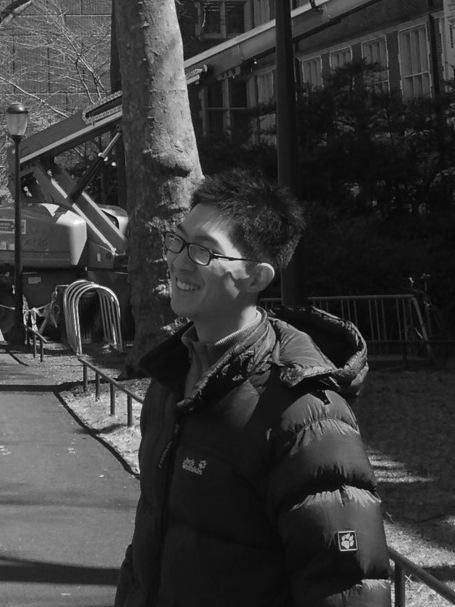



 Dr. Kapil R. Dandekar Faculty Mentor Electrical & Computer Engineering
Dr. Kapil R. Dandekar Faculty Mentor Electrical & Computer Engineering
Security is an important aspect of wireless devices and it is paramount to develop security schemes and algorithms to detect and prevent intruders from gaining unwanted access to information. It is also important to be able to simulate and visualize security attacks and performance of certain security schemes from a user standpoint. In this work, we build a Matlab graphic user interface to show the physical layer authentication scheme to detect MAC spoofing attacks. Specifically, we build an interactive user driven test framework to show the capabilities of physical layer authentication scheme using the diversity offered b y reconfigurable antennas. The Matlab framework is developed for the user to setup a test scenario, customize test inputs and select from one of the available detection algorithms. Further, the framework provides important information about the performance of the detection algorithms, test accuracy and a intuitive visual representation of the timeline and detection of attacks. We believe this Matlab graphical user interface can be extended to cover wide variety of security attacks and benchmark various security algorithms.
92
Poster Session A
College of Engineering
Balun - Dipole Fabric Antenna Designed for Military Purposes




In the world of wireless communication, there is increasing interest in smart flexible antennas for medical, military, space and civil purposes. The basis of this project was to design a working prototype of an antenna knitted in fabric that can act as your own personal communicator embedded in your clothes with GPS tracking capabilities and ability to connect to satellites. This would be for military purposes. We started off by designing a model of a balun -dipole antenna on FR4 substrate. The design and simulations were done using computer software. The antenna was then milled and the prototype tested. The proper functionality of this model enabled us to use it as a basis for designing the fabric antenna with a few adjustments like changing the substrate to cotton and rescaling the antenna layout. All the simulated fabric antenna parameters such as VSWR, return loss, gain and radiation patterns met the predetermined design criteria giving us a functioning design. Future models could include a GPS chip used to send location information to a remote user and eventually, the fabric antenna could allow for incoming calls.
Maria Nyamukuru
COE
Electrical Engineering
Dr. Kapil R. Dandekar
Faculty Mentor
Eletrical & Computer Engineering
Poster Session A
93
College of Engineering
Test Rig Used to D evelop a Smart Textile Bellyband
Dr. Kapil R. Dandekar
Faculty Mentor
Electrical & Computer Engineering




The ultimate goal of this project is to build a testing apparatus used to develop a smart textile bellyband. The bellyband consists of conductive threads integrated into the clothing worn by pregnant women, which uses knit antennas to convey biological inf ormation and to monitor the mother and fetus. The testing apparatus will provide computer controlled inflation and deflation of balloons, within a pregnant mannequin, to approximate conditions during childbirth. The design of the test rig consists of a cir cuit, in which air, from an air pump, flows through a pipe attached to an air pressure sensor and check valve, and leads to a balloon inside the pregnant mannequin wearing the bellyband. Each of these components is controlled and powered by an Arduino microcontroller, a 10 volts power supply, a twochannel relay board, and an amplifier. The Arduino program serves as the main control for the prototype as the Arduino board must be compatible with the different circuits used in the prototype. The test rig will help evaluate candidate antenna designs for the bellyband system. The wireless signals produced by the antennas and the air pressure readings from the designed test rig allow for accurate study of the rate of expansion and contraction sensed by the bellyband, as it monitors the mother’s uterine contractions.

94
Purswani COE Computer Engineering
Poster Session A
College of Engineering
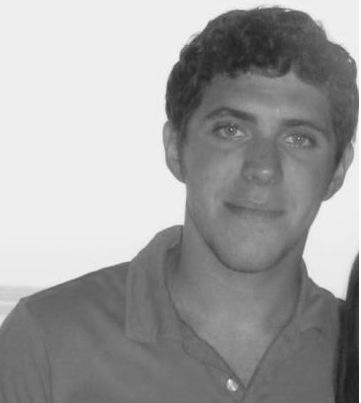
Electromagnetic Augmentation of Acoustic Instruments



The Music and Entertainment Technology Lab has developed a system that allows musicians to produce musical effects like vibrato, crescendos from silence, and sustained notes acoustically on any grand piano. By installing an electromagnet for each key into the body of the piano and syncing them to the keyboard sensor, we can actuate the steel strings, generating tones from the piano that previously could only be produced by other instruments or synthetic keyboards. This technology, termed the Magnetic Resonator Piano (MRP), has the potential to significantly impact music production and performance; however, issues such as sensitivity to the environment and an inefficient installation system hinder its deployment into performance settings. If the lighting of the environment is altered after calibration of the keyboard sensor, the tracking system’s accuracy decreases, causing notes to become unresponsive or unintentionally activated. I have developed a shield that protects the light sensors from lighting variability, and the sensor’s circuit board from other environmental hazards. This cover is easily installed and stabilizes the keyboard sensor’s calibration. The current electromagnet mechanism installed inside the piano is unstable and difficult to position: both of which endanger the well-being of the piano. My new design will stabilize the magnets, simplify positioning, and ensure the safety of the instrument. My improvements will bring the MRP a step closer to appearing on stages everywhere.

95
Adam
COE Mechanical
Dr. Youngmoo Kim Faculty
Berkowitz
Engineering
Mentor Electrical & Computer Engineering
Poster Session A
College of Engineering
iOS Applications for Music Technology Education
Kachur
Computer Engineering
Kim
Electrical & Computer Engineering




Poster Session A

96
Mobile applications (apps) can be valuable learning platforms that present sophisticated concepts in relevant and intuitive ways. It is often difficult, however, for educators to find apps that are appropriate for their specific needs. The Music and Entertainment Technology Lab has developed a suite of five custom iPad apps for use in Summer Music Technology, an educational summer camp, which introduces high school students to the math, science, and engineering concepts behind music performance and production. The apps emit, record, and analyze various tones, but the initial iterations were slow, difficult to use, and often redundant with one another, such that they were not intuitive to the average user. To improve the apps, I simplified the user interface, cut unnecessary features, and removed redundancies with the intention of making them much more accessible and user friendly. Additionally, I implemented methods for saving user input and interpolating a wave form’s average energy, and improved the speed of the applications by optimizing calculations and graphical updates. With this work, the apps are nearly ready for wide release, and we hope that they will assist educators in music and other related fields and help facilitate and revolutionize music technology learning. COE
Dr. Youngmoo
Browser - Based
College of Engineering
Notation



Sharing musical notation online is currently limited by lack of interactive capabilities. A common method of sharing sheet music today is to scan in the physical sheets and post them as images. While this offers a quick solution, these scanned -in images often have poor resolution and cannot be edited by the uploader, limiting its interactive capabilities. Alternative solutions exist that utilize musical notation software to create digitalized musical scores accessible by computer; however, these programs require the potential viewer to download the individual music files in addition to the external software required to read these files. My research utilizes Vexflow, an open -source music notation rendering API (application programming interface), to create di gital musical notation that is easy to comprehend and distribute. Since Vexflow is written completely in Javascript, notation can be rendered completely in-browser without need of installing external applications. A portion of Beethoven’s Symphony No. 5 rendered within a webpage has been created using HTML5 encoding to demonstrate these capabilities. With further research, this example could later be used within an interactive environment where the notation can be synchronized with the original music track.
Seth Nicosia
COE
Electrical Engineering
Dr. Youngmoo
Kim
Electrical & Computer Engineering
97
Musical
Poster Session A
College of Engineering
Robot Simulation Development
Benjamin Goldblatt COE
Mechanical Engineering
Dr. Richard
Primerano



Faculty Mentor
Electrical & Computer Engineering
When working in the field of robotics, a simulation must first be created before any materials or parts are fabricated or ordered. While using a robotic simulator the ideal kinematics and structural design of the robot can be experimented with and determined without the waste of time and money that are incurred by creating actual robot prototypes. Simulation software, V-Rep by Coppellia Robotics, has recently been updated and made available. It was chosen to be experimented with by our lab after being compared to other simulators (Webots, Openrave, Gazebo) because of its compatibility with various file types, supported software plugins, and overall ease of use.
We figured out how to integrate MatLab controllers with V-Rep simulations and were able to animate simple models of the Snakebot. The Snakebot is able to perform a variety of different gaits simulating weight, friction, and joint strengths. Tuning a PID controller loops was necessary in order to simulate realistic results.
We even created our own PD controller to control an Inverted Pendulum simulation which demonstrates many machine learning basic principles. We hope that the code we created and the tutorials we leave behind will help future robot designers and developers by allowing them to more easily work on the conceptual and simulation processes so that they may more quickly create prototypes for real-world testing.
Poster Session B
98
College of Engineering
Reconfigurable Modular Robotics
A current obstacle in the field of robotics is the specialization of robotic systems. Robotic systems are optimized to perform a singular task or set of tasks, and as such, have limited use in other applications. The field of modular robotic systems hopes to address this obstacle through the development of robots capable of reconfiguring to a variety of forms to accomplish several tasks. Over the course of the STAR program, a robotic module for such a system was designed and a control method was devised. In the design process, a mechanical system for a module was developed. Mechanical requirements for the modules would include have two or more degrees of freedom, a universal docking system, and be easy to assemble. Following this, a control system was implemented using Arduino microcontrollers and Xbee radios. Due to use of smart servo motors, a power supply and serial conversion board were designed to supplement the Arduino microcontroller. Finally, a distributed control algorithm was designed and implemented in the complete robotic system. Further work on this system would include development of a multiple module control algorithm and integration of various location sensors for autonomous recombination and movement structuring.
Eric Nachtigall
COE



Computer Engineering
Dr. Richard Primerano
Faculty Mentor
Electrical & Computer Engineering
Poster Session B
99
College of Engineering
Ball Balancing Robot Control System
George Slavin COE Computer Engineering
Dr. Richard Primerano Faculty Mentor Electrical & Computer Engineering
The goal of this research was to develop a ball balancing robot with an embedded balance control system, as well as a website that allowed user input to control the travel of the robot. A control system consisting of an inertial measurement unit (IMU), an embedded Linux controller (BeagleBone Black), and three brushless motors was developed for use in a ball balancing robot. Software was developed on the embedded controller to read the IMU over an I2C bus and use the data to calculate a relative reference frame for the robot. A control algorithm used the calculated reference frame to send motor commands that balanced the robot. A Controller Area Network (CAN) bus was implemented to allow communication between the embedded controller and the motors. A website was developed to enable the user to send commands to the robot. The user could connect to a website hosted on the robot via a browser and send movement commands that alter the travel of the robot.



100
Poster Session B
College of Engineering
Ball Balancing Robot Control System
The research project consisted of designing a control system for a ball-balancing robot that could balance on a basketball and be manually controlled through a website to allow users to drive the robot around a room. A balancing con trol system consisting of an Inertial Measurement Unit (IMU), embedded Linux controller (BeagleBoneBlack), motor control board, and three stepper motors was designed to balance the robot. This consisted of developing software on the embedded controller to fuse the IMU data over an I2C bus and fuse the data to calculate a reference frame for the robot. A motor control algorithm used the calculated reference frame to determine the motor movements required to keep the robot balanced. A Controller Area Network (CAN) bus was implemented to allow the embedded controller to send motor movement commands to the motor control board. The website was also hosted on the embedded controller which provides users with an interface to interact with the robot.
Stephen Wolf e COE
Electrical Engineering
Dr. Richard Primerano
Faculty Mentor
Electrical & Computer Engineering



101
Poster Session B
College of Engineering
Simulation of On - Chip Power Grids for Power - Aware Chip Design
Daniel Schoepflin COE

Computer Engineering
Dr. Baris Taskin
Faculty Mentor
Electrical & Computer Engineering



The development of computer chip design has followed two major trends. An increased number of on -chip components are incorporated to increase power and a lower supply voltage is generated to conserve energy. Each device needs a unique amount of voltage within ten percent of an ideal value. If the voltage delivered is outside these boundaries, the chip risks failure. A “power-grid,” similar to that which supplies power to homes and buildings nationwide, is used to provide correct amounts of energy to each node, which is analogous to the aforementioned buildings. The size of chips makes any industrystandard design prohibitively expe nsive to create before testing. It then becomes necessary to implement a simulation of the circuit and means for finding the nodal voltages. The project entailed the creation of Python and C++ scripts in order to use Kirchhoff’s Laws on a n extraordinarily large scale. Challenges exist in the solution of linear systems whose matrices contain tens of millions of entries and unsolvable systems that occur due to the design. “Pseudoinversion” techniques and sparse data structure methods were implemented in order to reduce memory and computational demands. This project will allow for design of power-aware circuits , which can enhance performance of microelectronics.

102
Poster Session B
College of Engineering
Synthesis of novel layered MXenes



Two-dimensional (2-D) materials, such as graphene, attracted significant attention because they are known to have unique properties that have potential in circuits, capacitors, batteries, solar cells, and other applications. Recently, a new family of 2 -D transition metal carbides and carbonitrides, so-called MXenes, was discovered at Drexel University. MXenes were produced by exfoliating the MAX phases. The latter is a large family of ternary layered carbides and nitrides that have the formula Mn+1AXn, where n=1-3, M is an early transition metal, A is an A-group element (mostly IIIA and IVA), and X is a carbon/nitrogen. In general, the MAX phases are chemically stable, but the A layers are chemically more reactive because they are relatively weakly bonded. The removal of the A layers from the MAX phases results in 2-D MXenes. Herein optimization of etching conditions to remove the A elements from various MAX phases (Ti2AlC, Ti2AlN, Mo2GaC, (Nb0.75Zr0.25)2AlC, Nb1.1AlC, and Ta2AlC) by simple immersion of their powders in hydrofluoric acid was carried out. The variables in the process include HF concentrations, etching times and temperatures. MXenes’ unique properties of being highly conductive and hydrophilic make them promising materials for supercapacitors, lithium -ion batteries, and other energy storage applications.
Brandon T. Eng SCHOOL OF BIOMED. Biomedical Engineering
 Dr. Michel Barsoum Faculty Mentor Materials Science & Engineering
Dr. Michel Barsoum Faculty Mentor Materials Science & Engineering
103
Poster Session B
College of Engineering
G raphene - based Composites for High Performance Electrical Energy Storage
Alejandro Manuel
Sánchez
Rodríguez
COE
Materials
Science & Engineering
Dr. Yury
Gogotsi




Faculty Mentor
Materials
Science & Engineering
Boris Dyatkin Graduate
Student Mentor
Technologies are demanding devices capable of storing more energy while simultaneously can charge and discharge instantly. Batteries cannot adequately meet the latter requirement, due to the reactions taking place to charge/discharge them. Electric double layer capacitors (supercapacitors) offer high energies power densities but cannot hold enough charge to act as a standalone power source for most applications.
Supercapacitor electrodes composed of nanomaterials such as carbide derived carbons (CDCs) and single layer graphene showcase high surface areas and optimized structures to maximize charge storage densities and rate handling capabilities. However, these materials require a trade -off between porosities optimized for high-density charge storage and an open structure that maximized conductivity and allows rapid ch arge and discharge.
We propose a composite material combining the high surface area of CDC’s and high conductivity of graphene achieving both goals. By combining nanopowder CDC’s and graphene oxide flakes in liquid dispersions, filtering the mixtures, and annealing them under high temperatures, we produce both freestanding membranes and distinct agglomerates of porous carbon particles wedged between graphene sheets. We vary the mass ratios of initial components to tune the composite’s properties and optimize the structure maintaining high mechanical stability, maximizing rate handling, and showcasing high gravimetric capacitance.
104
Poster Session A
College of Engineering
Kinetics of aluminum exfoliation from V2Al1.3C in hydrofluoric acid
Herein we report on the effect of particle size, acid concentration, time and temperature on the kinetics of the selective exfoliation of aluminum from ternary layered transition metal carbide V2Al1.3C. The powders of the carbide were immersed in hydrofluoric acid for Al extraction. This Al extraction was quantified by X-ray diffraction and energy-dispersive X-ray spectroscopy. Scanning electron microscopy was also used to characterize resulting 2-D layered powder. Increasing the concentration of hydrofluoric acid, decreasing the particle size of the powder, and keeping the immersion times between 6 to 9 hours at room temperature led to the greatest conversion of V2Al1.3C from the MAX phase to the 2-D V2C MXene.
Jay Shah COE Materials
Science & Engineering
Dr. Yury Gogotsi Faculty Mentor Materials
Science & Engineering




105
Poster Session A
College of Engineering
Production of Polymer Electrolyte Membranes through Free Radical Polymerization
Alex Palma COE Architectural Engineering Dr. Christopher Li Faculty Mentor Materials Science & Engineering
Batteries and fuels cells require highly conductive materials in order to maximize their potential. This project involves the methods and outcome of one form of production, holographic polymerization, for these materials. Monomers and ele ctrolytes are mixed, along with a photo-initiator, and undergo free radical polymerization, in which each individual molecule builds off the next in order to create, ideally, a rigid load-bearing infrastructure with high conductivity. Radical polymerizatio n is widely used, and accounts for 40 billion of the 110 billion pounds of polymers produced in the United States. By combining coherent light sources into an interference pattern at the mixture, a polymer chain propagates selectively at areas of construct ive interference and forms until termination, either due to a lack of remaining polymer or by encountering an inhibitor used in the mixture. Upon testing samples with varied monomers and electrolytes, we have created polymer electrolyte membranes (PEM) hig h in conductivity, yet durable. More importantly, the high anisotropy in these PEM allow for ions to flow in plane with the infrastructure, but not through the layers of the material, creating a more efficient ionconductor. These materials may have future implications for improving the performance of solidstate batteries and other energy applications.




106
Poster Session B
College of Engineering
Preventing Bacteria Development on Medical Implants through the Application of a Biomimetic Aggrecan Coating
A major problem with current medical devices and implants is the development of biofilms, layers of bacteria that can lead to serious infections in recovering patients. The goal of this project was to eliminate this problem by finding a way to covalently bind Biomimetic Aggrecan to a surface in order to determine whether or not it can function as an antibacterial coating. BA is an artificially synthesized version of the body’s natural Aggrecan, a structural component of the body’s soft connective tissue. In order to test this, glass slides were functionalized with a primary amine group through silanization. This group was then attached to free carboxyl groups on the BA molecules utilizing EDC/NHS chemistry. Slides of were then imaged on an ESEM and analyzed with an EDS to determine the presence of the sulfur found in BA. Images obtained showed that there was BA present on the slides and this was corroborated by the results of the EDS analysis, which showed the presence of sulfur atoms across the slide. Tests to determine BA’s effects on bacterial adhesion are still ongoing. These results however, show that it is possible to successfully coat a surface with BA.
Liam Barnes SCHOOL OF BIOMED.
Biomedical Engineering
Dr. Michele Marcolongo



Faculty Mentor Materials Science & Engineering

107
Poster Session B
College of Engineering
Simulating Piezoelectric Energy Harvesters (PEH) by Finite Element Method
Robert Hausler COE
Electrical Engineering
Dr. WeiHeng Shih
Faculty Mentor
Materials



Science & Engineering
The use of piezoelectrics has been found to be most prominent in the development of energy harvesting and the development of sensors. In order to find a way to implement piezoelectrics into these practical applications, both theoretical and experimental data are needed and compared. Through the use of ABAQUS, a 3D modeling software, simulations for piezoelectric energy harvesters (PEH) were studied. Three types of PEH consisting of stainless steel (SS) and lead zirconate titanate (PZT) layers are examined: unimorph cantilever (equal length of SS and PZT clamped on one end), unimorph bridge (clamped on both ends), 3-layer PEH (unimorph cantilever with an additional third layer of PZT of length shorter than the unimorph). The simulations showed that the unimorph are easier to deform than the unimorph bridges, causing more tip displacement. The 3-layer PEH testing found that more tip displacement happened when the second PZT layer was either 30 or 40 mm long attached to a 50 mm long unimorph. Further study on strain will be carried out to determine which structure can generate more induced voltage. It is also found that resonance frequency increases when the density is lowered or the modulus is increased.
108
Poster Session B
College of Engineering
The Effects of Stoichiometry and Purity on Magnetization in Ferrites
Ferrite-based soft magnetic composites are currently being pursued for use in next-generation, powerefficient electromagnet designs. Before these materials can be implemented, however, the relationship between chemistry and structure and their magnetic properties must be explored, as surface roughness and impurities can impact coercivity and saturation magnetization. This study analyzes the impact of purity, roughness, and stoichiometry on magnetization of various ferrite thin films prepared by molecular beam epitaxy. X-Ray diffraction was performed on each film both to determine its phase purity and qualitatively analyze its surface roughness. MagnetoOptical Kerr Effect (MOKE) magnetometry and vibrating sample magnetometry (VSM) were then used to determine the magnetic properties of each film. From this study, we found that the oxidation from Fe to Fe3O4 increased the coercivity and saturation magnetization of the material. Additionally, as the film surface roughness decreased, the MOKE signal increased. This study highlights structure-property relationships in ferrites and suggests ways to control their behavior in electromagnetic applications.
Adam Falcone
COE
Materials
Science & Engineering
Dr. Mitra




Taheri
Faculty Mentor
Materials
Science & Engineering
109
Poster Session B
College of Engineering
Determin in g the Fracture Toughness of Pharmaceutical Materials
Matthew West COE
Materials
Science & Engineering
Dr. Antonios Zavaliangos Faculty Mentor Materials

Science & Engineering
A practical method to determine the fractur e toughness of pharmaceutical tablets has yet to be discovered. Fracture toughness is important in helping limit the amount of wasted material due to tablets exhibiting defects during production. Increasing the toughness would reduce the cost of medicine production and ultimately the cost to the consumer. There are current methods to obtain the fracture toughness of many materials, but due to the small size, circular shape, and difficulty to machine medical tablets, these methods are not sufficient. The experiment tested to solve this problem involved compressing pharmaceutical placebos into cylindrical tablets while leaving a hole directly in the center; derived from previous work [1] on rock materials. The purpose of the hole is to eliminate the need of a predefined crack in the sample, which is used in conventional fracture toughness determining tests. By using the tablets’ geometry and breaking load, the fracture toughness of the material is calculated. The success of this test will provide industry with a way to determine the strength of their tablets so companies can properly classify different solutions to hopefully reduce waste in both the production and shipment of their product.




110
[1] A. Staroselsky, “The Express Method of Determining the Fracture Toughness of Brittle Materials,” United Tech. Res. Center, East Hartford, CT, 1999.
Poster Session B
College of Engineering
Shape Memory Alloys: A solution to medical problems
The project deals with augmenting medical devices with shape memory alloys. The processes in the medical world require a lot of reliance on metal parts. An alternative to this is an implementation of shape memory fabrics. A certain material that exemplifies properties of shape memory is Nitinol. Nitinol is an alloy of Nickel and titanium and exhibits sha pe memory and super elasticity. Moreover, these properties change according to external temperatures applied to the metal. These properties make Nitinol a vital part in today’s equipment. By knitting the Nitinol into fabric structures, the entire fabric acts as a Shape memory fabric. By using stimuli that causes changes in temperature and voltage, we can make the Nitinol contract and expand accordingly. Incorporating open source h ardware such as arduinos with the Nitinol makes a plethora of applications possible. An application of the novel properties of Nitinol would involve the machinery used by mothers during their pregnancy. Certain fluctuations in the behavior of the fetus nee d prompt treatment. Using a shape memory fabric band, the arduino can cause contractions in the Nitinol to massage the mother’s womb in response to certain stimuli from the fetus. This makes for a convenient and efficient solution.
Nigel Coelho
COE



 Mechanical Engineering
Dr. Adam Fontecchio Faculty Mentor
Mechanical Engineering
Dr. Adam Fontecchio Faculty Mentor

Mechanical
& Mechanics
Engineering
111
Session
Poster
B
College of Engineering
The Distributed Flight Array (DFA) is a type of modular robot that consists of identical, hexagonal modules that are able to attach to each other so that the group as a whole can achieve stable flight. Such a system is highly desirable because of its customizable nature and the interchangeability of each module



Zachary
 Mechanical Engineering
Dr. M. Ani Hsieh Faculty Mentor Mechanical Engineering & Mechanics
Mechanical Engineering
Dr. M. Ani Hsieh Faculty Mentor Mechanical Engineering & Mechanics
The goal of this project is twofold: 1) to design and build a DFA module so that it can be used as a research platform, and 2) to design flight control algorithms that would enable the DFA to fly in any configuration.
T he current design of each module consists of a hexagon eight inches in length with a motor and propeller in the center, along with other electrical components along the outer shell of the module. In order to properly test the flight control algorithms, a simulation environment for the DFA was created in Matlab. Simulation experiments were run using different flight control algorithms for several different configurations of the DFA to investigate how to best control DFAs. Experiments of the DFA module prototype have also been conducted to determine the flight worthiness of the DFA module. Future work on this topic includes minimizing the physical size of the DFA modules and dynamic in -flight reconfiguration of the array.
112
Block COE
Session
Distributed Flight Array
Poster
B
College of Engineering
Cell - cell junctions are critical for endothelial cell collective migration
Angiogenesis, the formation of new blood vessels from existing vessels, is important in wound healing. During this process, endothelial cells, which line all blood vessels, migrate out from the original vessel. This migration is affected by many environmental stimuli, including substrate stiffness. Cells at the migrating front communicate information to induce cells behind them to follow the migratory path. While individual endothelial cell migration distance increases on stiffer substrates, the effect of substrate stiffness on endothelial cell migration out from a cell cluster has not been characterized. In addition, cell -cell communication during that migration has not been examined. We hypothesized that cells at the migrating edge transmit forces to the cells behind them via interactions with substrate proteins rather than through cell-cell connections. To investigate this, we used siRNA to knock down VE-cadherin, a cell -cell adhesion protein. Migrating cells were fluorescently labeled and imaged by confoc al microscopy. We then used Matlab to measure cell nucleus orientation, which correlates with cell migration direction. Our preliminary results suggest that endothelial cells migrate less after six hours in the absence of cell-cell adhesions. This indicate s that endothelial cells must maintain cell-cell communication for effective migration, which is critical to wound angiogenesis.


 Biomedical Engineering
Dr. Alissa Morss - Clyne Faculty Mentor Mechanical Engineering & Mechanics
Biomedical Engineering
Dr. Alissa Morss - Clyne Faculty Mentor Mechanical Engineering & Mechanics

113
Session
Poster
B
College of Engineering
Amyloid - Beta Peptide Decreases Endothelial Cell Glucose Uptake
Neha Thomas
SCHOOL OF BIOMED.
Biomedical Engineering
Dr. Alissa
Morss - Clyne
Faculty Mentor
Mechanical Engineering & Mechanics
Alzheimer’s disease, the most common form of dementia, leads to progressive cognitive decline due to neuron death. In Alzheimer’s disease, amyloid β (A β) plaques accumulate in the brain and damage neurons. Brain blood flow and glucose uptake also decrease, which may further contribute to neuron death. Aβ peptide decreases glucose uptake in cultured endothelial cells, which line all blood vessels. However, shear stress from blood flow may increase endothelial glucose transport. We hypothesized that shear stress mitigates A β inhibition of endothelial cell glucose uptake. We designed a polydimethylsiloxane (PDMS) device to assess glucose uptake on flow-adapted cells. The device conserves glucose assay reagents, keeps cells alive, and limits leakage. We then exposed bovine brain microvascular endothelial cells to static conditions or fluid flow (5 dynes/cm2 shear stress) for 24 hours in a parallel plate flow chamber. We next starved cells in glucose-free buffer with or without Aβ peptide, added a fluorescent glucose analog, and imaged cells by fluorescent microscopy. Our preliminary results show that A β decreases endothelial cell glucose uptake in static culture. We are now determining how A β peptide affects glucose uptake in flow-adapted cells. These data will clarify how blood flow affects brain glucose uptake in Alzheimer’s disease.




114
Poster Session B
College of Engineering
Manufacturing a Hubo Ankle Roll Axis Plate
Hubo is a humanoid robot designed to model human appearance and movement. It was designed and created by the Korean Advanced Institute of Science and Technology (KAIST). Hubo is currently competing in the DARPA Robotics Challenge (DRC). A team of nine universities across America led by the Drexel Autonomous System Lab (DASL) make up the DRC-Hubo team. DASL is manufacturing many parts of Hubo to maintain the other Hubo robots located in America.
This research project focuses on building an ankle roll axis plate for Hubo. The part is used in Hubo’s ankle in conjunction with other parts to form an assembly that attaches to a motor to roll the foot. Production of the part involved drilling, boring, pocketing, and slot milling on a CNC mill. The Hubo ankle can be used for repair of Hubo robots or be used in the construction of a new robot. The process of creating the ankle piece has been documented to assist in the creation of more ankle pieces for Hubo robots.
Charles
Brawner
COE



Mechanical Engineering
Dr. Paul Oh
Faculty Mentor
Mechanical
Engineering & Mechanics
115
Poster Session A
College of Engineering
Utilizing a 3D Scanner to Create CAD Models for 3D Printing
Leonard Chan COE
Mechanical Engineering
A 3D printer is a device that creates a threedimensional solid object by additively placing successive layers of material on top of each other. Due to 3D printers’ convenience and simplicity, the process of manufacturing various parts has become easier and more efficient to keep up with the de mands of the modern world. 3D printing has many applications in the fields of engineering and medicine. Engineers can print parts overly complex to machine, and doctors can print exact segments of organs on location with patients’ stem cells.
Dr.



 Paul Oh Faculty Mentor
Paul Oh Faculty Mentor

Mechanical Engineering & Mechanics
3D sca nning works in tandem with 3D printing by producing models for a 3D printer to create. With a 3D scanner, parts that are damaged or in need of replacement can be scanned into a computer-aided design (CAD) model. The Drexel Autonomous Systems Lab (DASL) currently uses the 3D printer and scanner to produced parts used in the Hubo robot.
This STAR research project focuses on optimizing DASL’s 3D printer and utilizing the ASUS 3D scanner to quickly and efficiently manufacture parts. Upon the completion of this task, I was able to create a method of successfully scanning and printing parts that individuals are able to replicate.
116
Poster Session A
College of Engineering
Implementation of a Unified Algorithmic Framework on DARwIn - OP
This project is to port the framework Hubo -Ach, created by Dr. Daniel M. Lofaro, over to a physical DARwIn-OP as well as the fully supported simulation that is contained within Webots. HuboAch utilizes a robust three tier infrastructure that allows for simultaneous control and seamless implementation between all three tiers: virtual, miniature, and full -sized. As the market for all of these robots changes the software needs to be configured to meet each robot’s needs. DARwIn-OP is the first widely distributed mini -humanoid robot designed for research use.No framework exists for DARwIn-OP that allows for seamless implementation of software between all three tiers. The value of being able to move between testing in a simulation and on a real robot is acknowledged to be an extremely valuable tool for development of successful software on robots. Implementation of Hubo-Ach on DARwIn-OP will allow for faster development of software and seamless transitions between the three tiers.
Kenneth Chaney
COE



Computer Engineering
Dr. Paul Oh Faculty Mentor
Mechanical Engineering & Mechanics
117
Poster Session A
College of Engineering
Custom Manufacturing of Advanced Rotary Engraving Device
Materials




Science
& Engineering
Dr. Paul Oh Faculty Mentor
Mechanical Engineering & Mechanics
Automated machining is becoming a very popular method of manufacturing custom mechanical components. With lowering prices on 3D printers, Computer Numeric Control (CNC) machines and lathes, individuals are taking part in a do it yourself revolution. Despite all of these machines being readily available at the Drexel Autonomous Systems Lab, the DASL lab is unable to engrave upon round surfaces. This technology could be readily used on current designs at the lab including on the surface of the Hubo robot to better utilize the surface area of those machines. A rotary axis machine, based on the open source Eggbot platform, has been custom designed to write and engrave on spherical and ellipsoidal shapes. To design this custom hardware, Autodesk Inventor was used to create 3 dimensional models of the machine parts. These models were then imported into Cambam, a CAM software that exports g-code for CNC machining. Using this gcode, I have been able to manufacture a custom rotary axis machine utilizing dynamixel motors to draw upon spherical and ellipsoidal subject of varying sizes.

118
Diazdelcastillo COE
Poster Session A
College of Engineering
Closed - Loop Control System Implementation and Programmatic Manipulation for Precision Machining
Currently, the Tormach P-CNC-1100 owned by Drexel’s Autonomous Systems Lab (DASL) is an actively used piece of machinery used in most of the lab’s projects, from aerial UAV to humanoid robotics. The off-the-shelf machine is highly capable in terms of feeds, speeds, and general machining. The precision from feedback , however, is limited to the hobby sphere and non -existent for very high-tolerance components. Further additions to the machine are available however they come at a cost and there has been no implementation of a reliable closed-loop control system. The closed-loop system allows for precision control and movement of the machine’s actuators.
Currently, the machine relies on limit-switches and timed-sequences in order to get accurate results. As a result, the goal of my project is to close the loop and control the machine more precisely by getting digital read out of the spindle in order to achieve more precise and advanced machining operations such as gear hobbing and rigid tapping. The Tormach machine has a built in acces sory port, making for easy communication between external devices and the machine. This data acquisition channel can be used to read an impulse train in order to determine the revolutions per minute of the machine. After testing first with and Arduino, there was much better resolution through the rotary encoder’s channel. Next, a mechanical design was implemented for housing the encoder long -term into the machine. Results confirm that the closed-loop system provides accurate feedback based on further tests with a digital stroboscope tachometer.
Joseph
Kehoe
COE




Mechanical Engineering
Dr. Paul Oh
Faculty Mentor
Mechanical
Engineering & Mechanics
Poster Session A
119
College of Engineering




Utilization of Open - Source Software in Controlling Custom Hardware
James Yuichi Sato COE Mechanical Engineering
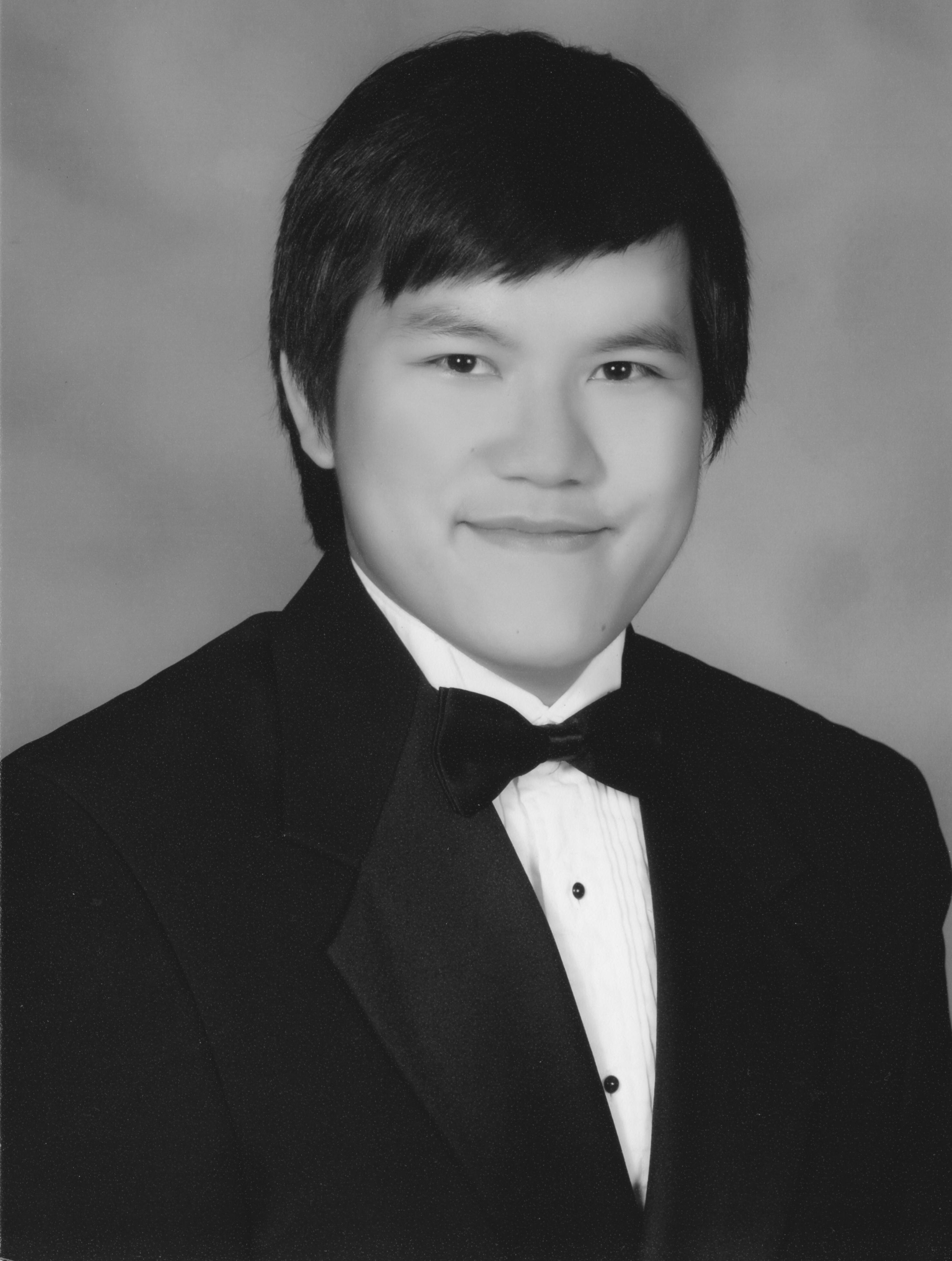 Dr. Paul Oh Faculty Mentor Mechanical Engineering & Mechanics
Dr. Paul Oh Faculty Mentor Mechanical Engineering & Mechanics
Open-source platforms are becoming extremely popular due to lowering costs of entry for opensource manufacturing and machining hardware. Cheaper 3D printers, CNC mills, and lathes are making it possible for individuals to partake in do-ityourself manufacturing of high precision parts. Due to limitations of its manufacturing machinery, the Drexel Autonomous Systems Lab is not able to create images and engravings on curved surfaces. This functionally will allow the lab to better utilize surfaces on minimal excess machinery such as the Hubo robot. Utilizing open-source designs available from the Eggbot robot, our pair designed, manufactured, and programmed a rotary engraving and imaging robot. Programming the robot, a method was needed to convert image data into numeric control data. Utilizing open-source software, I created a method of converting image and text data into path data. This path data contains the point data of vectors in an image and is post-processed utilizing mapping and stretching to square im ages on curved surfaces. This data is then converted to G -Code data that is used in self developed software to draw and engrave on spherical objects with our custom rotary engraving and imaging robot. At the conclusion of this project, the robot is able to take any form of image or text data and draw or engrave this data onto any spherical or elliptical surface. This project is at low enough cost that both professionals and hobbyists alike will be able to utilize this technology.
120
Poster Session A
College of Engineering
PWM Speed Controllers
Have you ever sought to control the speed of a motor, which may be running a pump, a fan, or even a small remote control car? Research was conducted on Pulse Width Modulation (PWM) speed controllers as a means of varying the speed of a DC motor. Direct current is supplied to a 555 timer and it produces pulses (square waves) with varying frequencies. The potentiometer is responsible for changing the frequency. For different frequencies the speed would be different. We managed to setup a modified version of the PWM circuit based off of a detailed diagram, consisting of the arduino, potentiometer, capacitors, transistors, (LED and resistorsoptional) and a breadboard. Running on a low voltage (5-15v) and a source code, the arduino allows for a signal input and output. The motor speed is determined by mapping out the analog read onto digital. A transistor was used to amplify the signal and LED’s alongside resistors depict the output of the arduino (555 timer). We were successful in controlli ng the speed of the motor.
ChimaNwokoma



COE
Mechanical
Engineering
Dr. Paul Oh
Faculty Mentor

Mechanical
Engineering & Mechanics
121
Dilichukwu
Poster Session A
College of Engineering
Improving aerodynamics of flight using morphing vehicles
Dhairya Shah COE Materials Science & Engineering

Dr. Ajmal Yousuff
Faculty Mentor
Mechanical
Engineering & Mechanics
Morphing is defined as the ability to morph, or to change the form or character of, to undergo transformation. When applied to an aerospace would refer to the capacity of a plane’s wings to change shape during flight and thus providing some aerodynamic advantage. All aircraft today use some sort of small degree of morphing in the form of control surfaces in order to pitch, roll, and yaw the a ircraft. Some examples of these mechanisms are elevators, ailerons, and a rudder. A new definition of morphing has to be developed to the existing idea being applied to current airplanes in order to develop a truly distinguishing morph-able aircraft. An actual morph -able aircraft will be able to change its mode of flight (pitch, roll and yaw) just by changing the shape of its wing. Such an aircraft would not need controlled mechanisms like elevators, ailerons or a rudder, and would thus; turn out to be more efficient and economical. As part of this study, the group is going to build a prototype of a morphable aircraft and test its aerodynamic efficiency in a wind tunnel.




122
Poster Session B
College of Engineering
Morphing Airfoils
Morphing or modifying airfoils will revolutionize the techniques used to operate an aircraft under varying flight conditions. Morphing airfoils advance flight requirements in several forms. One critical one is, with morphing airfoils one could choose to change or not change the angle of attack while effectively altering the lift coefficient. The objective of morphing in current research is to change the camber of the wings in order to alter the magnitude of lift. To implement morphing, micro-controllers were programmed using open loop command structures. The micro -controllers controlled the movement of motors. The movement of the motor shaft in turn changed the shape of the airfoil. This prototype is to be tested in the wind tunnel, from where the data will be accumulated. The data will then used to plot a graph between the lift coefficients and the angle rotated by the motor. Should the lift coefficient values vary greatly in a specific pattern, it will be a clear enough indicator of morphing potential in the aviation industry. If morphing becomes a successful and economical venture it will significantly improve fuel efficiency and flight maneuverability.
Aryaman
Sinha




COE
Mechanical
Engineering
Dr. Ajmal

Yousuff
Faculty Mentor
Mechanical
Engineering & Mechanics
123
Poster Session B
College of Nursing & Health Professions
Sources of Measurement Error in Evidenced - B ased Research
Pelagia Papathomas
CNHP




Nursing
Dr. Ellen Giarelli

Faculty Mentor
Nursing
Measurement error is one of the most common issues that researchers face when attempting to collect accurate and valid data for a study. Due to the increasing popularity of self-report questionnaires in objective research, various intrinsic and extrinsic factors can cause inaccuracies in the data collected. This descriptive study is part of a larger study that aims to understand patient experiences on three cardiac care units at Hahnemann University Hospital. Standardized instruments and tables of variables were used to collect data and potential sources of error were assessed twice per day over three weeks from data in patient charts and observation. Comparisons were drawn to determine which variables were more likely to contribute to measurement errors. All three units had high traffic with nurses, medical students, and physicians. Noise levels ranged from moderate to high on all shifts. Between 7% -18% of patients on all have physical/vision limitations with the highest numbers on 20 and 21NT. Approximately 30% more physical limitations and vision problems exist among patients on all floors, than arthritic conditions. By exploring potential sources of error, we hope to minimize their causes and allow for the collection of valid and reliable data.
124
Poster Session A
Drexel University College of Medicine
The effects of sphingomyelin on the release of p24 protein in HIV - 1
HIV-1 binds to cells that express CD4 and coreceptors CXCR4/CCR5. KR13, a peptide triazole, developed in the Chaiken lab, shows nanomolar inhibitory potency against HIV-1 by inhibiting Env from binding to both receptor and co-receptor. An Env spike consists of a trimer of gp120 noncovalently bound to a trimer of gp41. KR13 also induces the release of p24 protein from the virus via an unknown mechanism. Preliminary experiments have shown the importance of cholesterol, the most abundant membrane lipid, in the release of p24 protein from the virus. Since p24 protein crosses the membrane during release, I want to see how sphingomyelin(SM), second most abundant membrane lipid, affects the release of p24. In this study, I hypothesize that SM modulation affects t he release of p24 release.
We treated viruses with sphingomyelinase (SMase), an enzyme that removes sphingomyelin’s functionalities, to determine its impact. The results from p24 ELISA indicate a 2 -stage effect: an enhancement at low SMase concentra tions and a desensitization at higher concentrations in p24 release. The results from shedding assay indicate that gp120 shedding correlates with the desensitization of p24 release. Fluorescence assay shows no change in membrane fluidity. The results indicate SM affects mechanism of p24 release.



Sciences
Dr. Irwin Chaiken Faculty Mentor Biochemistry & Molecular Biology
Poster Session B

125
Drexel University College of Medicine
Understanding Gold Nanoparticles
Peptide Triazole mediated HIV - 1 virolysis




Aakansha Nangarlia SCHOOL OF BIOMED.

Biomedical Engineering
Dr. Irwin Chaiken
Faculty Mentor
Biochemistry & Molecular Biology
It has been established that gold nanoparticle conjugated peptide triazoles (AuNP-PT) lead to enhanced potency of both HIV -1 infection inhibition and cell-free virolysis. The Env spikes are not static on the viral membrane and hence can cluster around a ligand with high affinity. In order to test the clustering effect of spikes on AuNP-PT mediated HIV-1 inhibition mutated “dead” spikes were introduced as the number of active spikes on the virus decreased. This study shows evidence of the mechanism by which the multivalent AuNP-PT hijacks the multivalent Env spikes on HIV-1 in order to lead to enhance anti-viral effects. The AuNPs were synthesized and conjugated with the peptide triazole thiol, KR13. The spike density on the virion was varied and validated using western-blot analysis of gp120 and p24 ELISA. The experiments indicated that the larger the size of AuNP and the more the number of active spikes present on the envelope of the virus, the more the p24 leakage. This hints at the concept of surface area coverage and interaction of the virus with the AuNP-KR13. This effect between AuNP-KR13 and HIV -1 indicates that multivalent display of ligands targeting viral spikes could be us ed as potential therapy for HIV treatment.
126
Poster Session B
Drexel University College of Medicine
Cyclophilin Expression Levels in Human Cell Lines: Validation and Optimization
Splicing is the term coined for the removal of introns and subsequent ligation of exons from pre-messenger RNA. This important cellular process is carried out by the spliceosome, which is composed of five small nuclear RNAs and hundreds of accessory proteins. Most of these proteins, however, have unknown functions including the eight nuclear cyclophilins that are tightly associated with the spliceosome during splicing. In an effort to better understand how nuclear cyclophilins function within the cell during splicing, we are developing and characterizing cell lines in which the nuclear cyclophilins are knocked down using shRNA technology. As a first step in this characterization, we have undertaken Western blotting analyses of each of the eight nuclear cyclophilins, as well as control proteins, in wild -type HeLa cells. After extensive optimization, we have successfully identified Western blotting protocols appropriate for fourteen primary and secondary antibodies. Additionally, we are able to compare protein expression for each of our test antibodies between HeLa and MCF-10 cells, and see significant differences in size and intensity between the cyclophilins. The data generated in this project will allow us to characterize knock-down lines for each cyclophilin, and to eventually describe their specific roles in cellular splicing.


 Joaquin Juat COAS Biological Sciences
Joaquin Juat COAS Biological Sciences
Dr. Tara
 Davis Faculty Mentor Biochemistry & Molecular Biology
Davis Faculty Mentor Biochemistry & Molecular Biology
127
Poster Session A
Drexel University College of Medicine
Structure and Function Studies of Zinc Finger 830 (ZNF830)
Alexander Molchansky COAS Biological Sciences
 Dr. Tara Davis Faculty Mentor Biochemistry & Molecular Biology
Dr. Tara Davis Faculty Mentor Biochemistry & Molecular Biology
DNA is transcribed into pre -mRNA in higher organisms. Pre-mRNA contains introns that must be excised before translation into protein. This process, splicing, is carried out by the spliceosome. It has been shown that proteins called cyclophilins are always present within the spliceosome. Therefore, cyclophilins may play a role in regulating proper splicing. PPIL2 (peptidyl prolyl isomerase -like variant 2) is a nuclear cyclophilin that regulates splicing in vitro. Prior yeast two hybrid assays, followed by ex periments in our lab, confirmed nanomolar affinity between PPIL2 and another splicing factor called ZNF830 (zinc finger 830). It is possible that this complex may regulate splicing; unfortunately, the lack of structural or functional data on ZNF830 limits further characterization of the PPIL2:ZNF830 complex. In order to visualize the structure of ZNF830, two constructs were grown in large-scale. The cells were lysed and the proteins first purified over IMAC (immobilized metal ion chromatography) followed by gel filtration. The proteins were concentrated to 10 mg/mL and placed into crystallization trays containing conditions to promote crystal nucleation and growth. Solving the structure of ZNF830 will provide insight into its functional role within the PPIL2:ZNF830 complex, and perhaps within the spliceosome as a whole.



Poster Session A

128
Drexel University College of Medicine
Requirement of Alcohol Dehydrogenase Related Genes for Preventing DNA Damage
Acetaldehyde, the primary metabolite of alcohol, plays a major role in alcohol-related esophageal cancer. Acetaldehyde is a possible carcinogen because it cross-links DNA with proteins and disrupts the DNA replication process, causing DNA damage and genomic instability. In addition, acetaldehyde is also responsible for causing the symptoms of a “hangover.” Alcoholic consumption causes a buildup of acetaldehyde in the body. Humans possess genes specialized for the detoxification of this harmful chemical into harmless acetic acid (vinegar). However, approximately fifty percent o f the East Asian population has a variant of the acetaldehyde dehydrogenase gene ALDH2, and is unable to efficiently metabolize acetaldehyde to acetic acid. The result is an “alcohol flush reaction,” or reddening of the face due to capillary dilation, as well as increased risks of esophageal and intestinal cancers.




Using the fission yeast Schizosaccharomyces pombe as a model organism, we have characterized genes crucial for the dehydration of alcohol -related substances. Serial dilution growth assays were conducted to assess alcohol or aldehyde sensitivity of different alcohol or aldehyde dehydrogenase mutants. Work is ongoing to further investigate how these mutations affect cellular processes related to genome maintenance mechanisms, including DNA protection, cell cycle checkpoint control, and repair.
COAS
Biological Sciences

Dr. Eishi
Noguchi
Faculty Mentor
Biochemistry & Molecular
Biology
Grant P. Grothusen
Poster Session A
Drexel University College of Medicine
Cardioprotection: Role of Estrogen in Platelet Activation
 Oresta Borodevyc COAS Biological Sciences
Oresta Borodevyc COAS Biological Sciences
Platelets are associated with normal mechanisms of hemostasis and thrombotic events. Platelet aggregation during hemostasis is regulated through intracellular and extracellular signaling events that occur when platelets are activated. Literature shows premenopausal females are less likely to undergo cardiovascular/thrombotic events relative to their male counterparts. With the onset of menopause, females are in the same risk category as males in the same age group. It has been hypothesized that higher physiological levels of estrogen in pre-menopausal females provide greater cardioprotection when compared to post -menopausal females.



 Dr. Gerald Soslau Faculty Mentor Biochemistry & Molecular Biology
Dr. Gerald Soslau Faculty Mentor Biochemistry & Molecular Biology
Our studies indicate these gender and age-specific differences are likely due to the ability of est rogen to enhance agonist-induced platelet aggregation. We tested agonists (TRAP-1, ADP, Collagen, and thrombin) with estrogen and testosterone for synergy in platelets from males and females (pre & postmenopausal). Preliminary data found the plasma protein (> 90-100,000 kDa), sex-hormone binding globulin (SHBG) is needed for synergy. Down regulation of platelet estrogen receptors decreased synergy. We tested inhibitors (Calpeptin, FAK) and the lipid raft disruptor (methyl-β-cyclodextrin) to elucidate aspects of the mechanism of synergy observed between estrogen and TRAP-1. Our studies should help in illustrating some aspects of the fundamental mechanisms found in hemostasis in both genders.
Poster Session A
130
Drexel University College of Medicine




Assessment of Predictive Margins of Biopsies of Nonmelanoma Skin Cancer
Skin cancers are some of the most common forms of malignancy. Although the rate of metastasis is relative low, these cancers can be fa tal if not treated. In this ten -year retrospective study we examined cancerous skin lesions excluding melanoma. The nonmelanoma skin cancers that we studied include squamous cell carcinoma, basal cell carcinoma, and squamous cell carcinoma in-situ. Although these cancers can be treated by many different methods, this study focused on the method of biopsy and subsequent excision of the lesion.
The objective of this study is to correlate the margins of over one hundred biopsies with the presence or absence of residual cancer in the reexcision. This involves microscopically examining and identifying the margins of biopsies for the three types of cancer, and then the excision must be microscopically observed in order to decide whether there was any residual cancer. The final result of this study will be a correlation between the margins of the biopsy and the presence of residual cancer. This data m ay be helpful for the future in identifying how aggressive a dermatologist must be during the reexcision of a cancer based on the outcome of the original biopsy.
Fried SCHOOL OF BIOMED.
Biomedical Engineering
 Dr. Carrie Ann Cusack Faculty Mentor
Dr. Carrie Ann Cusack Faculty Mentor
Dermatology
131
Poster Session B
Drexel University College of Medicine

Optimization and Standardization of a System for the Dual Retroviral Transduction of CD8+ T cells
COAS Biological Sciences



 Dr. Peter Katsikis Faculty Mentor Microbiology & Immunology
Dr. Peter Katsikis Faculty Mentor Microbiology & Immunology
CD8+ T cells play vital roles in adaptive immunity primarily by lysing infected cells and tumors. Uncovering the mechanistic details by which CD8+ T cells respond to infection has potential in developing treatments and elucidating cellular interactions elicited during the immune response. Previous research published by our lab suggests that miR-155 expression plays a critical role in CD8+ T cell response (Gracias, et al., Nature Immunology 14:593602, 2013). Extending the reach of this study, we hope to develop a system by which to dually transduce CD8+ T cells with retroviral vectors containing genes encoding miR-155 and a dominant negative version of a known target, SHIP-1.Once parameters were optimized on NIH-3T3 immortalized mouse fibroblasts, experiments were done assessing the efficacy of the methods on naïve and activated T cells harvested from Thy1.2+ mice whi le investigating the relative effectiveness of the technique across splenocyte subsets. Flow cytometry analysis suggested that the highest percentage of dual transduction was obtained in retroviral supernatant with a 1:7 ratio of MSCV -Thy1.1:PINCO-GFP vectors. Our lab plans to utilize the optimized dual transduction strategy to investigate the effects of manipulated SHIP-1 and miR-155 expression in CD8+ T cell -mediated immune responses to the murine WSN -OVA influenza strain and tumors.
132
Poster Session B
Drexel University College of Medicine
Visualization of Sigma1 ligand induced changes to androgen receptor intracellular localization
Androgen receptor (AR) is the primary driver of prostate cancer progression, and at all stages of disease prostate cancer cells are dependent upon AR signaling for growth and survival. AR is synthesized and kept in the cytoplasm until androgen binding medi ates nuclear translocation, wherein AR functions as a transcription factor. The stable maintenance of AR is dependent on its association with heat shock protein 90 (HSP90), and destabilization of this complex results in ubiquitin proteasome mediated degradation of AR. Our laboratory has recently discovered that the novel membrane-bound chaperone protein, Sigma1, may contribute to AR stability and intracellular transport. My project was to develop a confocal microscopy based experimental approach to evaluating Sigma1 selective small molecule ligand induced changes in the intracellular localization of AR, HSP90, and Sigma1. We hypothesized that Sigma1 ligand treatment could alter the intracellular localization and co-localization of these three proteins. We found that when LNCaP cells, an AR dependent prostate cancer cell line, are treated with our Sigma1 ligand, there was a dissociation of cytoplasmic HSP90 and AR and lower levels of nuclear AR.




Angelica
Connor
SCHOOL OF BIOMED. Biomedical Engineering
Dr. Felix J. Kim
Faculty Mentor
Pharmacology & Physiology
133
Poster Session B
Drexel University College of Medicine
Characterization of Sigma1 in an Atypical Teratoid/Rhabdoid Tumor (AT/RT) Cell Line
Daraz


 Biological Sciences
Biological Sciences
 Dr. Felix J. Kim Faculty Mentor Pharmacology & Physiology
Dr. Felix J. Kim Faculty Mentor Pharmacology & Physiology
Atypical teratoid/rhabdoid tumor (AT/RT) is a rare pediatric tumor associated with poor survival rates and few effective treatment options. The cell biology of AT/RT is not well understood. However one distinguishing feature of AT/RT cells is that they lack many of the oncogenic mu tations associated with most cancers. Absence of SMARCB1 expression in AT/RT cells is thought to drive tumorigenesis and progression. Interestingly, lack of SMARCB1 expression has been shown to sensitize rhabdoid tumor cells to endoplasmic reticulum (ER) stress, suggesting that disruption of ER homeostasis may provide an effect therapeutic approach to suppressing AT/RT. Our laboratory is interested in understanding the biological role of the Sigma1 chaperone system in tumor cell protein homeostasis. Sigma1 is a novel integral membrane chaperone that is highly expressed in a number of cancer cell lines. We have shown that treatment with certain Sigma1 selective compounds can be used to modulate ER protein homeostasis. For my project we used the CHLA-02 -ATRT cell line to evaluate Sigma1 as a potential therapeutic target in AT/RT. We found that Sigma1 is expressed in the ER of this cell line, and that a Sigma1 selective compound can be used to induce ER stress mediated apoptosis of AT/RT cells.
134
COAS
Poster Session B
Drexel University College of Medicine

Viral and Host Factors Affecting Neuronal Expression of the Protein Ferritin Heavy Chain: Implications to HIV - induced Neurodegeneration in HIV - positive Drug Users
Ferritin, a protein involved in iron deposition and storage, is composed of the protein subunits Ferritin Light Chain (FLC) and Ferritin Heavy Chain (FHC). Recent data have shown that FHC acts as a negative regulator of the chemokine re ceptor CXCR4, one of the major HIV-1 co -receptors. However, CXCR4 is also critically involved in CNS homeostasis as it regulates both neuronal and glial function, including neuroprotective signaling. Our laboratory has recently shown that mu-opioid receptor agonists, such as morphine, increase neuronal levels of FHC, which leads to inhibition of CXCR4-mediated signaling. Furthermore, we found higher levels of FHC and altered CXCR4 status in the brain tissue of drug users infected with HIV-1, leading to incr eased neurological dysfunction. Our data also show that inflammatory cytokines, specifically tumor necrosis factor-alpha (TNF -α ) and interleukin-1 beta (IL -1β), up-regulate FHC protein expression in neurons. This study aims to investigate the role of the HIV protein gp120 on neuronal FHC and to determine if IL -1β is involved in morphineinduced changes in neuronal FHC. These results will provide us with a better understanding of the components of HIV infection that promote FHC expression in neurons, ultimately aiding us to discover more effective therapeutic methods to treat neuroAIDS.



Poster Session B

135
COAS Biological
Olimpia Meucci Faculty
Pharmacology & Physiology & Microbiology & Immunology
Sciences Dr.
Mentor
Drexel University College of Medicine
Regulation of the Chemokine Receptor CXCR4 by Morphine and Endomorphin - 1 and its Role in HIV - Associated Neurocognitive Disorders
Juhi D. Motiani COAS Psychology

Dr. Olimpia
Meucci
Faculty Mentor
Pharmacology & Physiology & Microbiology & Immunology
The CXCL12/CXCR4 chemokine-receptor axis plays crucial roles in the regulation and function of the central nervous system. CXCR4, a G-protein coupled receptor, and its natural ligand, the chemokine CXCL12, are widely expressed by neuronal and nonneuronal cells and regulate their survival, differentiation, migration, and cell-to -cell communication. Alterations of CXCL12/CXCR4 function are involved in HIV-associated neurocognitive disorders (HAND). Previous in vitro and in vivo studies in our laboratory have shown that prolonged exposure of neurons to opiates, such as morphine, increases intracellular levels of the protein ferritin heavy chain (FHC). This inhibits CXCR4 signaling in neurons, impairing CXCL12 neuroprotective function. Importantly, opiate drug abuse, which is often associated with HIV infection, is known to exacerbate HAND.




The specific goal of this study is to determine whether the endogenous mu-opioid agonist, endomorphin -1, also alters neuronal FHC levels. Primary cultures of rat cortical neurons are exposed to different concentrations of endomorphin -1 (or morphine). At the end of the 24-hour incubation period, neuronal protein extracts are collected and processed for Western blot analysis. These studies are expected to provide new insights into the regulation of FHC by opioids under physiological and pathological conditions and help us characterize the role of FHC in HIV neuropathology.
Poster Session B
136
Earle Mack School of Law
Murder Sells: A Study on Law in American Popular Culture

When Americans think of popular culture, music, movies, and celebrities gracing the red carpet come to mind. What most people less consciously realize, however, is that law is an extremely prevalent topic in popular culture as well. I chose to examine the presence of law in popular culture by reviewing volumes sampled from the thirty-nine years of publication of PEOPLE Magazine. Ever since PEOPLE came into existence in 197 4, it has been the most widely r ead public interest magazine. I chose articles from three five-year blocks spread over the entire timeline of PEOPLE Magazine’s existence. I categorized each individual article on two levels: whether or not the article had a law component, and if so, what type of law was mentioned in the article.
On average , over twenty percent of the articles that have been published in PEOPLE Magazine contain a law-related component. Within this, Criminal Law, most notably high-profile crimes such as murder, were most common. These findings confirmed that law is a significa nt component of American popular culture and further suggest that Americans enjoy the sense of mystery, transgression, and justice that high-profile crimes provide.



 COAS Philosophy Dean Daniel Filler Faculty Mentor Earle Mack School of Law
COAS Philosophy Dean Daniel Filler Faculty Mentor Earle Mack School of Law
137
Margulis
Poster Session A
Goodwin College of Professional Studies




College Athlete Medical Coverage in the Southeastern Conference
Michael Proska GOODWIN Sport Management
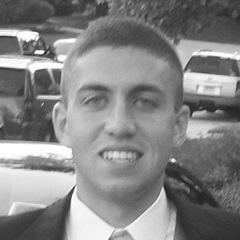 Dr. Ellen Staurowsky Faculty Mentor Sport Management
Dr. Ellen Staurowsky Faculty Mentor Sport Management
Recent news coverage regarding the long term health risks associated with concussions has prompted greater attention to the issue of who pays when a college or professional athlete gets hurt. In early July of 2013, lead attorneys in a set of lawsuits filed by former professional football players that could cost the National Football League (NFL) an estimated $5 billion or more were ordered by a Philadelphia judge to mediation to determine if a settlement is possible. While the professional sport world struggles with the question of what is adequate compensation for injuries sustained by athletes in their employment, the area where there may be a larger and more complicated se t of questions exists at the level of college football. Curious about what kind of medical coverage Southeastern Conference (SEC) schools offer given the SEC’s status as the best football conference in the country, we examined medical coverage policies as found in college athlete handbooks and other forms available online, looking specifically at whether they provided 24/7 medical coverage, whether they covered athletes after their eligibility expired, how they handled pre-existing conditions, whether athletes had access athletes to independent second opinions, and whether the cost of coverage was born by the athlete or school or shared.
Poster Session B
138
iSchool: College of Information Science & Technology
Affinity Propagation with Map - Reduce

Whether you are browsing the web or logging onto CNN for news, text clustering is an integral part of our digital lives. Therefore, creating efficient and effective clustering algorithms is key to organizing the vast amount of information generated on the web.
The Affinity Propagation (AP) algorithm implementation with MapReduce, a popular framework for distributed computing, is a promising solution to large -scale data clustering. We used Apache Hadoop, an open-source MapReduce platform that has been wi dely adopted for data-intensive computing. Our first steps were to implement AP in Java and then deploy a Map-reduce version. AP performs clustering by passing messages between data points and identifying representative exemplars in a collection. It dynamically and iteratively updates data points’ availability and responsibility scores, based on which clusters and related centroids can be identified. Our research has focused on designing and implementing small, individual MapReduce jobs with an aim to maximize the efficiency of AP clustering.
The Affinity Propagation algorithm has been shown to be efficient and, if combined with the power of distributed computing, can be used in various big-data clustering and pattern recognition applications. We plan to evaluate the efficiency, effectiveness, and scalability of the algorithm using benchmark data collections



139
Sheik Hassan iSCHOOL Software Engineering Dr. Weimao Ke Faculty Mentor iSchooL
Poster Session A
iSchool: College of Information Science & Technology
Automatic Identification of Custom File Formats
Research institutions produce huge amounts of data every day. These data occur in different types, making it difficult to manage because knowledge of the file type is essential in choosing the right programs to process the file’s data. The DataNet project aims to address these sorts of challenges in big datasets.
 Technology
Dr. William C. Regli Faculty Mentor
Technology
Dr. William C. Regli Faculty Mentor
iSchool & COE:
Computer Science
As part of DataNet, our lab, The Applied Informatics Group built the Format Registry, a repository for meta-data and sample files about file formats. We also created an automated process to identify these formats. Existing file identifiers, such as JHOVE, which uses parsers and the file extensions to identify image, audio and text formats, can neither be used for legacy or custom formats, because they don't have access to an appropriate parser. Nor in revised formats, where extensions aren't enough to know the file's version.
Our identifier is made to address these shortcomings. Applying K-Nearest Neighbors and Kolmogorov Complexity, we use the compressed length of the files, individually and concatenated, to measure the similarity to known samples. Therefore, our file Identifier is able to assign a label to a file, which helps in its storage and management, and eventually it will help to capitalize most produced data in research.




140
Akeredo lu iSCHOOL Information
Poster Session A
iSchool: College of Information Science & Technology
Using Minecraft as a Remedy for Executive Dysfunction
Executive function skills are a complex set of cognitive regulatory processes that underlie adaptive, goal-directed responses to situations, and include activation, focus, effort, emotion, memory, and action. Behavioral disorders such as autism and attention deficit hyperactivity disorder include executive dysfunction, causing an impairment in the ability to plan effectively, initiate action, and follow through with tasks. This dysfunction is not always in evidence, however; children with ADHD, for example, often have no problem playing games like Minecraft which require a great deal of activation and planning. The goal of this project, MindFun, is to remedy dysfunction in activation, timeliness, and planning by simulating scenarios in which children display executive impairment within the context of engaging activity provided by Minecraft. Such scenarios include cleaning a bedroom, getting dressed, and preparing for school. MindFun modules modify stock Minecraft code to include an itemstrewn bedroom needing to be organized, a dressing room stocked with clothing for the ch ild to choose from, and a washroom containing medicine and daily hygiene tools to use. A pilot study is planned to measure the efficacy of this mod on children with ADHD.



 Eric Rock COE Computer Engineering
Eric Rock COE Computer Engineering
 Dr. William C. Regli Faculty Mentor iSchool & COE: Computer Science
Dr. William C. Regli Faculty Mentor iSchool & COE: Computer Science
141
Poster Session
A
iSchool: College of Information Science & Technology
Building a Better Server - less Messaging and Presence Management System
 Robert Taglang COE
Robert Taglang COE
Computer Engineering
Dr. William C. Regli Faculty Mentor iSchool & COE: Computer Science
XMPP (extensible messaging and presence protocol) is a well established RFC standard for Internet chat in a client-to -server TCP architecture. Unfortunately, in a MANET (Mobile Ad -Hoc Network), this kind of connectivity cannot be guaranteed. The Naval Research Lab funded the Applied Informatics Group to work on XOP (XMPP overlay protocol), a distributed XMPP server that uses UDP multi -cast to broadcast presences and messages in a MANET environment. The last few months were spent optimizing this code base and implementing unsupported features. These changes included parsing incoming data streams using the Java SAX API, a new lightweight implementation of service discovery, support for the Android platform, and the ability to inter -operate XOP with external XMPP servers.




142
Poster Session A
Leibniz Institute for New Materials




Electrospinning of ultrafine carbide fibers for energy storage applications
Electrical energy storage (EES) has emerged as a highly efficient technology for rapid energy storage and recovery. These devices are based on the electrical double- layer effect of reversible ion electrosorption on charged surfaces and are often referred to as supercapacitors or ultracapacitors. The amount of energy stored in such devices depends on the surface area, so, most effective electrode materials are high surface area carbons. In my work, I focus on the synthesis of ultrafine fiber mats prepared via electrospinning. For this, we utilize sol gel precursors with polymers carriers to create a carbide/carbon hybrid material. Chlorine treatment is used to transform the fibers into highly porous carbide -derived carbon while maintaining the structural integrity of the mat. Thus, this technique provides the ability to synthesize binder- free electrodes with good electrical conductivity and excellent control over the pore size distribution. We have adapted a previously used chemistry and processing technique, namely electrospinning a sol- gel of Ti-Butoxide with Polyvinylpyrrolidone, to develop a new synthesis route for Nb-Butoxide. In this technique the sol gel network is transitioned to metal carbide through heat treatment and a highly porous carbon is obtained after thermal chlorine treatment; the latter selectively removes Ti or Nb from the ceramic fiber network. Materials characterization has become the key tool to understand the influence of the gelling conditions on the resulting particle size in the fiber s after the spinning has been carried out. Many basic aspects of this process still remain unclear from the literature; thus, we utilize Fourier- transform infrared spectroscopy and rheometry to gain a better understanding of the reaction processes and kine tics. Ambient humidity, concentration, complex builders, the acidic catalyst, and the gelling time are important parameters to study in detail to obtain optimized materials.
Lena Funke INM
Dr. Jennifer Atchison Faculty Mentor INM
Dr. Volker Presser Faculty Mentor INM
Poster Session A
143
Leibniz Institute for New Materials
Characterization of Electrospun Carbon Fibers from Polyacrylonitrile
Aquil Jones
iSTAR
COAS Mathematics
Dr. Jennifer Atchison Faculty Mentor INM
Dr. Volker Presser Faculty Mentor INM
Finding viable solutions for advanced and highly efficient energy storage is a paramount and ongoing challenge in materials science and engineering. One emerging technology for highly reliable and efficient energy storage is the use of electrochemical capacitors, also known as supercapacitors. Considering the low cost and high abundance of carbon materials combined with the versatility and tunablity, carbon is the electrode material used for such devices. As the energy storage mechanism relies on electrosorption of ions, it is essential to employ carbons with a large and well-developed pore volume but design of the electrode itself is equally important as carbon design. In particular, fiber-based electrodes have been shown to excel in power handling and requ ire no addition of polymer binder.
The most common precursor to obtain carbon fibers, polyacrylonitrile (PAN) has been shown to be a very suitable supercapacitor electrode material. To increase the surface area, addition of water was investigated as a facile way to introduce additional pores to the PAN fibers via electrospinning. Samples were first electrospun, and then stabilized at 250°C, carbonized at 750°C and 1100°C, and activated at 500°C in CO 2 . The results show that the specific surface area of the fibers increased from 20 m 2/g to 90 m 2/g with low temperature activation in CO2 , and also that PAN derived carbon fibers are a feasible candidate to being converted into supercapacitor electrodes.



Poster Session A

144
Leibniz Institute for New Materials




Core - Shell Composite Ultra - Fine Fiber Materials for Supercapacitor Electrode Applications
Electric double-layer capacitors (ELDC), also known as supercapacitors, are energy storage devices suitable for high power applications. Electrode materials for these capacitors have to combine a number of properties, such as high electrical conductivity, large surface area, and excellent electrochemical stability in a certain electrolyte. Activated carbon powders are currently the most commonly used material in commercial supercapacitors, but this material requires the addition of polymer binder to obtain freestanding film. The same need arises for other carbon nanoparticles, such as carbon onions, or onion-like carbon. Carbon onions are small spherical nanoparticles that can be envisioned as multi-shelled fullerenes with an average diameter of around 5 nm and high electrical conductivity. Considering that polymeric binder adds dead weight and decreases the electrical conductivity, significant research efforts have been dedicated to carbonized electrospun fibers as electrode materials to explore binder-free electrode concepts.
Our approach was to use core-shell electrospinning to produce electrodes that combine the high electrical conductivity of carbon onions with the binder-free design of carbon fibers. For that, carbon onions were used in the shell with a core of conventional polyacrylonitrile (PAN). In detail, we used polyvinylidene fluoride and single digit nanodiamond (SDNDM; precursor for carbon onions) solution for the shell. After spinning, the fibers were oxidized, carbonized, and then subjecte d to a second heat treatment to convert the nanodiamonds to onion -like carbon (OLC).
Our experiments show that this procedure can successfully be applied to obtain carbon fiber electrodes coated in a non-homogenous layer of OLC. Further work will have to be dedicated to increase the stability of the SDND in the shell solution to improve the distribution of the OLC on the electrode material.
iSTAR COE Materials Science & Engineering
Matthew Langenstein
INM
Dr. Jennifer Atchison Faculty Mentor
INM
Dr. Volker Presser Faculty Mentor
Poster Session A
Leibniz Institute for New Materials
Investigating Charge Induced Expansion Of Porous Car bon Electrodes in Ionic Liquids
Alexan
der McBride
iSTAR
COE Materials




Science & Engineering
Dr. Jennifer Atchison Faculty Mentor INM
Dr. Volker Presser Faculty Mentor INM
Devices containing carbon electrodes immersed in ionic liquids are being used in a number of applications. Electrochemical double layer capacitors (EDLCs), or supercapacitors, employ porous carbons in ionic liquid electrolytes for electrostatic charge storage. Recent supercapacitor studies, have demonstrated after consecutive charging and discharge cycles, volume fluctuations occur in the carbon-based electrodes, effecting ion electrosoprtion. One prior study created a mathematical model, the Bazant Equation, to explain the correlation between charge and strain. However, the study was constrained to a single ionic liquid (1-ethyl-3-methyl-imidazoliumtetrafluroborate) and a single carbon electrode (B4 C). The current research is focused on universally understanding the relationship between applied charge, and electrode strain, within porous carbons in ionic liquids. An electrochemical dilatometer containing a capacitive displacement transducer was used to record the working electrode expansion in situ. While many problems arose preventing complete data analysis, these problems were addressed and solved individually, so further experiments can quickly be compiled to accurately assess the scope of the Bazant Equation. Creating such a model between charge and strain would help researchers understand the processes occurring within the carbon electrodes, and allow for intentional manipulation of the effect for applications ranging, from high-performance actuators, to ultrasensitive strain sensors.
146
Poster Session A
Leibniz Institute for New Materials
Electrospun Separators for Application in Supercapacitors
Separators are barriers in supercapacitors or electrochemical capacitors that electrically separate the anode and the cathode however also contribute to the series resistance of the cell. Separators must be porous, have a high surface area and be mechanically stable so that the barrier does not short circuit, but is still porous enough to allow ion transport. Electrospinning is a simple method that produces materials that are porous and have high surface area. Both melt spinning, which is electrospinning utilizing heat, and solution electrospinni ng were considered in creating this material.




Mats were electrospun from solutions of 2.7 wt% Chitosan/Trifluoroacetic Acid and 6% Polypropylene/Dimethylformamide/Cyclohexane/A cetone. Characterization of the mats and fibers resulted using SEM imaging and the rate of deposition for the mats was also explored.
Victoria M. Sadowski iSTAR SCHOOL OF BIOMED. Biomedical Engineering
Dr. Jennifer Atchison Faculty Mentor INM
Dr. Volker Presser Faculty Mentor INM
147
Poster Session A
School of Biomedical Engineering, Science & Health Systems




Osteonal Parameters in Skeletally Immature Porcine Tibia
Aravind Ponukumati

SCHOOL OF BIOMED. Biomedical Engineering
Dr. Sriram Balasubramanian Faculty Mentor
School of Biomedical Engineering, Science, & Health Systems
There is limited information on the microstructure of pediatric bone tissue. Due to a dearth of postmortem pediatric human specimens, there is a need to identify an age-equivalent animal model for pediatric long bones. The objective of this study is to quantify the microstructure of skeletally immature porcine tibia. Tibia from three-month old (n=14) and six -month old (n=16) pigs were used for the study. Five millimeter thick sections were made at 38% and 50% sites from the distal end of the tibia using an Isomet 1000 precision saw (Buehler, Lake Bluff, IL) and block -mounted in a slow curing epoxy resin. The epoxy blocks were ground using 400 - and 600-grit sandpaper and polished with 1.0- and 0.05-micron alumina slurry using a PowerPro 4000 (Buehler, Lake Bluff, IL). For each bone section, several regions of interest were imaged at 100X magnification using a Leica DM 4000-B upright microscope and processed using ImageJ software. Population, distribution, and size of the primary and secondary osteons were com puted. Initial findings show a greater number of secondary osteons in the periosteal region than in the endosteal region. Knowledge of immature porcine bone microstructure could help provide insight into identifying a suitable animal surrogate for pediatric bone.
148
Poster Session B
School of Biomedical Engineering, Science & Health Systems
Evaluating Teen Driving using a Simulator: Left Turn Scenarios
Car crashes are the leading cause of death in teens. These crashes commonly involve young drivers performing unsafe left turns. In order to study teen driving performance and prevent future crashes, left turn crash scenarios at 3 and 4-way intersections were replicated using a driving simulator and tested among 38 teens with less than 90 days of licensure. Teens were randomly assigned to one of two groups: one study group was trained with a hazard -an ticipation program: RAPT (Risk Awareness and Perception Training) and the other did not have the training (control group). Simulator and eye-tracking data was collected. This data is currently being analyzed for hazard-anticipation strategies and traffic-check patterns. Coding of hazard -anticipation involves recording the time and location of eye-glances. Traffic-checking involves noting if participants routinely follow left-right-left glancing behaviors prior to turning left. This coding will allow for a comparative analysis between the trained and non -trained group of teenagers. It is hypothesized that more hazard-anticipation glances will be found in the trained group, validating the driving simulator and eye-tracker as effective tools to asses driving skills. To prevent future teen crashes, Simulated Driving Assessment tests may be implemented into state licensure programs or recommended by insurance companies.
DuBois
SCHOOL OF BIOMED.

Biomedical




Engineering
Dr. Sriram
Balasubramanian Faculty Mentor
School of Biomedical Engineering, Science, & Health Systems
Dr. Catherine McDonald , Ph.D., R.N.
Mentor
Univ. of Penn.
149
Poster Session
A
Melissa R.
School of Biomedical Engineering, Science & Health Systems
The Effect of Positive Reinforcement on Teen Driving Behavior
Biomedical Engineering
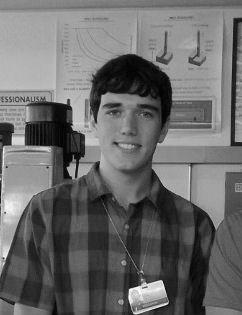
Dr.



 Sriram Balasubramanian Faculty Mentor School of Biomedical Engineering, Science, & Health Systems
Dr. Yi - Ching Lee Mentor Center for Injury Research & Prevention CHOP
Sriram Balasubramanian Faculty Mentor School of Biomedical Engineering, Science, & Health Systems
Dr. Yi - Ching Lee Mentor Center for Injury Research & Prevention CHOP
Motor vehicle crashes are the leading cause of death in teens. Positive reinforcement with incentives has been shown to be effective in altering risky behaviors. This study examines the effect of positive reinforcement with motivational incentives on teen driving behavior. The positive reinforcement will be delivered to teens via an in-vehicle monitoring system (IVMS) that tracks driving behaviors in a driving simulator and provides driver feedback. Before this feedback system can be developed a review of 13 driver feedback apps for Apple, Android and Windows smartphone devices via onroad tests was undertaken. Each app was scored by -3 observers using a scoring matrix. Teens are being interviewed in a semi-structured order to gain their opinions on driver feedback and incentive methods. The simulated drive will be a 10-minute drive over 30 200 meter square tiles and involves various speed control tasks and representative scenery. Two groups of teens subjected to positive or negative driver feedback will drive the simulator to examine the effect of feedback content on teen driver’s speed management behaviors. The results of this study will have the potential to recommend forms of driver feedback to IVMS developers and incentive strategies that can be used by insurance agencies.
Poster Session A
150
School of Biomedical Engineering, Science & Health Systems
Testing which Techniques are Most Important for Successful Advice Giving
There are many ways to respond to friends when approached by them about a problem. Research on this topic explains the importance of many concepts (listening in a certain sequence, inquiring about the problem, face-saving, etc.) in providing effective support and advice. To test the importance of these concepts, we included them into a protocol that outlines the most effective steps to take when providing support and advice. In our study, 53 general-population participants read three hypothetical conversations in which they disclosed a problem to a friend who provided support using none, some, or all of the elements of the protocol. Participants were then asked to rate the interaction (regard the friend had for them, quality of the advice, and likeliness of coming back for more advice) in each of the three scenarios. Results show that when responses included more elements of the prototype, the participants felt less judged by their friends, that the quality of the advice was greater, and that they would be more likely to go back to that individual for problems in the future. Our results suggest that this protocol would be a useful tool when teaching individuals how to provide effective support for others.
Lindsay Eckersberg
COAS Psychology
Dr. Sriram Balasubramanian
Faculty Mentor
School of Biomedical Engineering, Science, & Health Systems
Dr. Eran Magen
Mentor Psychology


Univ. of Penn.

151
Post er Session A
School of Biomedical Engineering, Science & Health Systems
An In Vitro Biomechanical Study to Evaluate the Kinematics of Postero - lateral Static and Expandable Lumbar Interbody Spacers
Thomas Lightfoot - Vidal SCHOOL OF BIOMED. Biomedical Engineering

Roughly 50% of Americans report having back pain issues each year and lower back pain is the leading cause of disability worldwide. Lumbar interbody spacers have been developed to decompress impinged neurological structures, alleviating pain. When used in conjunction with posterior screws, they may supply differing amounts of anterior support. Globus Medical, Inc (Audubon, PA) has developed spacers with vertical expansion capabilities that may outperform the fixed-height spacers.
Dr. Sriram




Balasubramanian Faculty Mentor
School of Biomedical Engineering, Science, & Health Systems
Four implants on seven specimens were tested; IntraLIFTM RISE® (a titanium expandable, minimally invasive spacer inserted through a cannula) [IR], RISE® (a titanium expandable spacer), CALIBER® (a polyether ether ketone expandable spacer), and SUSTAIN® O (a static implant). These interbody spacers were coupled with unilateral/bilateral pedicle screws (UPS/BPS) and unilateral/bilateral facet screws. Biomechanical differences were measured in terms of rotational flexibility in three bending directions: flexionex tension, lateral bending, and axial rotation.
No biomechanical significant differences were detected between constructs. However, constructs which had IR implanted were more successful in limiting the specimens’ range of motion. Of the posterior instrumentation types, BPS provided the most immobilization.
Kinematically, IR is similar to other implants. Clinically, IR is the favorable spacer because it performs equivalently to other spacers and causes less disruption upon insertion.
Poster Session B
152
School of Biomedical Engineering, Science & Health Systems
The effect of nitric oxide zeolite on Pseudomonas aeruginosa
Past research has shown that nitric oxide (NO) has very effective antibacterial properties that have advantages over commonly used antibiotics. For instance, NO does not cause resistance in the offspring of surviving bacteria, therefore reducing the risk of creating “superbugs.” Because of its antibacterial property, many researchers are working on integrating NO into wound dressings to prevent infections and help promote faster healing. The present research focuses on using NO -loaded -zeolite to inhibit bacterial growth. NO -loaded-zeolite is incorporated into emulsifying ointment and encapsulated in pouches made of semi-permeable membranes that allow the NO to be released into the targeted area. In the experiments carried out, the NOcontaining pouches, control pouches containing emulsifying ointment, and non-manipulated sections of membrane were tested on pseudomonas aeruginosa. The pouches containing NO resulted in bacterial death, whereas the controls showed bacterial growth, thus supporting NO’s antibact erial properties. Future research will be carried out with the NOreleasing dressings, including animal testing, to determine whether or not they are viable for human wound care.



 Sarah Julius SCHOOL OF BIOMED. Biomedical Engineering
Sarah Julius SCHOOL OF BIOMED. Biomedical Engineering
 Dr. Kenneth A. Barbee Faculty Mentor School of
Dr. Kenneth A. Barbee Faculty Mentor School of
Biomedical Engineering, Science, & Health Systems
153
Poster Session A
School of Biomedical Engineering, Science & Health Systems
Toxicity of Nitric Oxide - Releasing Pouches for Wound Healing Cells
Moorehead SCHOOL OF BIOMED.
Biomedical Engineering
 Dr. Kenneth A. Barbee Faculty Mentor School of Biomedical Engineering, Science, & Health Systems
Dr. Kenneth A. Barbee Faculty Mentor School of Biomedical Engineering, Science, & Health Systems
Nitric oxide (NO) is a small, but extremely important biological chemical that functions as a signaling molecule for many cellular processes. Macrophages, a type of immune system cell, secrete high concentrations of NO when att acking infectious microbes. That particular characteristic of macrophages can be simulated by semi-permeable membrane pouches filled with NO laced nanoparticles mixed wit h a hydrophobic ointment base. Certain pouches have been shown to kill several types of common infectious microbes. However, literature suggests that the concentrations of NO that are capable of killing microbes, could be harmful to fibroblasts, the cells in a wound responsible for starting the healing and tissue repair processes.


The goal for this research project was to expose fibroblasts to pouches known to kill bacteria in order to quantify the affect, detrimental or beneficial. This was done in vitro by submerging the NO pouches via Transwells in cell culture medium where the NO was free to diffuse across to the cell layer. Preliminary results indicate that NO concentrations high enough to kill microbes are only slightly detrimental to fibroblas ts, which is promising when further developing this novel method for wound care.

154
Poster Session
A
School of Biomedical Engineering, Science & Health Systems
An Investigation of Mathematical Reasoning and Problem Solving
Mathematical reasoning is an integral part of problem solving ability as well as complex reasoning, which are tasks most closely associated with the prefrontal cortex of the brain. Functional near infrared (fNIR) systems provide an easy-to-use and relatively lightweight way to monitor individuals’ prefrontal cortex activity in real time. By using near infrared (NIR) light, the device uses the absorbance of light of oxygenated and deoxygenated hemoglobin in blood and measures the concentration levels of Hemoglobin present. In this experiment, a number of human volunteer subjects were studied with the fNIR device as they solved a series of geometric problem sets (tangram puzzles) to better understand the activity in the prefrontal cortex during common reasoning tasks. Results of the experiment suggest that fNIR devices can measure cortical activation in the PFC through the concentrations of Hemoglobin. Because fNIR systems create a low level of physical and financial harm on individuals, they can have more commonplace applications that can stretch to many learning environment, where an instructor can monitor the brain activity of students to potentially optimize lea rning.



 Berk Ozoglu
SCHOOL OF BIOMED.
Berk Ozoglu
SCHOOL OF BIOMED.
Biomedical Engineering
Dr. Kurtulus
Izzetoglu
Faculty Mentor
School of Biomedical Engineering, Science, & Health Systems
155
Poster Session B
School of Biomedical Engineering, Science & Health Systems
Development of a training manikin for hemodynamically - directed cardiopulmonary resuscitation
Dr. Matthew Maltese Faculty Mentor School of Biomedical Engineering, Science, & Health Systems

The survival rate for cardiac arrest is 27%, according to the American Heart Association . One of the reasons for this is inadequate compression depth during the delivery of cardiopulmonary resuscitation (CPR). Studies have shown, however, that the use of a device that offers feedback to physicia ns while practicing cardiopulmonary resuscitation can significantly improve technique, therefore saving lives. This project’s objective was to build a cardiopulmonary resuscitation device that can be used to train physicians to administer CPR to infants wi th simulated feedback of blood pressure. To measure the depth of each compression, an infant manikin was outfitted with a linear encoder and connected to a data acquisition system (DAQ), which would transfer the readings of the encoder into voltage values that could be logged into LabVIEW. From there, the data were loaded into MATLAB where voltage was translated into depth and then to pressure via a clinically guided algorithm. This allows the individual being trained in CPR to receive feedback about the average depth, pressure, and rate of the compressions. The program indicates the percentage of time for which the individual performed compressions past the required depth / pressure and the percentage of time for which the individual failed to perform compressions at the ideal rate. Based on the feedback, physicians can improve their CPR technique.




156
COE Engineering,
Shenoy
BS/MD
Poster Session B
School of Biomedical Engineering, Science & Health Systems
Observing P300 Event - Related Potentials
Brain computer Interfaces (BCIs) are devices which attempt to read brain signals and patterns to accomplish a task or convey data. BCIs use many different techniques to accomplish this communication, employing the help of methods as EEG spectroscopy. This particular project also incorporates functional near- infrared (fNIR) spec troscopy, a method of measuring the different levels of activation in the prefrontal cortex of the brain. fNIR works by measuring hemodynamic activity, or the changes in oxygenated hemoglobin in the brain. This method of interface relies on observing eventrelated potentials (ERPs), EEG responses to an external stimuli (usually visual or auditory). The ERP observed is called a P300 wave, which is commonly observed after an auditory or visual stimulus.
This study gauges the activation measured by an EEG device and a fNIR device during a controlled visual stimulus, seeking any correlation between the two measurements.
Daniel P. Finnegan SCHOOL OF BIOMED. Biomedical Engineering
Dr. Patricia
Shewokis



Faculty Mentor
School of Biomedical Engineering, Science, & Health Systems & CNHP: Physical Therapy & Rehabilitation Sciences
157
Poster Session B
School of Biomedical Engineering, Science & Health Systems
A Hybrid Brain Computer Interface



Joseph
SCHOOL OF BIOMED.
Biomedical Engineering

Dr. Patricia Shewokis
Faculty Mentor
School of Biomedical Engineering, Science, & Health Systems & CNHP: Physical Therapy & Rehabilitation Sciences
Brain computer interfaces (BCI) use neurological and chemical signals from the brain to convey messages and commands to an external device without using the body’s nervous or musculoskeletal system. Electrical signals in the brain are generated when ions with an electrical potential move through neurons. Brain imaging tools detect and transmit those signals to the BCI for processing. The BCI then analyzes and interprets those signals to direct an external device in a specific way. The most common imaging technique and interface used in BCIs are electroencephalography (EEG). Recent studies are now looking into other imaging tools that can be incorporated with EEG to improve the overall functionality of BCIs. The purpose of this study is to determine the effects of combining EEG and functional Near Infrared Spectroscopy (fNIR) imaging techniques on the performance and usability of a P300 based BCI. In this study, volunteer’s brain activity was monitored using EEG and fNIR simultaneously while the subjects were performing a psychomotor vigilance task. The data from the st udy shows promising evidence that fNIR technology can be incorporated in BCIs to increase end user functionality.
158
Andrew A.
Session
Poster
B
School of Biomedical Engineering, Science & Health Systems
Mathematical Problem Solving Analysis
What happens in the brain when humans are asked to solve mathematical problems? When humans are presented with a problem or puzzle, the prefrontal cortex (PFC) is typically the most active area of the brain. The PFC is responsible for taking in information and using visuospatial reasoning to make predictions and complete the tasks. To understand the brain activity taking place in the prefrontal cortex, an fNIR (functional near infared) device is used. fNIR devices reflect infared lights onto a subject’s for ehead to estimate the amount of brain activity in that area based on the levels of oxygenated and de-oxygenated hemoglobin detected. During the mathematical problem solving analysis, an fNIR device was attached to a human working through tangram problems t o measure their average total hemoglobin (Hbt) concentration. By comparing the Hbt to the problems being completed, the amount of effort put into each task was approximated. The Hbt concentrations decreased as subjects repeated similar tasks, implying that they were “learning” the material. Monitoring the Hbt concentration with an fNIR device while someone completes any type of task provides data that explains how well he or she processes new material and can optimize learning in the future.



SCHOOL OF BIOMED.
Biomedical Engineering
Dr. Patricia Shewokis
 Faculty Mentor
Faculty Mentor
School of Biomedical Engineering, Science, & Health Systems & CNHP: Physical Therapy & Rehabilitation Sciences
159
Poster Session B
School of Biomedical Engineering, Science & Health Systems
The role of interstitial fluid flow in HER2 drug - resistance
Alice Alderson
SCHOOL OF BIOMED.
Biomedical Engineering
Dr. Adrian Shieh
Faculty Mentor School of Biomedical Engineering, Science, & Health Systems
In women, breast cancer is the second leading cause of cancer-related deaths. 20-30% of breast cancers are positive for HER2, the receptor product of the protooncogene ErbB2. HER2+ cancer tends to be more aggressive than other types of breast cancer, and patients often respond poorly to chemotherapy and other treatments. As a result, HER2+ breast cancer is often treated with HER2-targeted drugs such as lapatinib, though some cells are still resistant or become resistant to these therapies. This lab previously found that exposing cells to interstitial flow (the slow movement of fluid within tissues) enhances invasiveness of HER2+ breast cancer cells. My project aimed to decipher the relationship between interstitial fluid flow and HER2 drug resistance. We used MTT and invasion assays to assess how various HER2+ cell lines responded to the HER2-targeted drugs lapatinib (Tykerb) and PD168393 under flow and static conditions. We tested different concentrations of lapatinib and observed that .5 and 1 µg/ml had little to no effect on NeuT cells previously exposed to flow whereas they decreased metabolic activity of control NeuT cells by 50%. This project can potentially improve upon current treatment options of HER+ cancer.




160
Poster Session A
School of Biomedical Engineering, Science & Health Systems
Controlled Delivery of Minocycline through Hydrogel




Minocycline is an antibiotic with anti-inflammatory properties that is useful in treating dermatitis, rheumatoid arthritis, and other inflammatory illnesses. It needs to be administered in high concentrations over a long period of time, but if delivered systemically, it is toxic to the liver. Dr. Zhong’s lab is developing an injectable drug delivery system that delivers minocycline directly to the site of infection over a long period of time in order to combat this problem. This is accomplished by creating nanoparticles of minocycline and a negatively charged polymer (polymer 1), which form a complex in the presence of magnesium ions. These particles release minocycline at a rate that results in the drug being delivered for 71 days. I have been studying the effects of adding concentrations of a positively charged polymer (polymer 2) from 1 to 3 mg/mL to the particles in order to vary the speed at which they release minocycline. This resulted in accelerated release rate of minocycline as concentrations of polymer 2 were increased. Therefore, by adding polymer 2 to the particles, the release rate can be varied in order to deliver minocycline to a patient for the optimum period of time to treat his or her condition.
Haynes SCHOOL OF BIOMED. Biomedical Engineering
 Dr. Yinghui Zhong Faculty Mentor School of Biomedical Engineering, Science, & Health Systems
Dr. Yinghui Zhong Faculty Mentor School of Biomedical Engineering, Science, & Health Systems
161
Poster Session A
School of Biomedical Engineering, Science & Health Systems




The Use of a Small Molecule Inhibitor to Aid in the Differentiation of Neural Stem Cells
BIOMED.
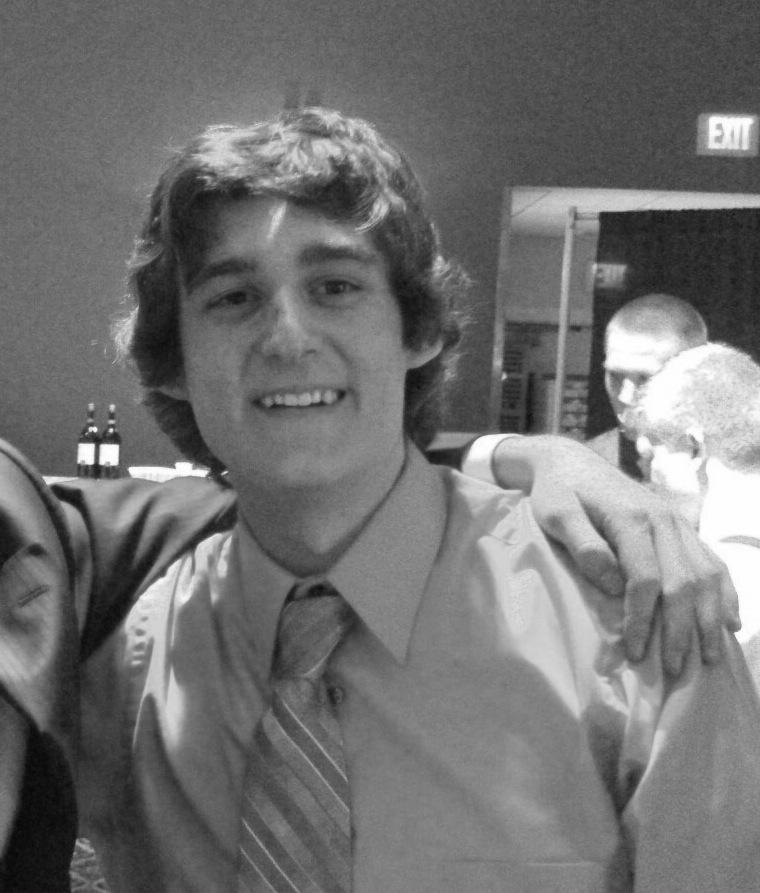
Biomedical Engineering
Dr. Yinghui Zhong
Faculty Mentor
School of Biomedical Engineering, Science, & Health Systems
The use of stem cells is a fairly new and developing treatment for spinal cord injury. One problem that arises in the treatment is the difficulty in causing the stem cells to differentiate correctly. The purpose of this experiment is to test the effectiven ess of a small molecule inhibitor in aiding the differentiation of neural stem cells. Cells were plated in one of five groups each fed a different media solution. The five conditions were a control, a high concentration of the inhibitor, a low concentration of the inhibitor, a high concentration of the inhibitor with triiodothyronine (T3), and a low concentration of the inhibitor with T3. The cells were then fixed and stained with DAPI (a nuclear stain) and antibodies that bind to O4 (a protein expressed by immature oligodendrocytes), MBP (a protein expressed by mature oligodendrocytes), or TUJ-1 (a protein expressed by neurons). The cells were observed under a microscope and the percentage of differentiated stem cells was calculated. The results will show if the small molecule inhibitor aids or hinders the differentiation of neural stem cells, which can improve the effectiveness of stem cell treatment.
162
Poster Session A
School of Education
The Effect of Expectations on Children
The present study was performed to determine if there were differences in children’s achievement levels at the end of kindergarten and third grade depending on kindergarten teachers’ levels of expectations for children’s academic performance. Data from the Early Childhood Longitudinal Study (ECLS) from the U.S. Department of Education were used for analysis. Subjects for the study included 8,653 boys and 8,566 girls who were first time kindergarteners. The sample of children used in the ECLS is representative of the national population of kindergarten children. Achievement data were collected in kindergarten and in third grade.



Multivariate Analyses of Variance were performed on children’s achievement levels in reading, math, and general knowledge in kindergarten and reading, math, and science in third grade with levels of kindergarten teacher expectations (low, middle or high) used as the independent variable. “Achievement “at the end of kindergarten and at the end of third grade was used as the dependent variable to compare the short - and long -term effects of kindergarten teachers’ expectations for children.
In kindergarten, there were differences in children’s achievement in reading and math depending on the level of teacher expectations, but not for general knowledge. Kindergarten teacher expectations did not affect third grad e achievement.
Alyssa Rappaport SCHOOL OF ED.
Elementary Education
Dr. Dominic Gullo Faculty Mentor School of Ed.
163
Poster Session B
School of Education




Comparative Study of Low Income, Urban Stu dents and Higher Income, Suburban Education
Dr. Erika Kitzmiller Faculty Mentor School of Ed.

The inequalities between urban education and nonurban education have become very apparent, with urban, low-income schools often presenting higher drop-out rates, drug usage, and disciplinary problems. The achievement gap between these students is often seen as a result of environment and financial issues, both in the school and home. For this project, interviews where students from a one hundred percent low -income, urban middle school were conducted. They were asked questions about their education and comm unity and encouraged to speak freely. I then transcribed and analyzed the interviews for themes, such as what made school difficult, what problems there were with their environment, and how violence in school affected them. Then, I conducted interviews wit h students educated in a suburban middle school, where the expenditure per student was $16,745 yearly, to see what themes were reoccurring in suburban education and which were not. The themes that were found to be more exclusive in the interviews with urban students were those that happened outside of the classroom, such as violence, drugs, and neighborhood issues, while both groups of students found school frustrating and thought their teachers were inadequate.
Poster Session B
164
School of Education
One of the many controversial issues in education today is whether or not the arts should be taught and funded in public schools. According to research performed by the National Endowment for the Arts, “Eighth graders who had high levels of arts engagement from kindergarten through elementary school showed higher test scores in science and writing than did students who had lower levels of arts engagement over the same period” (Catteral, Dumais, Hampden-Thomson, Gillian, & Dumais, 2012, p. 12).

Using prior achievement and economic status as controls we performed a multiple regression analysis to compare children who received greater amounts of music exposure in the classroom with children who received smaller amounts in order to discover the relationship of music exposure and first grade children’s math and reading standardized test scores. We hypothesized that music would have a greater effect on math scores than reading scores. While both prediction models showed s tatistical significance, in the math regression music accounted for 1.4% of the model’s variance for the children’s achievement while in the reading regression music accounted for 1.1% children’s achievement, leading us to conclude that music exposure contributes slightly more to math achievement than to reading achievement.
Stein SCHOOL OF ED. Elementary Education & Special Education



 Dr. Michel Miller Faculty Mentor School of Ed.
Dr. Michel Miller Faculty Mentor School of Ed.
165
Poster Session A
The relationship between the amount of exposure to music in the clas s room and performance in math and reading
Index by student college
College of Nursin g & Health Professions
Antoinette Westphal College of Media Arts & Design
11-13, 15-24, 26, 27, 66
Bennett S. Lebow College of Business
29, 31-44
College of Arts & Sciences
28, 45, 46, 48-61, 63-65, 67-69, 71-76, 125, 127130, 132, 134-137, 144, 151
College of Engineering
25, 47, 62, 70, 77-102, 104-106, 108-112, 115123, 141, 142, 145, 146, 156
124
Goodwin School of Professional Studies
138
iSchool: College of Information Systems & Technology
30, 139, 140
Pennoni Honors College
14
School of Biomedical Engineering, Science, & Health Systems
103, 107, 113, 114, 126, 131, 133, 147-150, 152155, 157-162
School of Education
163-165


166
32
Animation & Visual Effects
22, 23
Architectural Engineering
106
Architecture 11, 12
B
Biological Sciences
48 -61,65, 125, 127 -130, 132, 134, 135
Biomedical Engineering
103, 107, 113, 114, 126, 131,
133, 147-150, 152-155, 157162
Business & Engineering
29
Business Administration
34, 40, 43
C


Chemical Engineering
47, 62, 78-88
Chemistry
46, 63
Civil Engineering
89
Computer Engineering
94, 96, 100, 102, 117, 141,
142
Computer Science
25, 77, 91
Custom- Designed Major
14
Index by student major
D Design & Merchandising
15 E Economics
31, 33, 39
Electrical Engineering
92, 93, 97, 99, 101, 108
Elementary Education
163, 165
Engineering
156
Environmental Engineering
Fashion Design
16 -18
Film & Video
19
Finance
35, 36, 41, 42
Game Art & Production
21, 66
Graphic Design
20
167 A Accounting
90 F
G
Index by student major
Systems
Design


38, 44 Materials Engineering 105, 109, 110, 118, 122, 145,
28, 45, 69, 71, 144
Mechanical Engineering
95, 98, 104, 111, 112, 115, 116, 119-121, 123
168 I Information
30 Information
140
24 Interior
13
International
37 M Marketing
146
Technology
Interactive Digital Media
International Area Studies 64, 67, 68
Business
Mathematics
N Nursing 124 P Philosophy 137 Physics
Product
Psychology
S Secondary
164 Software
139 Sport
138
72 -75
Design 26, 27
76, 136, 151
Education
Engineering
Management
Index by poster session & student college
Poster Session A
Antoinette Westphal College of Media Arts & Design
11-13, 16-18, 22, 23, 26, 27


Bennett S. Lebow College of Business
33, 36-40, 43
College of Arts & Sciences
28, 45, 49, 50, 53, 54, 60, 61, 63, 64, 69, 71, 73-75, 127-130, 137, 144, 151
College of Engineering
62, 70, 78-80, 83, 88, 89, 92-97, 104, 105, 115-121, 141, 142, 145, 146
College of Nursing & Health Professions
124 iSchool: College of Information Systems & Technology
139, 140
School of Biomedical Engineering, Science, & Health Systems
147, 149, 150, 153, 154, 160, 161, 162
School of Education
165
169
Index
by poster session & student college
Poster Session B
Antoinette Westphal College of Media Arts & Design
15, 19-21, 24, 66
Bennett S. Lebow College of Business
29, 31, 32, 34, 35, 41, 42,
44
College of Arts & Sciences
46, 48, 51, 52, 55-59, 65,
67, 68, 72, 76, 125, 132, 134-136
College of Engineering
25, 47, 77, 81, 82, 84-87, 90, 91, 98-102, 106, 108112, 122, 123, 156
Goodwin School of Professional Studies
138
iSchool: College of Information Systems & Technology
30
Pennoni Honors College
14
School of Biomedical Engineering, Science, & Health Systems
103, 107, 113, 114, 126,
131, 133, 148, 152, 155, 157-159


School of Education
163, 164
170
Special Thanks


We would like to extend our sincere gratitude to all Faculty Mentors, Graduate Students, and others at Drexel University who have helped teach, guide, and mentor these STAR Scholars.
The STAR Scholars’ Program helps shape these students’ academic and professional futures for years to come, and it would not be possible without your participation.
We applaud and thank you.
171



The STAR Scholars Program is administered by the Office of Undergraduate Research, a unit of the Pennoni Honors College.











 Edmund D. Bossone
Edmund D. Bossone
















 Maria Ross AWCOMAD Architecture
Maria Ross AWCOMAD Architecture






















 Mr. David Deneen Faculty Mentor Film & Video
Mr. David Deneen Faculty Mentor Film & Video















 Mr. Michael Glaser Faculty Mentor Product Design
Mr. Michael Glaser Faculty Mentor Product Design















 & Engineering
Mr. Neil Desnoyers Faculty Mentor Decision Sciences
& Engineering
Mr. Neil Desnoyers Faculty Mentor Decision Sciences






 Dr. David Becher Faculty Mentor Finance
Dr. David Becher Faculty Mentor Finance








 Dr. Wesley Gray Faculty Mentor Finance
Dr. Wesley Gray Faculty Mentor Finance









 Kristina Placek LEBOW Business Administration
Kristina Placek LEBOW Business Administration







 Dr. Vadake Narayanan Faculty Mentor Management
Dr. Carla Messikomer Mentor Project Management Institute
Dr. Vadake Narayanan Faculty Mentor Management
Dr. Carla Messikomer Mentor Project Management Institute

 Phillip Nabedrik LEBOW Accounting & Finance
Dr. Dennis (Haemin) Park Faculty Mentor Management
Phillip Nabedrik LEBOW Accounting & Finance
Dr. Dennis (Haemin) Park Faculty Mentor Management

















 Dr. Sean O’Donnell Faculty Mentor Biodiversity, Earth, & Environmental Science
Dr. Sean O’Donnell Faculty Mentor Biodiversity, Earth, & Environmental Science








 Marg V. Rajpara COAS Biological Sciences
Dr. Joseph Bentz Faculty Mentor Biology
Marg V. Rajpara COAS Biological Sciences
Dr. Joseph Bentz Faculty Mentor Biology






 Gowri Gouda COAS
Gowri Gouda COAS


 Janson Jacob COAS
Biological Sciences
Janson Jacob COAS
Biological Sciences



 Dr. Nianli Sang Faculty Mentor Biology
Dr. Nianli Sang Faculty Mentor Biology



 Biological Sciences
Dr. Aleister Saunders Faculty Mentor Biology
Biological Sciences
Dr. Aleister Saunders Faculty Mentor Biology


 Dr. Haifeng (Frank) Ji Faculty Mentor Chemistry
Dr. Haifeng (Frank) Ji Faculty Mentor Chemistry















 Dr. Zoltan Buzas Faculty Mentor History & Politics
Dr. Zoltan Buzas Faculty Mentor History & Politics





 Abu COAS Mathematics Dr. Anatolii
Abu COAS Mathematics Dr. Anatolii












 Charles E. Unruh V COAS Physics Dr. Steve L.W. McMillan Faculty Mentor Physics
Charles E. Unruh V COAS Physics Dr. Steve L.W. McMillan Faculty Mentor Physics


















 Dr. Richard Cairncross Faculty Mentor Chemical & Biological Engineering
Dr. Richard Cairncross Faculty Mentor Chemical & Biological Engineering














 Dr. Giuseppe Palmese Faculty Mentor Chemical & Biological Engineering
Dr. Giuseppe Palmese Faculty Mentor Chemical & Biological Engineering








 Dr. Frank Lee Faculty Mentor Computer Science
Dr. Frank Lee Faculty Mentor Computer Science


 Dr. Kapil R. Dandekar Faculty Mentor Electrical & Computer Engineering
Dr. Kapil R. Dandekar Faculty Mentor Electrical & Computer Engineering






















 Dr. Michel Barsoum Faculty Mentor Materials Science & Engineering
Dr. Michel Barsoum Faculty Mentor Materials Science & Engineering
















 Mechanical Engineering
Dr. Adam Fontecchio Faculty Mentor
Mechanical Engineering
Dr. Adam Fontecchio Faculty Mentor


 Mechanical Engineering
Dr. M. Ani Hsieh Faculty Mentor Mechanical Engineering & Mechanics
Mechanical Engineering
Dr. M. Ani Hsieh Faculty Mentor Mechanical Engineering & Mechanics
 Biomedical Engineering
Dr. Alissa Morss - Clyne Faculty Mentor Mechanical Engineering & Mechanics
Biomedical Engineering
Dr. Alissa Morss - Clyne Faculty Mentor Mechanical Engineering & Mechanics




 Paul Oh Faculty Mentor
Paul Oh Faculty Mentor










 Dr. Paul Oh Faculty Mentor Mechanical Engineering & Mechanics
Dr. Paul Oh Faculty Mentor Mechanical Engineering & Mechanics


















 Joaquin Juat COAS Biological Sciences
Joaquin Juat COAS Biological Sciences
 Davis Faculty Mentor Biochemistry & Molecular Biology
Davis Faculty Mentor Biochemistry & Molecular Biology
 Dr. Tara Davis Faculty Mentor Biochemistry & Molecular Biology
Dr. Tara Davis Faculty Mentor Biochemistry & Molecular Biology





 Oresta Borodevyc COAS Biological Sciences
Oresta Borodevyc COAS Biological Sciences
 Dr. Gerald Soslau Faculty Mentor Biochemistry & Molecular Biology
Dr. Gerald Soslau Faculty Mentor Biochemistry & Molecular Biology


 Dr. Carrie Ann Cusack Faculty Mentor
Dr. Carrie Ann Cusack Faculty Mentor



 Dr. Peter Katsikis Faculty Mentor Microbiology & Immunology
Dr. Peter Katsikis Faculty Mentor Microbiology & Immunology




 Biological Sciences
Biological Sciences
 Dr. Felix J. Kim Faculty Mentor Pharmacology & Physiology
Dr. Felix J. Kim Faculty Mentor Pharmacology & Physiology










 COAS Philosophy Dean Daniel Filler Faculty Mentor Earle Mack School of Law
COAS Philosophy Dean Daniel Filler Faculty Mentor Earle Mack School of Law


 Dr. Ellen Staurowsky Faculty Mentor Sport Management
Dr. Ellen Staurowsky Faculty Mentor Sport Management



 Technology
Dr. William C. Regli Faculty Mentor
Technology
Dr. William C. Regli Faculty Mentor




 Eric Rock COE Computer Engineering
Eric Rock COE Computer Engineering
 Dr. William C. Regli Faculty Mentor iSchool & COE: Computer Science
Dr. William C. Regli Faculty Mentor iSchool & COE: Computer Science
 Robert Taglang COE
Robert Taglang COE


























 Sriram Balasubramanian Faculty Mentor School of Biomedical Engineering, Science, & Health Systems
Dr. Yi - Ching Lee Mentor Center for Injury Research & Prevention CHOP
Sriram Balasubramanian Faculty Mentor School of Biomedical Engineering, Science, & Health Systems
Dr. Yi - Ching Lee Mentor Center for Injury Research & Prevention CHOP







 Sarah Julius SCHOOL OF BIOMED. Biomedical Engineering
Sarah Julius SCHOOL OF BIOMED. Biomedical Engineering
 Dr. Kenneth A. Barbee Faculty Mentor School of
Dr. Kenneth A. Barbee Faculty Mentor School of
 Dr. Kenneth A. Barbee Faculty Mentor School of Biomedical Engineering, Science, & Health Systems
Dr. Kenneth A. Barbee Faculty Mentor School of Biomedical Engineering, Science, & Health Systems




 Berk Ozoglu
SCHOOL OF BIOMED.
Berk Ozoglu
SCHOOL OF BIOMED.











 Faculty Mentor
Faculty Mentor





 Dr. Yinghui Zhong Faculty Mentor School of Biomedical Engineering, Science, & Health Systems
Dr. Yinghui Zhong Faculty Mentor School of Biomedical Engineering, Science, & Health Systems









 Dr. Michel Miller Faculty Mentor School of Ed.
Dr. Michel Miller Faculty Mentor School of Ed.












